The World’s Best Gravel Bike Destinations According to Trek Travel
Share this:.
- Click to share on Facebook (Opens in new window)
- Click to email a link to a friend (Opens in new window)

Everyone seems to be on the hunt for epic gravel bike rides these days.
The explosion of off-road races and social gravel rides in the past several years, coupled with a wide new group of riders who found biking during the COVID-19 pandemic, added more to the popularity of a segment of cycling that had been firmly set on the periphery of the sport for a long time.
But now that trained eyes have been scouring the globe for this niche gravel bike terrain, it looks like no region, city, or community is without a route that gets riders off paved roads.
But with gravel riding, there is always a chance that the road less traveled has been less traveled for a reason. Sometimes gravel rides tend to dead end into unrideable nothingness or land people on or too near to private property for comfort.
Having a knowledgeable guide to help find the path can make all the difference for those seeking out a new gravel bike adventure, and Trek Travel has been working hard over the past couple of years to carve out a role as that guide.

Trek Travel Trips
Trek Travel has been building cycling vacations for more than 20 years. Historically, most of the brand’s global destinations have catered to road cycling and touring. Now, the brand hosts rides in nearly 40 destinations in nearly 20 countries.

Some of the more popular trips include a cross-country trip from Portland, Ore., to Portland, Maine, and a trip to France that places riders on some of the most iconic climbs of the Tour de France.
This year’s new lineup of gravel bike trips centers on terrain that is more rugged and chunky than the brand’s usual road-centered offerings.
Trek Travel’s global network of guides has narrowed down all the gravel they could get their hands on to a shortlist of six destinations that are among the best in the world.
Green Mountains, Vermont
The Green Mountains of Vermont slice through the picturesque towns of Stowe and Waterbury, offering a healthy mix of bike paths and unpaved roads that connect riders to multiple cities and a variety of cool attractions, including the Ben & Jerry’s Ice Cream Factory and the Trapp Family Lodge, of “The Sound of Music” fame.

The mountainous landscape offers challenging climbs and fast, fun descents, along with sweeping views of farmland and foliage.
Whether on gravel or pavement, Vermont offers a lot of elevation to contend with immediately outside of towns. However, it also features a fun causeway over water that requires a small ferry ride to fully cross, architecture sweeping views at every hilltop.
Bentonville, Arkansas: Gravel Bike Hub?
The fact that Bentonville is on a list of cycling trip destinations shouldn’t surprise anyone. The city has become a destination for cyclists in the past several years. However, many Bentonville visitors come to the city for its extensive network of mountain bike trails.

As the town that hosts the Big Sugar Gravel bike race, it’s obvious that Bentonville is a slice of paradise for gravel riders , too.
Bentonville is situated in the Ozark Mountains but is also surrounded by farmland, so Trek Travel guides see it as a perfect spot that can accommodate riders of every skill level.
Amy Davison, one of Trek Travel’s trip designers, said Bentonville is a perfect destination for riders of all skill levels.
“One of the things that I’m most excited about is it’s not as hard as you think it’s gonna be. It’s in the Ozarks, but it’s also surrounded by farmland, and most of the gravel is rolling gravel roads in farmland, so it’s not quite as punchy or hilly as I expected,” Davison said. “I think that will be like the full ticket for absolutely any kind of gravel rider.”
Davison also said the culture of Bentonville provides another big draw.
“It’s just got a vibe that is all about cycling. As soon as you step foot in that town, you feel loved and welcomed and celebrated as a cyclist, and you don’t feel that everywhere you know, and it’s just all over town,” she said. “You see cyclists everywhere you see cycling infrastructure everywhere.”
Trek Travel sets riders up in a hotel just off the town square where riders can hop off the bike and easily explore the Wal-Mart Museum or the Crystal Bridges Art Museum after a long day of riding.
Shenandoah Valley, Virginia
The Shenandoah Valley sits in a bit of a pit between the Blue Ridge and Allegheny Mountains. Trek Travel uses the town of Harrisonburg as a launch pad where riders can jet off into rolling farmland and do some serious climbing.

Davison said Trek Travel connected with a local endurance gravel cyclist who helped design routes in the area. She said the routes in the valley typically involve more mixed terrain, including pavement, as it takes longer to get out into areas with gravel roads. Once there, riders wind rolling farmland, Mennonite communities, and towns that are hundreds of years old.
“It’s lots of farmlands, but also, we’re on the fringe of the mountains, so we get into the National Forest and throw a nice mountain stage at the end of that one to the high point of the state, which will be really cool and set it off a little bit from the other trips.”
Tuscany, Italy: Legendary European Gravel Bike Riding
Tuscany’s gravel is legendary . The Strada Bianche race is named after the white gravel roads in the Crete Senesi south of Siena on which pro riders battle every year. Usually, about a third of that race covers gravel roads.

The region also plays host to the L’Eroica vintage bike festival, on which participants ride on bikes from the ’80s rather than on the latest carbon speed machines of the day.
Davison said the roads of Tuscany also feature challenging hills that connect the northern Chianti region with the southern part of Tuscany.
While the gravel itself may not pose much of a technical challenge, the hills more than make up for it by bringing an added challenge to riders.
Tuscany’s roads are well known, but the culture of food and wine in the region is equally renowned, and riders have plenty of opportunities to sample both.
Girona, Spain: Technical Gravel Bike Terrain
Trek Travel has been running a gravel trip to Girona, Spain , for a while. It previously was the only such trip in the brand’s profile. It also has the distinction of being the ride with the highest degree of technical riding in the gravel bike lineup.

“They’ve got some single-track connectors in there and, in fact, some roads where the van can not follow to provide support,” Davison said. “So to us, we’re going to categorize that as a higher degree of difficulty because that will be different from a regular trip where the van can always follow you. Here they kind of have set points where the van meets everyone, but it definitely has some interesting connectors.”
Aside from single-track connectors, a good bit of the Girona gravel bike scene features sparsely traveled fire roads.
St. Moritz, Switzerland
St. Moritz is a resort town in the Swiss Alps at just under 6,000 feet of elevation. Having hosted the Winter Olympics twice, it’s obvious that there is plenty of extremely challenging terrain in the area to challenge cyclists when the snow melts.
Davison, however, said the idea behind the gravel trip to St. Mortiz was to offer a bit of an easier ride experience in which riders stick to the valleys rather than the frosted peaks that surround them.
She said the valleys around St. Moritz are littered with dirt roads that do not have major technical challenges, along with bike paths surrounded by mammoth peaks of the alps that provide a stunning backdrop all day.
Getting Into Gravel Biking
The new gravel bike offerings from Trek Travel give riders a new way to experience a destination by bike. It can be seriously challenging to find gravel roads and safely traverse them without experience or the ability to bail, especially overseas.

Trek Travel trips feature full support from a chase van, GPS devices, on-bike guides, and a fleet of highly spec’d Trek Checkpoints , so riders don’t have to worry about the hassle of traveling with or shipping their own bikes. Trek Travel guides also hand-pick hotels, restaurants, and off-bike activities to make sure riders get the most out of the region they visit.
“(We’ve seen) the trends of people wanting to buy gravel bikes and kind of get away from traffic in some cases, or just have that little more of a sense of adventure being out in the wilderness, but not necessarily mountain biking,” said Meagan Coates of Trek Travel. “So we decided to develop a bigger collection. I think it’s just kind of dictated by what people are liking to ride and the interest in providing more experiences for folks.”
The beauty of these rides is that they are just out there for anybody to ride, but having the help of a company like Trek Travel makes logistics simple.
Trek Travel offers trips to the destinations above at price points ranging from $1,799 to $3,299.

'Sakai City': An Inspiration for Japan's Emerging Gravel Scene
A new generation of Japanese cyclists discovers the joy of gravel riding in the culturally rich port of Sakai City. Read more…

Mark Wilson is a freelance journalist for GearJunkie and BikeRumor. Mark has been writing about cycling, climbing, outdoor events and gear for more than a year. Before that, he spent more than a decade as a journalist at major daily newspapers in Texas covering crime, public safety and local government. Mark spent every free moment during that time carving up singletrack and gravel, or climbing with friends and family in Texas, Colorado and Mexico. Based in Texas, Mark is always looking for new trails, crags and gear to help navigate the outdoors. As a new dad, he is particularly interested in learning how to share his love of the outdoors with his son.
Follow Us On
Subscribe Now
Get adventure news and gear reviews in your inbox!
Join Our GearJunkie Newsletter
Gear Top Stories Deals
Tailwind on every ride? – See e-bike trips
$250 off your first Cycling or Hiking Vacation – use code at checkout: Explore250
European Classic booking fast – see the trips
- Request a Catalog
- 866-464-8735
Select Date Range
Modal title, popular searches.
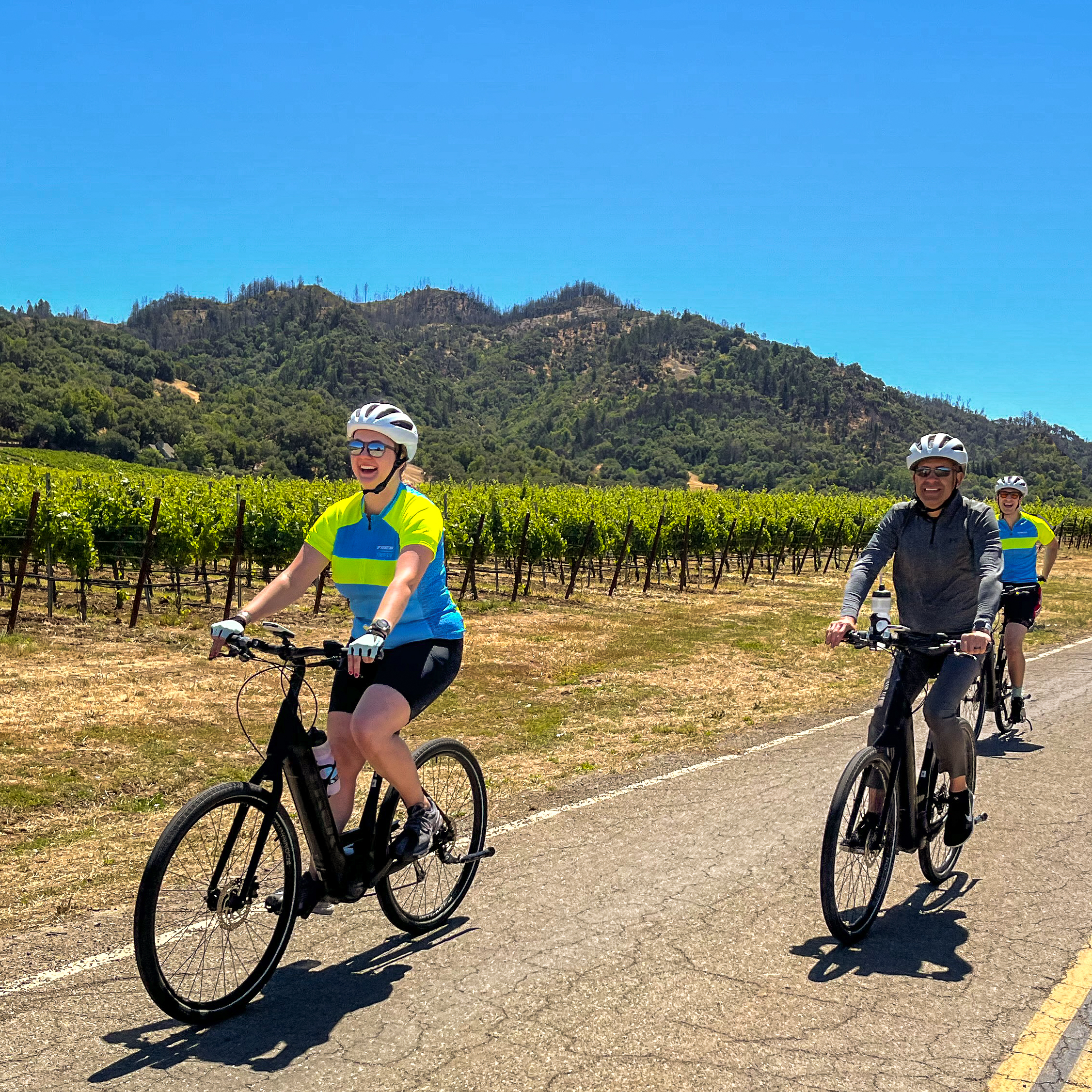
California Wine Country Bike Tour
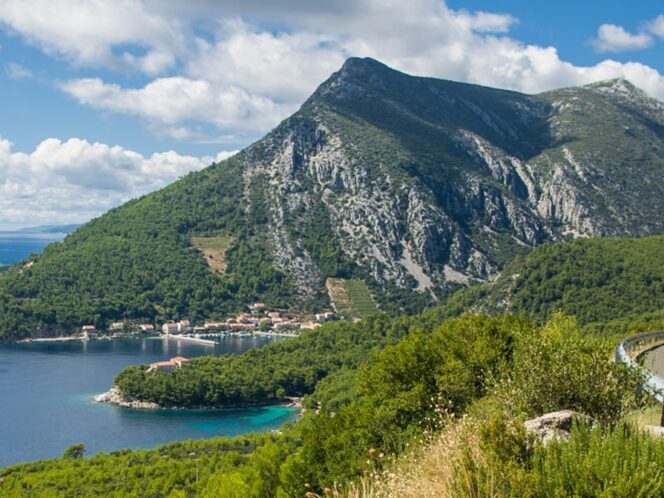
Croatia and The Dalmatian Coast Bike Tour
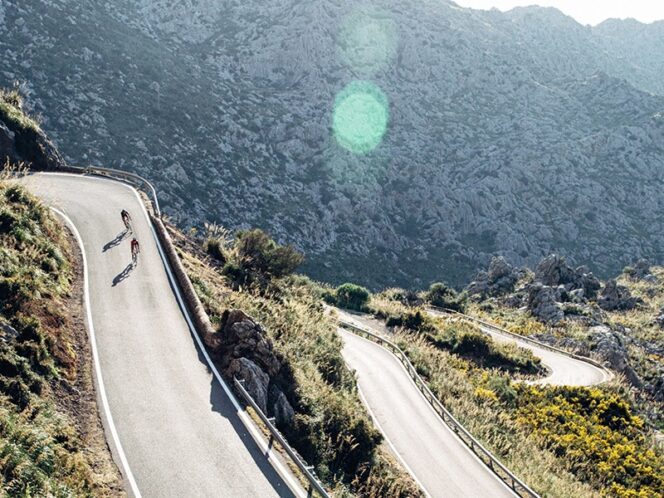
Mallorca 7-Day Ride Camp Bike Tour
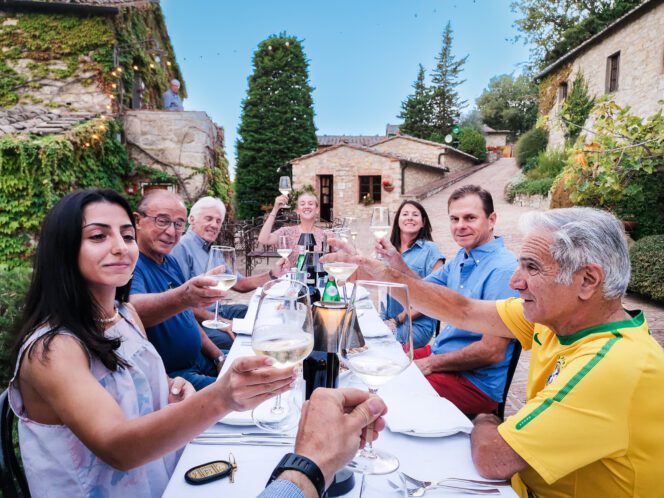
Tuscany Bike Tour
New 2025 Trip Dates
Step into adventure or ride into 2025 on a Hiking or Cycling Vacation of a Lifetime.
Select Destination

Featured 2025 Destinations
Discover our featured destinations and find the perfect trip to satisfy your wanderlust.
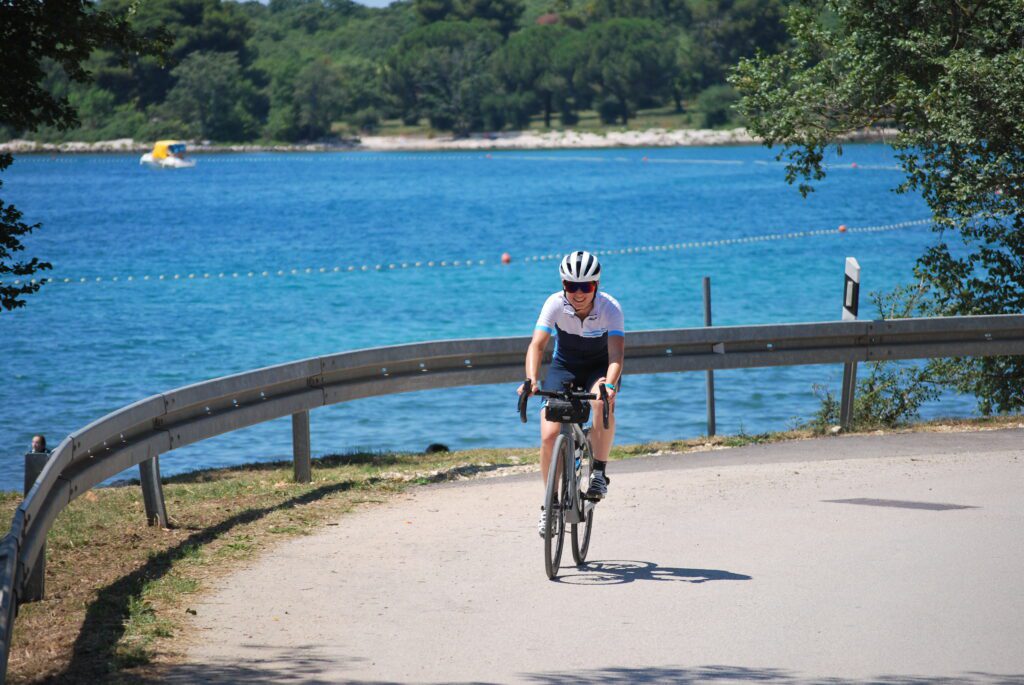
Croatia Bike Tour
Unlock the secrets of Croatia’s Istrian peninsula with its historic villages and the beautiful coastline.

Loire Valley Wine Country Bike Tour
Explore the enchanting Loire Valley on a luxurious bike tour, where France’s rich history comes alive among breathtaking castles and lush vineyards.
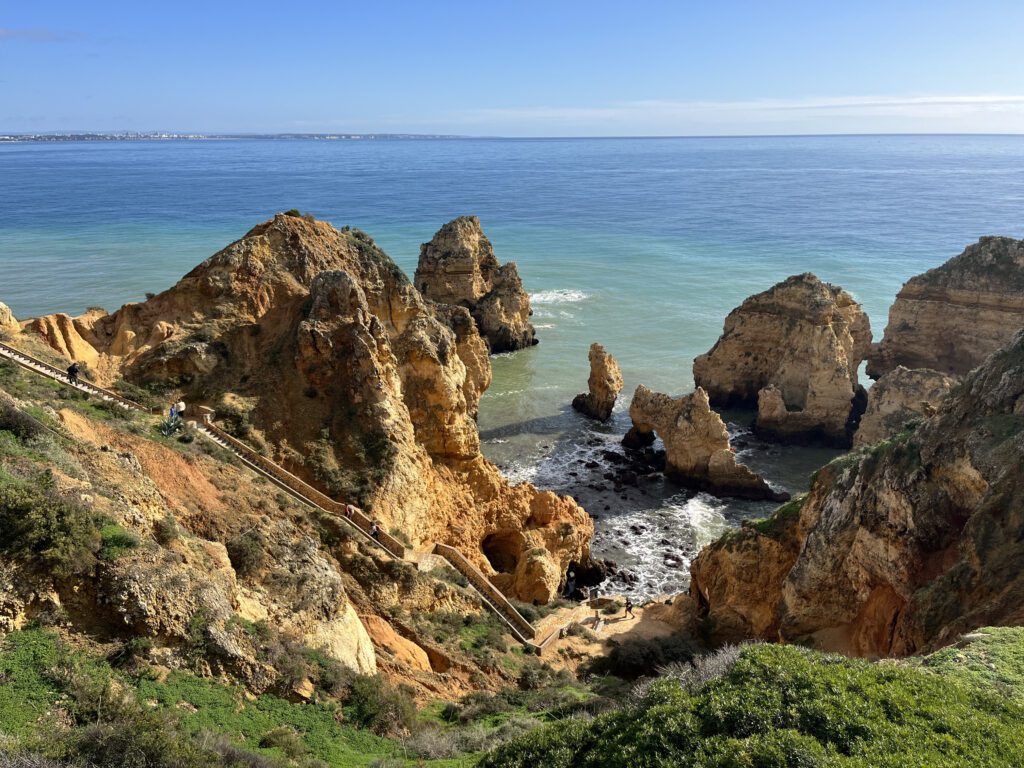
Portugal Hiking & Walking Tour
Discover the natural beauty and rich heritage of Portugal as you hike and walk along the Rota Vicentina trails.
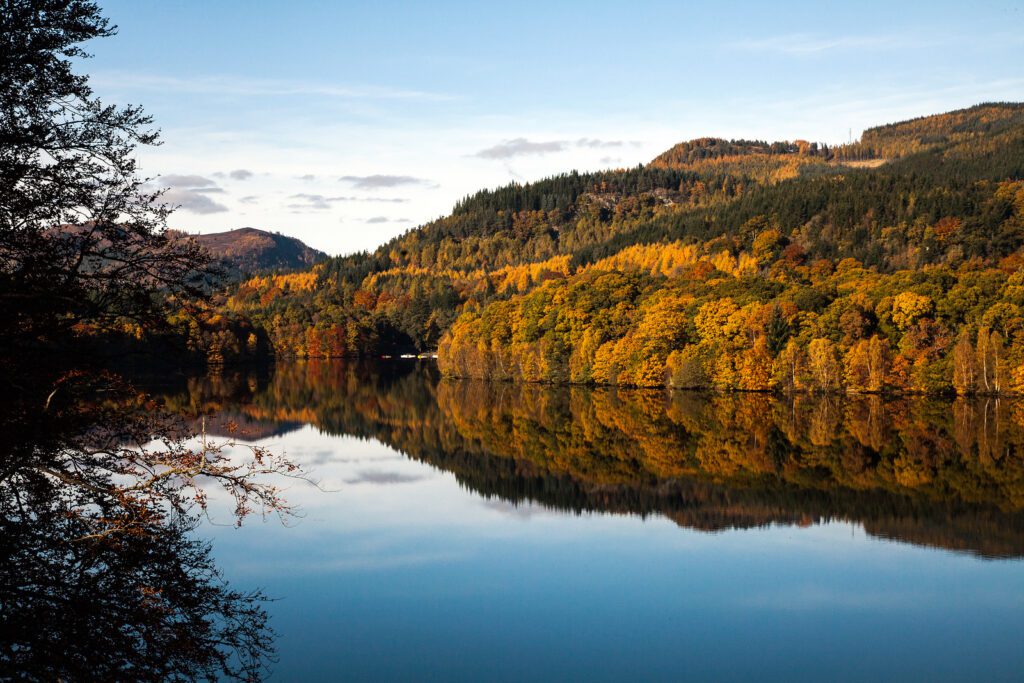
Scotland Hiking & Walking Tour
Explore the marvels of St Andrews, Edinburgh, and the surrounding landscapes on an unforgettable hiking and walking tour.
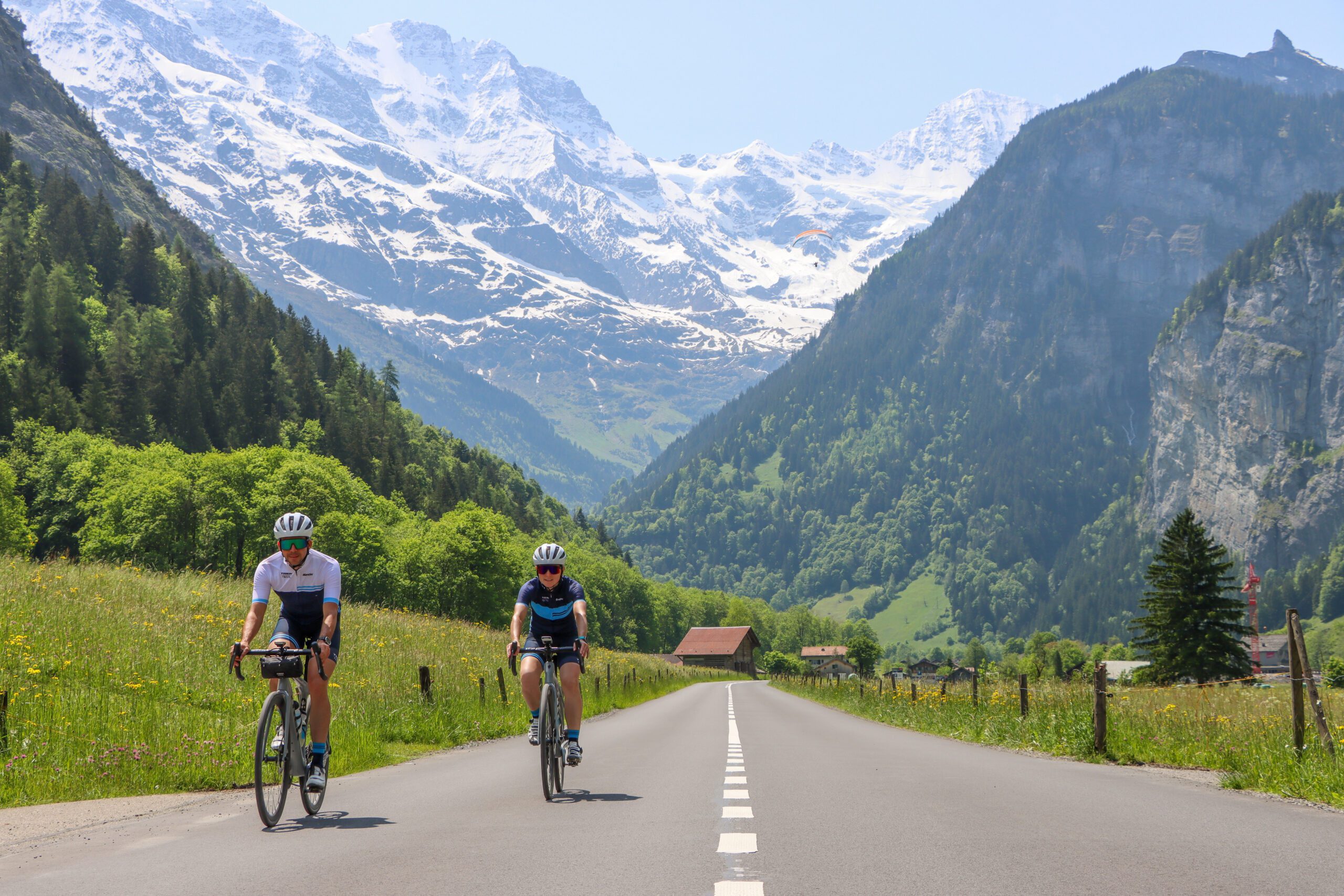
Switzerland Bike Tour
Ride from pristine lakes to snow covered mountain peaks on an unforgettable bike tour in the Swiss Alps.
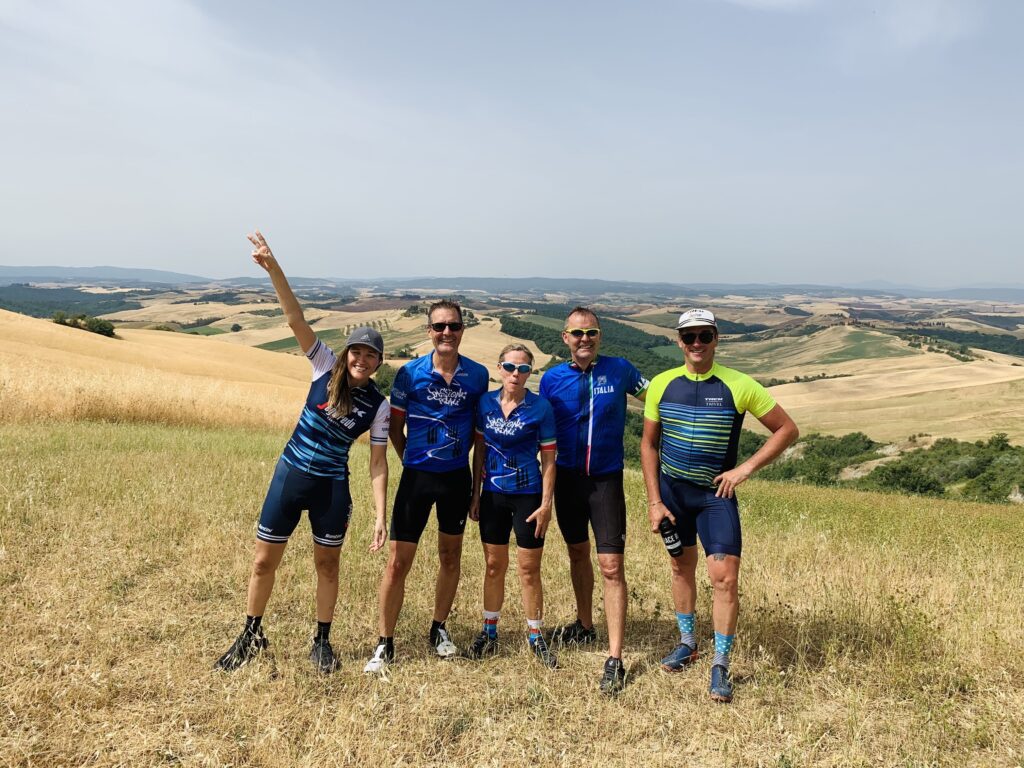
Tuscany Countryside Bike Tour
Discover two of Italy’s premier cycling destinations: lush Umbria, renowned for its exquisite olive oil, and the noble Montepulciano wine region.
Trips for Every Traveler
Whether you are looking for a leisurely vacation through the olive groves in Puglia, an unpaved adventure, or want to test your legs on the climbs of the Tour – we have a trip style for every traveler.
Classic Guided
Hiking + walking, cross country, 20+ years of hospitality.
When you choose us, you’re traveling with a team that holds your memories in the highest regard and are committed to consistently exceeding your expectations.
Why We're Different
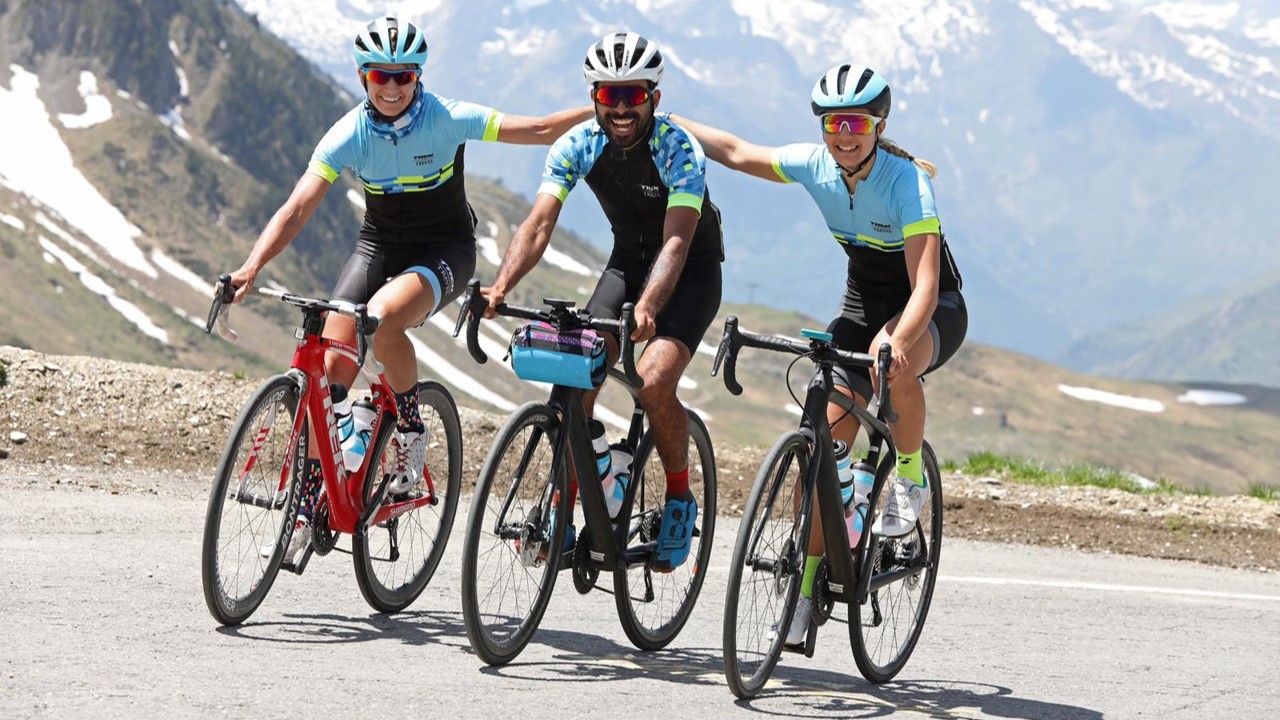
Unrivaled Support
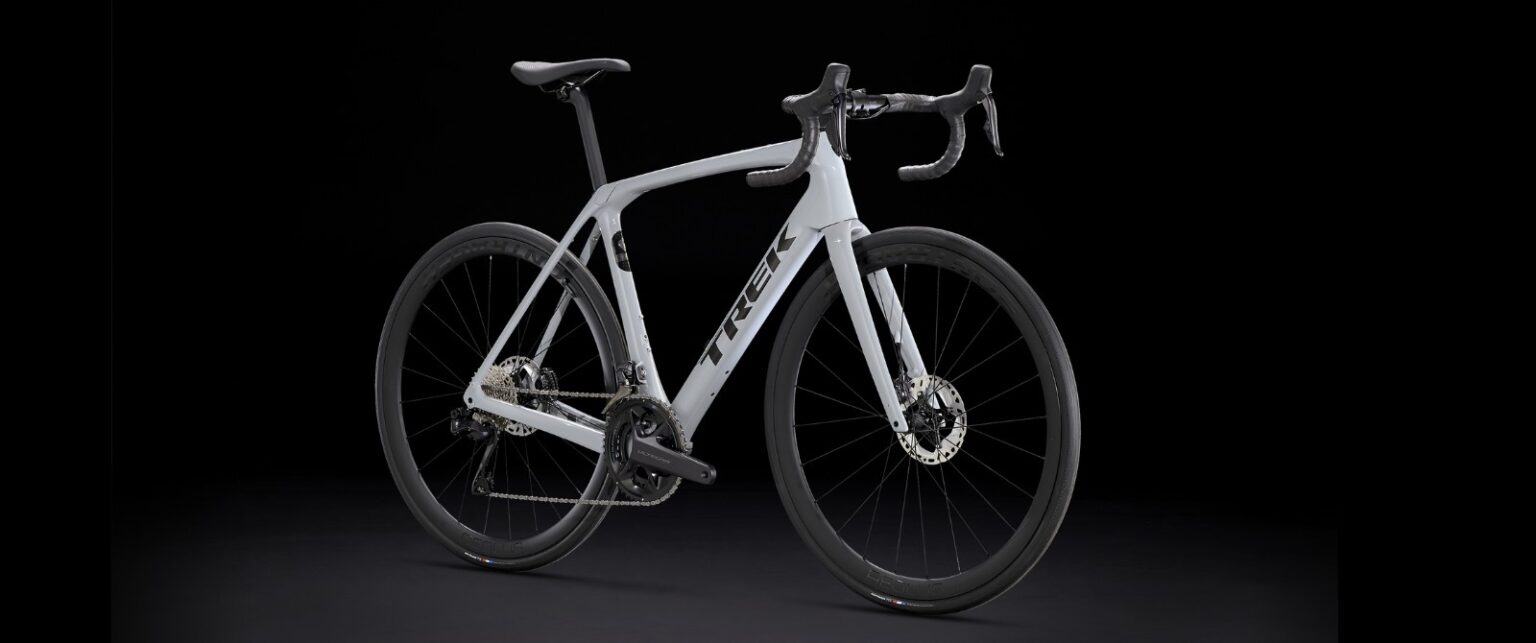
The Best Bikes
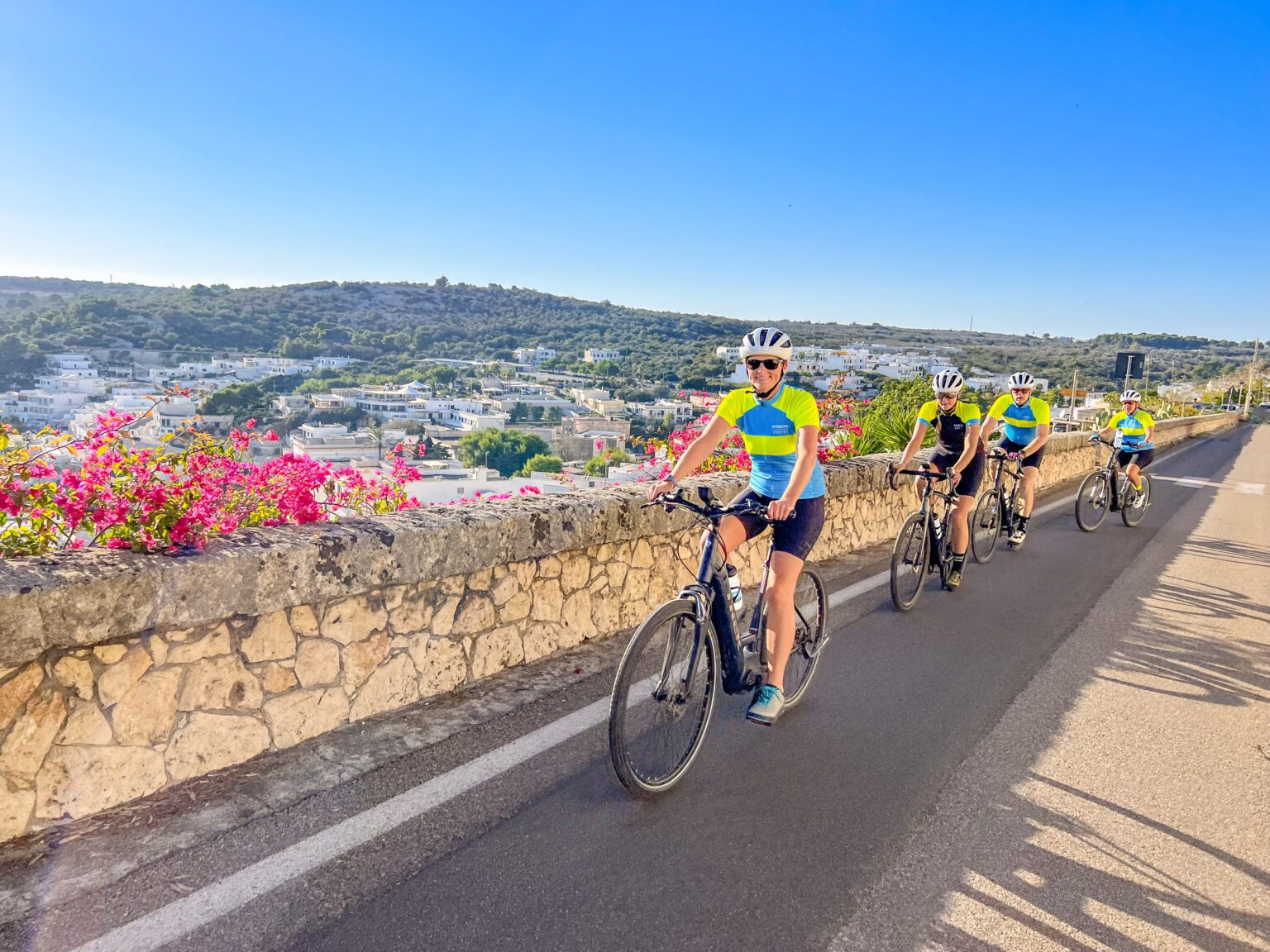
For Every Rider
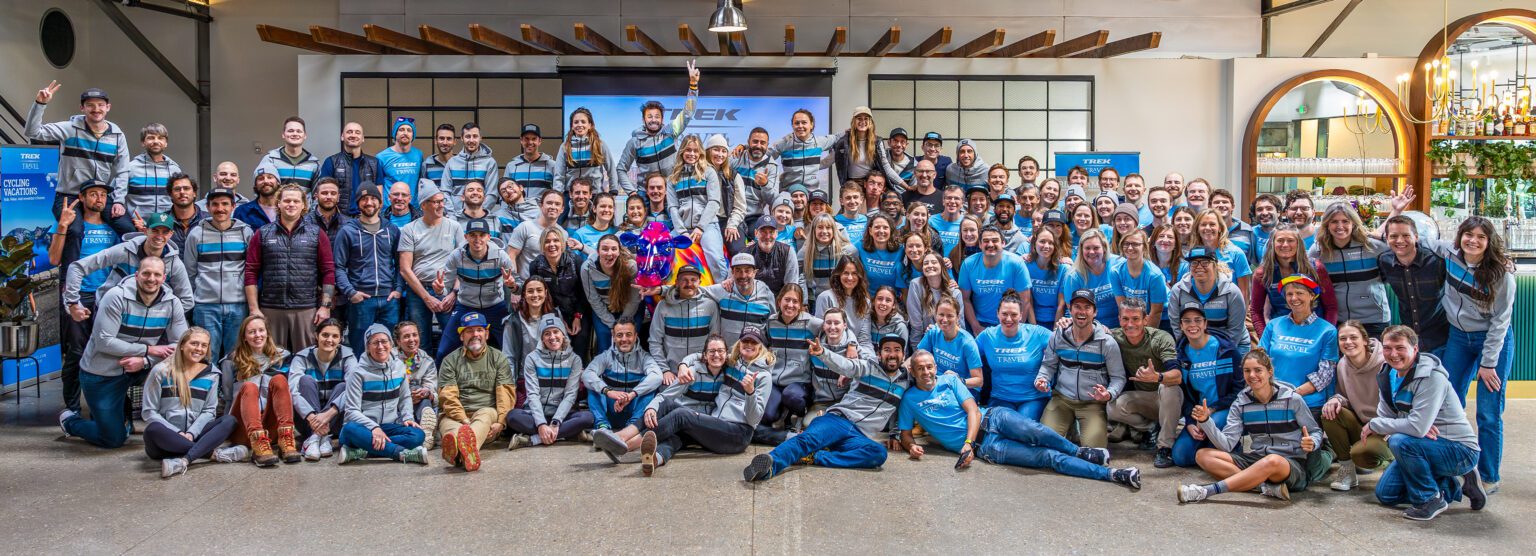
World's Best Guides
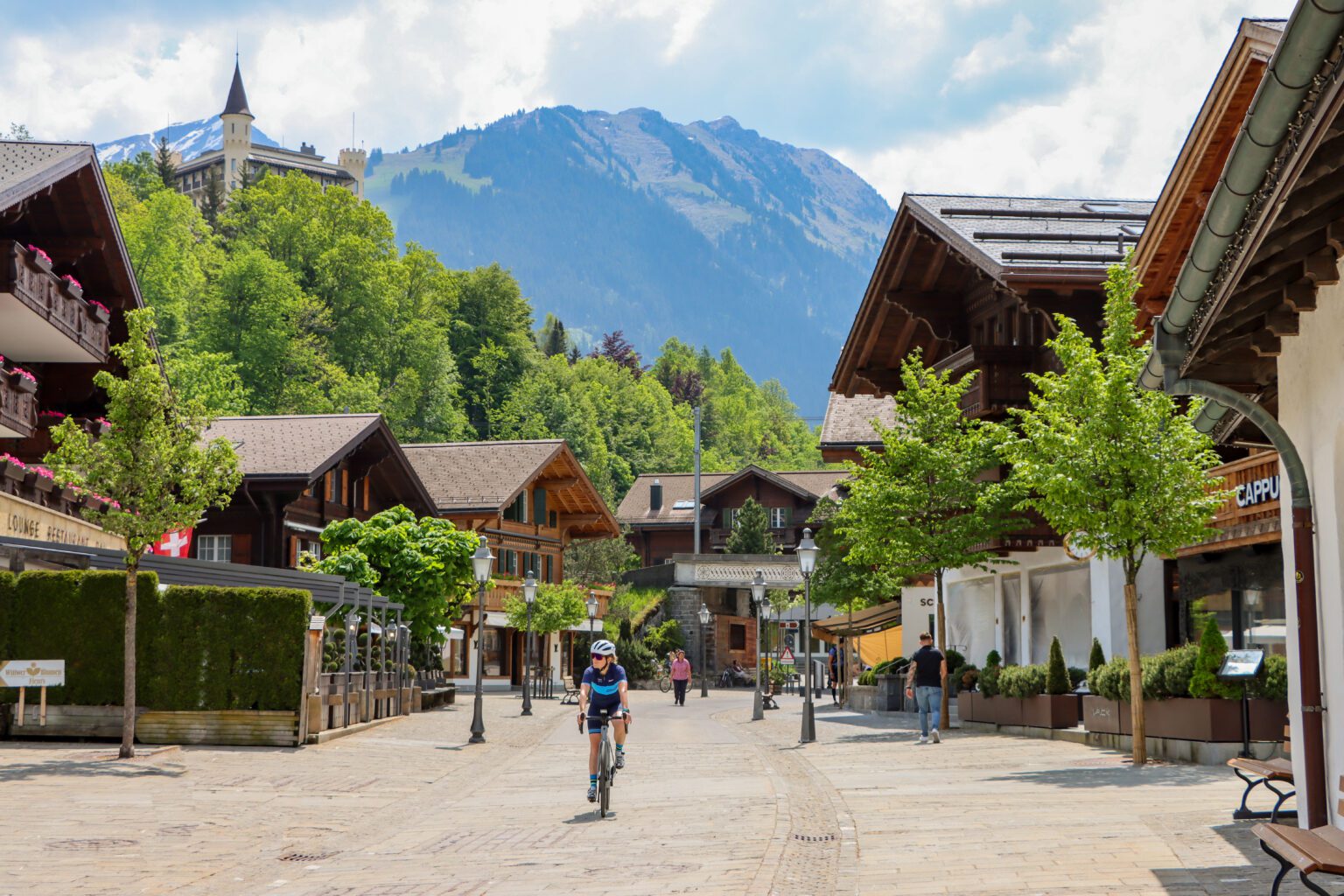
Expertly Designed
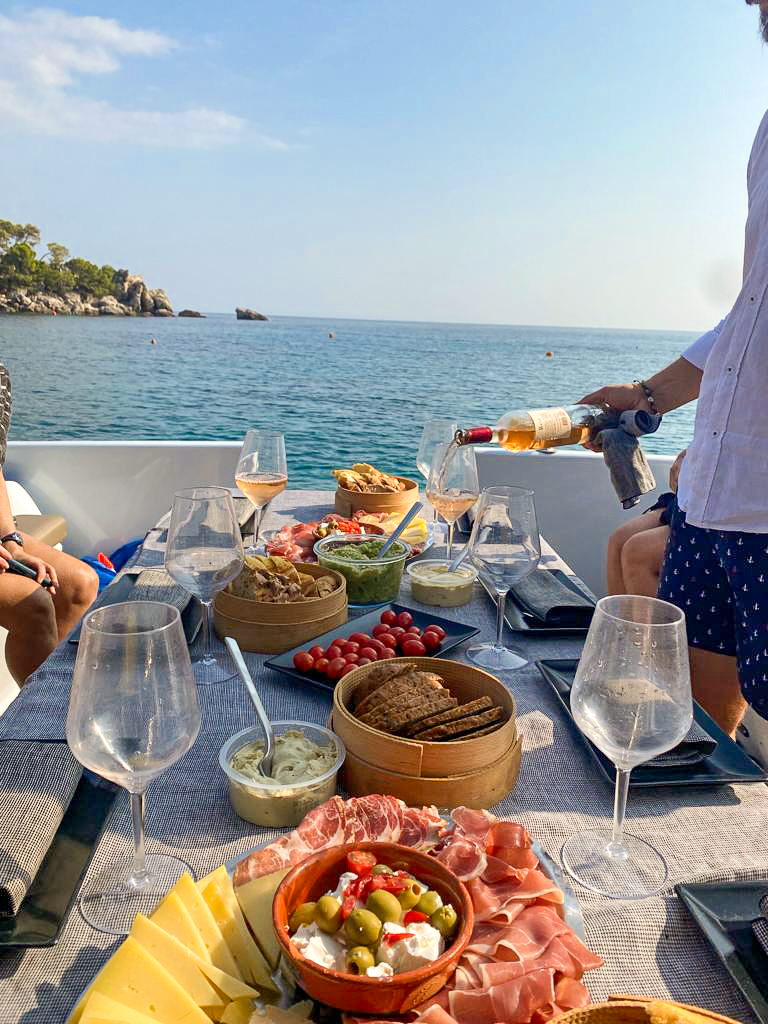
It's Your Day, You Decide
Our mission.
To enrich lives through active travel, deliver experiences of a lifetime, and provide unparalleled hospitality.
What Our Guests are Saying
Active vacations are what we do; the life-changing stories are why we do it.
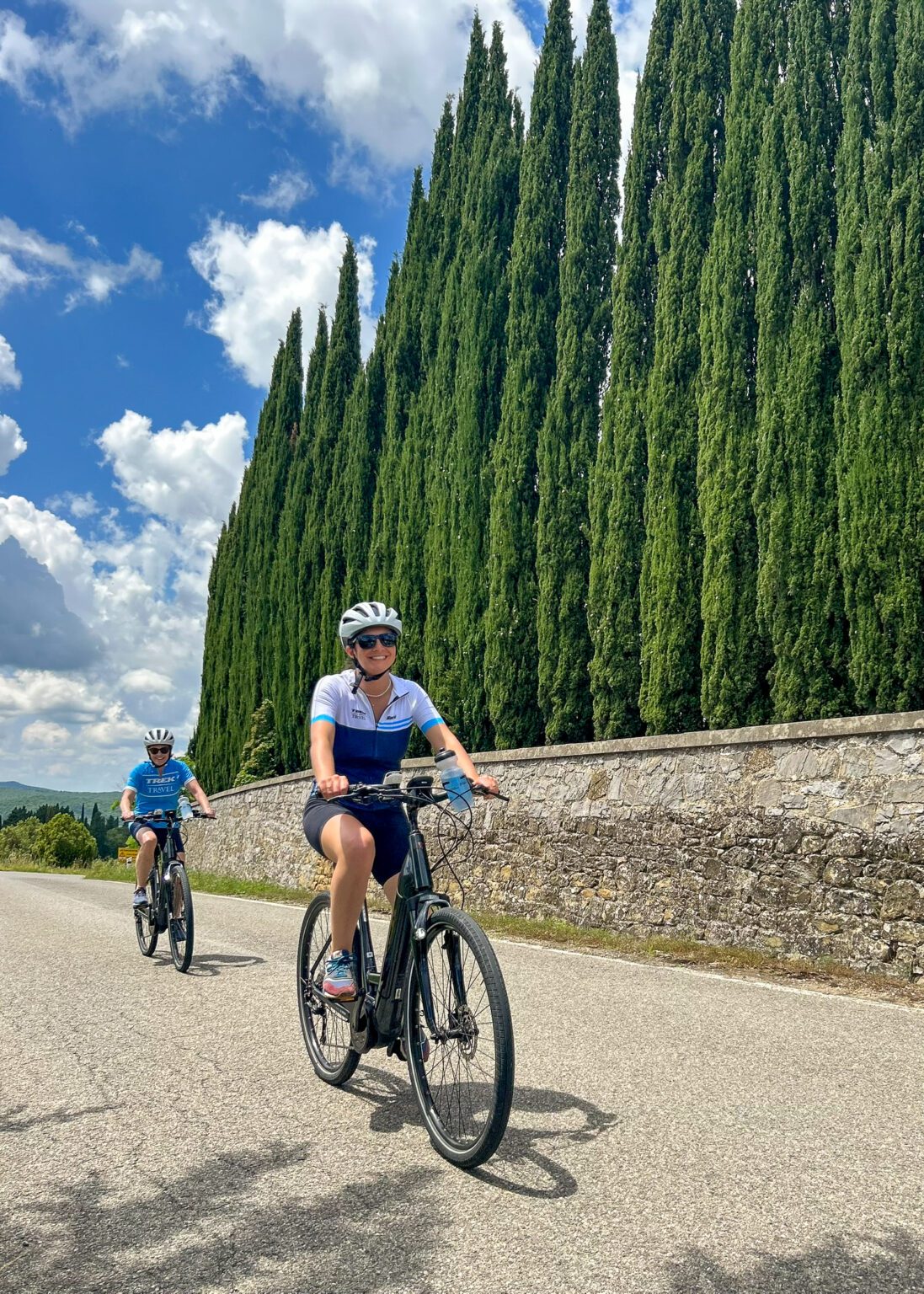
If a date is marked as Private, it is reserved for a private group.
Looking to travel with a small group or looking for a custom date? Call our trip consultants at 866-464-8735
What is the Difference?
Ultimate luxury:.
Savor some of the most spectacular, 5-star properties in the world. Exuding luxury and elegance, these one-of-a-kind accommodations offer the chance to rejuvenate at award-winning spas, dine at Michelin-starred restaurants, and more.
Enjoy luxurious accommodations handpicked for a refined experience. From signature spa treatments to delicious local cuisine, you’ll be more than provided for; you’ll be pampered.
These handpicked hotels provide relaxation and fun in a casual and comfortable environment. Delicious cuisine and great service mix perfectly for a memorable stay.
On select cycling vacations, you’ll stay at a mix of hotel levels, from Explorer to Luxury to Ultimate Luxury. Rest assured, no matter which level of hotel you’re at, our trip designers carefully select every accommodation.
Activity Level
Road : 1-3 hours of riding. Up to 25 mi (40 km). Up to 1,000 ft (300 m).
Gravel: 1-3 hours of riding. Up to 20 mi (35 km). Up to 1,000 ft (300 m).
Hiking: 1-3 hours of hiking. Up to 5 mi (8 km). Up to 1,000 ft (300 m).
Road : 2-4 hours of riding. 20-35 mi (35-60 km). Up to 2,500 ft (750 m).
Gravel: 2-4 hours of riding. 15-30 mi (25-45 km). Up to 2,000 ft (300 m).
Hiking: 2-4 hours of hiking. 4-8 mi (6-12 km). Up to 1,500 ft (450 m).
Road : 3-5 hours of riding. 25-55 mi (40-85 km). Up to 4,500 ft (1,500 m).
Gravel: 3-5 hours of riding. 20-40 mi (35-60 km). Up to 3,000 ft (900 m).
Hiking: 3-5 hours of hiking. 6-10 mi (9-16 km). Up to 2,000 ft (600 m).
Road : 4+ hours of riding. 40-70 mi (60-110 km). Up to 8,000 ft (2,400 m).
Gravel: 4+ hours of riding. 30-50 mi (45-80 km). Up to 4,000 ft (1,200 m).
Hiking: 4+ hours of hiking. 7-15 mi (11-24 km). Up to 4,000 ft (1,200 m).
What are your trip styles?
Classic - reserve:.
Savor the finer things as you relax in luxurious 5-star accommodations and wine, dine, and ride in some of the most unforgettable destinations around the world.
Classic - Signature:
Explore beautiful destinations by bike, enjoy extra inclusions, savor delicious local cuisine, and enjoy the perfect mix of accommodations.
Classic - Discover:
Enjoy a casual cycling vacation with fantastic routes and comfortable accommodations.
Train like the pros in some of their favorite riding destinations.
See the pros in action at the biggest cycling events of the year.
Cross Country:
Tackle an epic adventure that takes you point-to-point across mountains, countryside, and more.
Self-Guided
Enjoy a bike tour on your schedule with just your chosen travel companions.
Single Occupancy
Sometimes it’s more convenient and comfortable to have your own room while on vacation. We understand and that’s why we offer a Single Occupancy option. The additional price guarantees a private room all to yourself
This website uses cookies to ensure you get the best experience on our website.

Reviews, Ride Experiences, Calendar, Resources & More!
Trek Travel Tuscany Gravel Bike Tour: Day One!
If you missed the big news, JOM and Lady Gravel Cyclist (aka LGC) joined Trek Travel for their Gravel Bike Tour in the Tuscany region, which began on May 29, 2023 and ended on June 2nd, 2023.

“You’ll meet your guides in Florence, a marvel of Renaissance art and where you’ll find the Uffizi galleries, the Duomo, and the Galleria dell’Accademia, home of Michaelangelo’s David. From here you’ll take a one-hour private shuttle to the charming town of Villa a Sesta.”

“After a delicious Tuscan, picnic-style lunch, you’ll be fit to your Trek Checkpoint gravel bike, or Trek Domane Plus eBike, and then we’re off on a rolling, scenic ride through stunning cypress trees and to the impressive Abbadia a Monastero, a monastery dating back to the 9th century. We’ll arrive at our hotel where you can relax, unpack, and prepare for our first night’s dinner and social hour at the hotel.”
Trek Travel Tuscany Gravel Bike Tour Day 1 Video
Alternative video link for those reading via email subscription ..
For those unaware, Trek Travel has been in the business of cycling experiences for many years, mostly on the pavement, but we’re very excited to see they’ve expanded their portfolio into the world of gravel cycling! Trek Travel’s gravel bike tours combine mixed-surface roads in the company of guides well acquainted with the area, aboard world class bikes such as the Trek Checkpoint, and the company’s e-Bike, the Domane +, a review of which is posted in the link below.

Also linked below, a link to signup for Trek Travel’s newsletter to learn more about the new destinations Trek Travel has included in their gravel lineup, which include Bentonville, Shenandoah Valley, Swiss Alps, Girona, and Vermont. More destinations are going to be added next year, so you will not want to miss out on getting early access to those new dates and destinations!
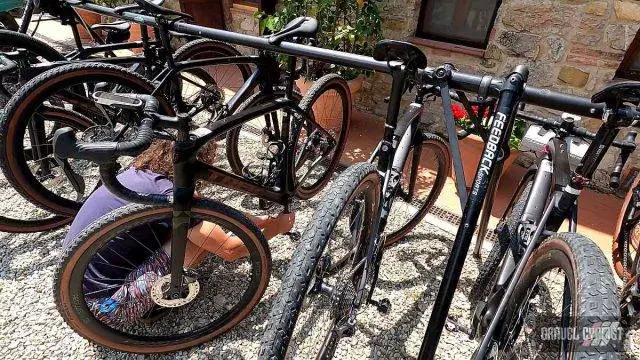
If any of our viewing audience is interested in any of Trek Travel’s gravel trips, use promo code GRAVCYCLIST23 to save yourself $200 off your first trip. Don’t be shy, come along for the fun!
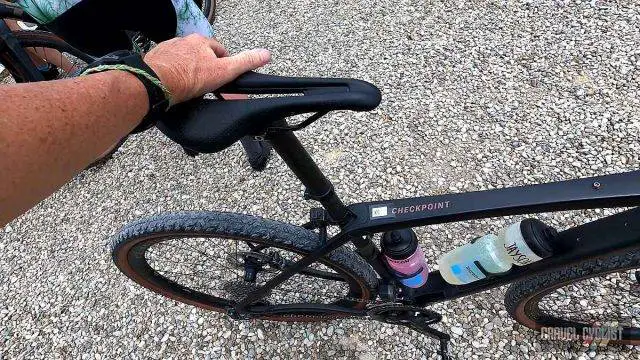
Visit the Trek Travel Website for more information. Day Two coming soon!
Support Gravel Cyclist: Buy Me a Coffee – https://www.buymeacoffee.com/gravelcyclist OR Patreon – https://www.patreon.com/gravelcyclist
Links of Interest:
- Trek Travel – https://trektravel.com – Use promo code GRAVCYCLIST23 to save yourself $200 off your first trip.
- Trek Travel Newsletter Signup – https://trektravel.com/contact-us/newsletter-sign-up/
- Trek Travel’s Gravel Destinations – https://trektravel.com/trip-type/gravel/
- 2023 Trek Bicycles Domane SLR + eBike Review
- 2023 Trek Bicycles Domane SLR Review
- Gravel Bike Tyre Pressure Guidelines
- Tailwind Nutrition (JOM’s choice of on-the-bike hydration)
- Gravel Cyclist’s Route Library
Don’t forget to Like the Gravel Cyclist Facebook page , follow G.C. on Instagram , and subscribe to our Youtube Channel . We are also on Twitter !
No comments yet. Why don’t you start the discussion?
Leave a Reply Cancel reply
Your email address will not be published. Required fields are marked *
Save my name, email, and website in this browser for the next time I comment.
Notify me of new posts by email.
This site uses Akismet to reduce spam. Learn how your comment data is processed .
Trek Checkpoint SL 7 gravel bike review: a true all-terrain vehicle
Trek's 'Adventure focused' lives up to bikepacking expectations, with stable geometry and practicality
- Sign up to our newsletter Newsletter
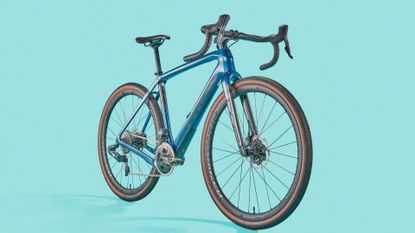
The Trek Checkpoint SL 7 is an outstanding all-rounder when it comes to all-terrain riding. A true ATV, the Checkpoint provides a planted, confidence-inspiring ride feel which is great for tackling more technical terrain. It might not be as supple as the likes of the Cannondale Topstone, but if long-distance trekking on tough terrain is your bag, the Checkpoint SL 7 is right on the money.
Planted ride feel
Compliant frameset
Handles luggage weight very well
In-frame storage is genuinely useful
Rugged ride feel won't be for everyone
You can trust Cycling Weekly. Our team of experts put in hard miles testing cycling tech and will always share honest, unbiased advice to help you choose. Find out more about how we test.
- Value and conclusion
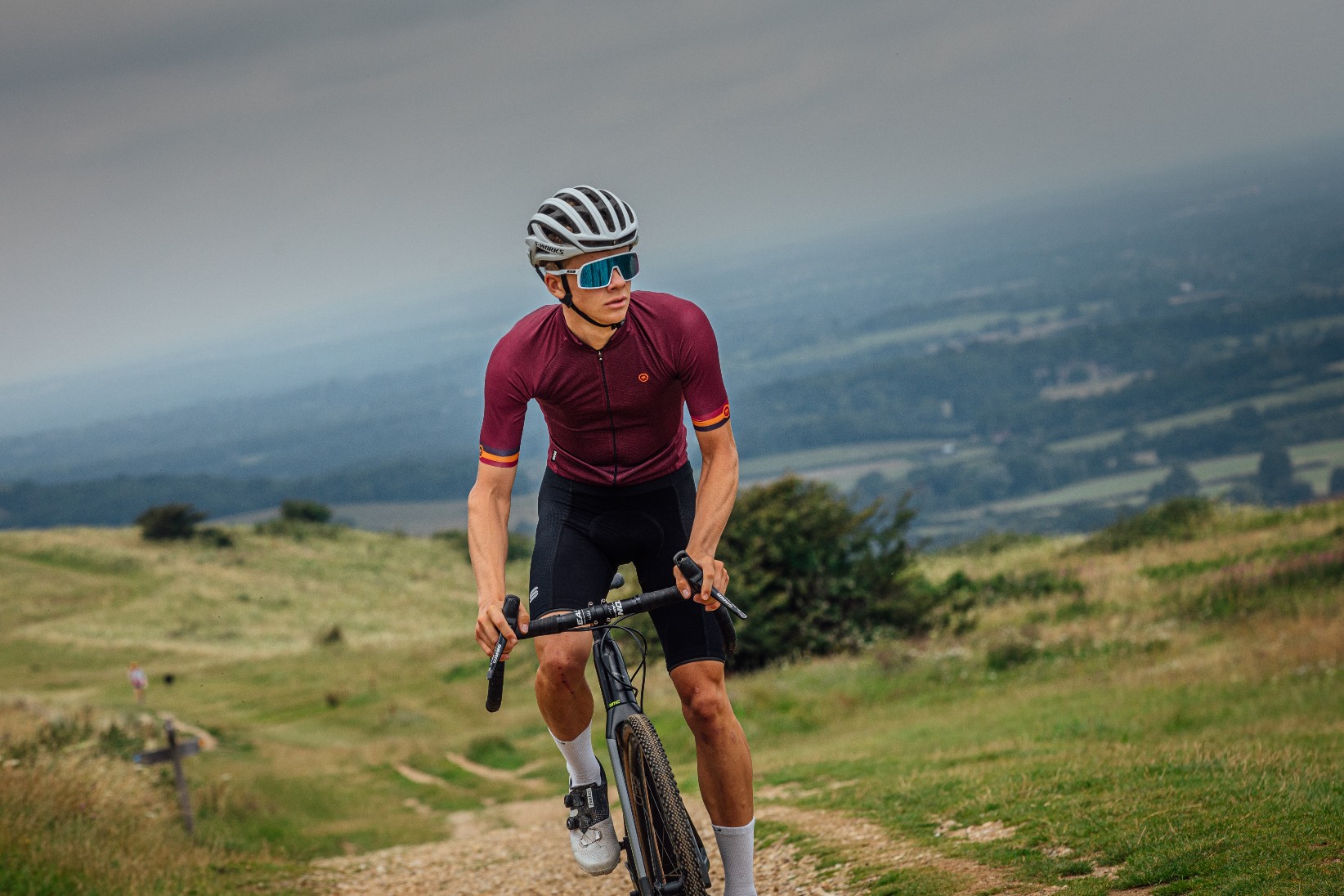
Gravel riding is a discipline that holds a vast range of different bikes within its sphere, from gravel race bikes, to do-it-all rugged machines. Trek markets the Checkpoint SL range as its 'Adventure-focused' line, and I think they've got it spot on.
Having tested the Checkpoint SL on everything from roaming local trails to an overnight bikepacking excursion (fully laden with camping gear) I can confirm that if you are on the hunt for your next adventure gravel machine, then the Checkpoint SL 7 might just be one of the best gravel bikes on the market.
Trek Checkpoint SLR 7: Frameset
Since its last iteration which came out all the way back in 2018, Trek has given the new Checkpoint platform some serious revamping. The tubes are much chunkier now, giving the bike a much more industrial aesthetic.
Trek still includes an 'IsoSpeed decoupler' at the seat stay junction - this is a pivot system, similar to Cannondale's 'Kingpin' which allows the seat post to flex fore and aft. This, alongside a standard 27.2mm seat post, is designed to give the bike some extra compliance where the rider will feel it most. Though, I found it doesn't offer quite as much real-world travel as the Cannondale equivalent.
One big change over the last iteration is the extinction of 'Stranglehold'. The system enabled chain stay length adjustment of up to 15mm (and single speed conversion!), which meant riders could alter the geometry between a slightly more stable ride (with longer chainstays), or a more playful one (shorter chain stays).

27.2mm carbon seatpost and ISO speed help compliance
Trek has opted for 435mm chainstays across all models - 10mm longer than the previous shortest setting. This does change the ride feel, which I will get onto, making for a more stable feeling rear end. Once again this characterizes the Checkpoint SL at the more adventure end of the gravel riding spectrum .
The in-frame storage is perhaps the most radical part of this bike's dedication to long-distance riding, and It works well. A section of the frame underneath the bottle cage on the downtube can be quickly released via a small lever, revealing room for a tool roll, and spares. While the 'boot capacity' is nothing overwhelming, it does provide a neat place to hide away annoying spares, like the odd tube, or smaller mini-pumps .
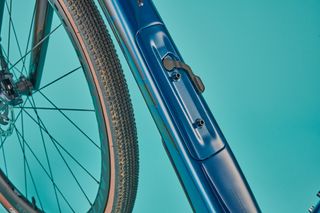
In-frame storage for tools
Trek has also included a plethora of mounting points - three bosses can be found on each fork blade, and the bike even holds the capability to mount a rear rack, which I think is a very underrated option for modern-day bikepacking, even if it isn't the most trendy. As well as these options, the usual suspects can be found with mounting points on the top tube, and underneath the down tube as well.
Notable too is the tire clearance. The new Checkpoint SL is good for 45mm tires when coupled with a 700c wheelset, but this can be upped to a 2.1 inch (53.3mm) for those who like the playful handling of a slightly smaller 650b wheelset. For the rough, and extremely varied terrain in my local testing ground, this too offered some much needed ride forgiveness.
Trek Checkpoint SLR 7: Components
The full Trek Checkpoint SL line-up spans a price range from $3,399.99 / £3,700.00 with the SL 5 to £6,400 with the SL 7, which is the model I had on test. This may be the top of the range for the 'SL' frameset, but it's worth noting with the SLR framesets, builds are priced as high as $12,249.99 / £12,000.00.
Nonetheless, the Checkpoint SL 7 still boasts some pretty high-performance parts, starting with the dependable SRAM Force AXS groupset . Trek opts for a two-by setup rather than a one-by system, which I think, for most consumers, will still be the better option.
43/30t chainrings coupled with a 10-36t cassette provide a wide range of gears, which is great news for long-distance riders, especially those who carry luggage and this never left me feeling under, or over-geared.
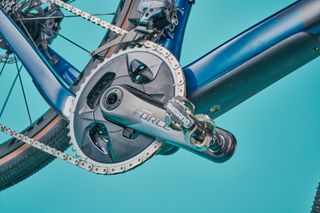
Sram Force AXS groupset throughout
The checkpoint SL 7 rolls on in-house component brand Bontrager Aeolus Pro 3V carbon wheels, which feature a 25mm internal rim width and a particularly loud freehub.
Though both the wheelset, and provided Bontrager GR1 tires are both tubeless-ready, the SL 7 comes out of the box with tubes to get started. Although I didn't set up the tires tubeless, it should be pretty easy, especially with a full Bontrager system. Bontrager provides rim strips, which snap into the Aeolus wheels, and are designed to work with Bontrager tires, meaning tight tolerances can be adhered to throughout the product range.
The finishing kit is a fairly standard affair, which can leave a little to be desired from a price standpoint, but then again it should be fairly robust. You do get Bontrager's carbon 27.2mm seat post, but both bars and stem are an alloy affair, with the 54cm frame on test coming stock with 420mm (center to center) bars, which are slightly flared, and a -7 degree 80mm stem.
Trek Checkpoint SLR 7: The ride
As I mentioned all the way back in the intro, this bike got a jolly good reviewing. With gravel bikes often marketed as the 'do-it-all' bike option, I always see fit to test gravel bikes on a whole host of terrain.
I treated the Checkpoint no different, treating it to a heap of different obstacles. My first ride was a shorter blast around a local test loop, which encounters everything from fire road to steep single track and even some small jumps. This loop allows me to gain a pretty good tell on a bike's character from the off, and it is fair to say the Checkpoint certainly lies at the more stable end of the spectrum.
The Checkpoint handled all the terrain perfectly well, but offered a more straightforward ride characteristic when compared with a more flamboyant handling bike like the Cannondale Topstone Carbon 3 . For those who like a more dependable ride, this will be great news, but as someone whose riding is catered to a more playful experience, the Checkpoint wasn't quite so up my street.
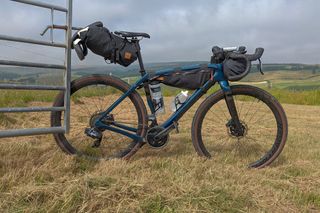
Bikepacking setup for a real test
Longer rides, and in particular, bikepacking , is where this gravel machine truly comes alive. I took the SL 7 on a (shortened due to illness) one-night trip around the Isle of Wight during testing, and this really allowed me to get to grips with the bike when fully burdened with all the equipment needed for a rough night's sleep away from home.
The bike remained totally balanced even when loaded up with a saddle pack, frame bag, and bar bag. The in-frame storage too was super useful - as previously mentioned it might not be a huge amount of real estate, but in practice, I found it was just enough to stop me from sacrificing a heavier base layer as I was able to stow away multi-tool, mini-pump, and a tube all in the tool roll. At 8.9kg too, this does make a great bikepacking platform, being rugged whilst not carrying excess weight.
When it came to the steep ups and downs synoptical with the Isle of Wight, the Trek did not falter - in the same breath however, it did not blow me away. While the chunky tubing provides great power transfer and a truly robust feeling ride, I found the ride quality to lack the excitement of other gravel bikes I have tested. The best comparison is the Cannondale Topstone Carbon 3, which, though a heavier bike, at 9.22kg, actually feels lighter and more supple than the Checkpoint.
That said I did feel like I could throw the bike at absolutely anything, loaded up with gear or not, especially with the slightly flared bars, which offered great control.

Tire clearance of up to 45mm
For me, this comes down to geometry, and it is a double-edged sword. The Checkpoint, with longer chain stays than many of the best gravel bike contenders, is undoubtedly a more stable and planted ride - and some consumers will love the imposing ride feel this brings, but for others who favor a more supple ride quality, it might not be the bike for you.
It is important to note though, this is not a criticism, much more a characterization of the bike. As gravel riding spans such a wide spectrum, it is essential to consider what riding you prioritize, and what characteristics you want out of a gravel bike.
Trek Checkpoint SLR 7: Value and conclusion
Value aside, the Trek Checkpoint SL 7 is probably the best gravel bike I have ever tested when it comes to bikepacking. An unbeatable ride feel, especially when loaded, made for super easy riding on any sort of terrain, even when tiredness loomed heavy at the end of long days of riding. We tested 9 off-road machines to crown our gravel bike of the year , with the Trek Checkpoint SL 7 winning our 'best expedition bike' title.
Include value too ($6,699.99 / £6,400.00 for the SL 7 we tested), and I think Trek is still on the money, but equally not groundbreaking. The most obvious competitor to the do-it-all Checkpoint is the Specialized Diverge Expert Carbon, which retails for a very similar $6,200.00 / £6,500.00. For a similar price, specialized matches the spec pretty much to every dotted T, also featuring carbon wheels, a second-tier SRAM AXS groupset (albeit one-by SRAM GX AXS), and alloy finishing kit.
There are certainly better value bikes out there though - the Giant Revolt Advanced Pro 1 for example, which won our overall best gravel bike of the year retails for $5,500.00 / £4,899.00, which is considerably more palatable than the SL 7. You do only get SRAM Rival AXS at this price point, and it doesn't feature the same number of mounting points if out-and-out exploration is what you are looking for, but it is still worth considering.
Trek Checkpoint SLR 7: Specs
Thank you for reading 20 articles this month* Join now for unlimited access
Enjoy your first month for just £1 / $1 / €1
*Read 5 free articles per month without a subscription
Join now for unlimited access
Try first month for just £1 / $1 / €1
Get The Leadout Newsletter
The latest race content, interviews, features, reviews and expert buying guides, direct to your inbox!
Joe is Cycling Weekly's tech writer. He's always had a love for bikes, since first riding a two wheeled steed before the age of four. Years down the line, Joe began racing at 16, and enjoyed great experiences internationally, racing in Italy, Spain and Belgium to name a few locations. Always interested in tech, Joe even piloted his Frankenstein hill climb bike to a Junior National Title in 2018. After taking a step back from elite level racing in April 2022, Joe joined our team as a freelancer, before becoming Tech Writer in May 2023.

Here are the riders who hold the Maglia Rosa, Maglia Ciclamino, Maglia Azzurra and Maglia Bianca after the second stage
By Joseph Lycett Published 5 May 24

Slovenian overcomes late tumble to go 45 seconds clear in general classification
By Tom Davidson Published 5 May 24

SD Worx-Protime rider wins eight-day race by almost two minutes
Useful links
- Tour de France
- Giro d'Italia
- Vuelta a España
Buyer's Guides
- Best road bikes
- Best gravel bikes
- Best smart turbo trainers
- Best cycling computers
- Editor's Choice
- Bike Reviews
- Component Reviews
- Clothing Reviews
- Contact Future's experts
- Terms and conditions
- Privacy policy
- Cookies policy
- Advertise with us
Cycling Weekly is part of Future plc, an international media group and leading digital publisher. Visit our corporate site . © Future Publishing Limited Quay House, The Ambury, Bath BA1 1UA. All rights reserved. England and Wales company registration number 2008885.

Best Gravel Bikes
From lightweight carbon models to do-it-all aluminum and steel rigs, we break down this year’s top gravel bikes.
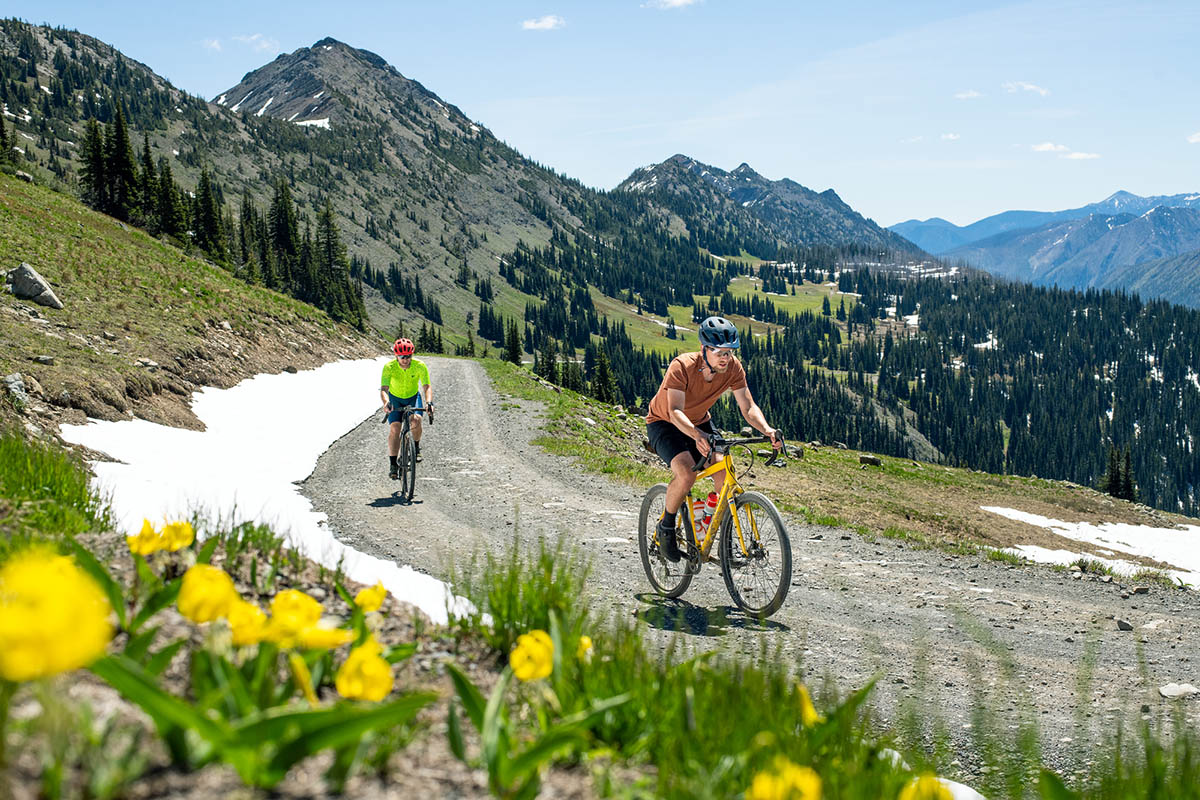
Switchback Travel ( Jason Hummel )
We use affiliate links and may receive a small commission on purchases. Read more about us .
Gravel bikes—also known as adventure or all-road bikes—are built to handle terrain ranging from forest service roads to pavement, dirt, and even mellow singletrack. In essence, they are more capable than road bikes yet more efficient than mountain bikes, transitioning nicely from daily commutes to weekend adventures. While the definition of these dirt-focused models still is up for debate, they share a few key design features including a more upright seating position for added comfort over long distances, high-volume tires to help smooth out rough roads, and multiple mounting points for extra water and gear. From leading budget options to range-topping carbon rigs, below are the top gravel grinders of 2021. For more background information, see our gravel bike comparison table and buying advice below the picks.
Best Overall Gravel Bike
1. cannondale topstone 1 ($2,150).
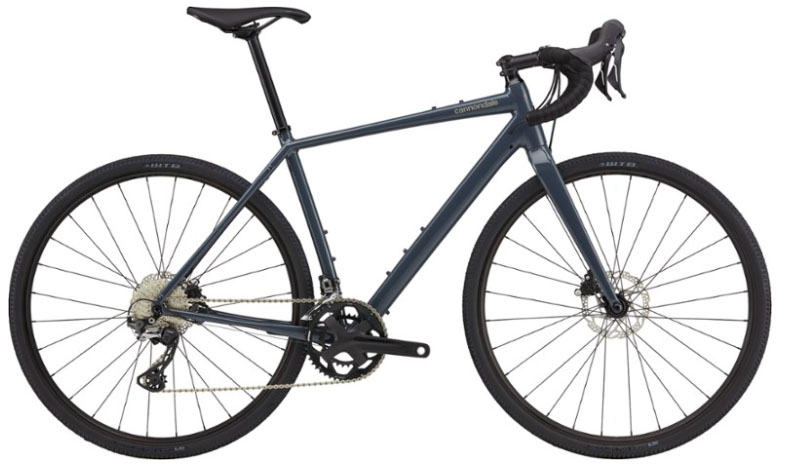
We’ll start by saying that we didn’t anticipate our top gravel bike pick being an aluminum-frame rig, but the Cannondale Topstone 1’s versatility, smart build, and competitive price tag won us over. In terms of design, the Topstone features the kind of premium aluminum frame that the brand is known for, a gravel-specific Shimano GRX drivetrain complete with hydraulic disc brakes, and appropriately wide wheels for soaking up bumps. Its balanced geometry also hits a nice sweet spot of responsiveness for climbs and road riding with a relaxed and confidence-inspiring feel on the descents. The cherry on top: the mid-range “1” manages to undercut much of the competition in price at a reasonable $2,150. From weekend gravel rides to daily commutes, the Cannondale Topstone is an excellent option.
The aluminum frame doesn't come without compromises, however. At about 22.5 pounds, the Topstone certainly isn't the lightest gravel bike on the market and likely won't be the first choice of speed-focused riders (if this sounds like you, the extra $450 for the carbon Giant Revolt Advanced 2 below might be worth it). And we’d like to see higher-quality rubber that’s tubeless-ready (they recently switched the tires to Vittoria from WTB’s Riddler, which leads us to believe it was a supply issue). However, these are relatively small nitpicks about an otherwise impressive all-around gravel bike. It’s worth noting that Cannondale also offers the Topstone Carbon with a lighter frame and their minimalist Kingpin rear suspension that helps cushion harsh impacts. See the Cannondale Topstone 1
A Close Second (With a Carbon Frame)
2. giant revolt advanced 2 ($2,600).
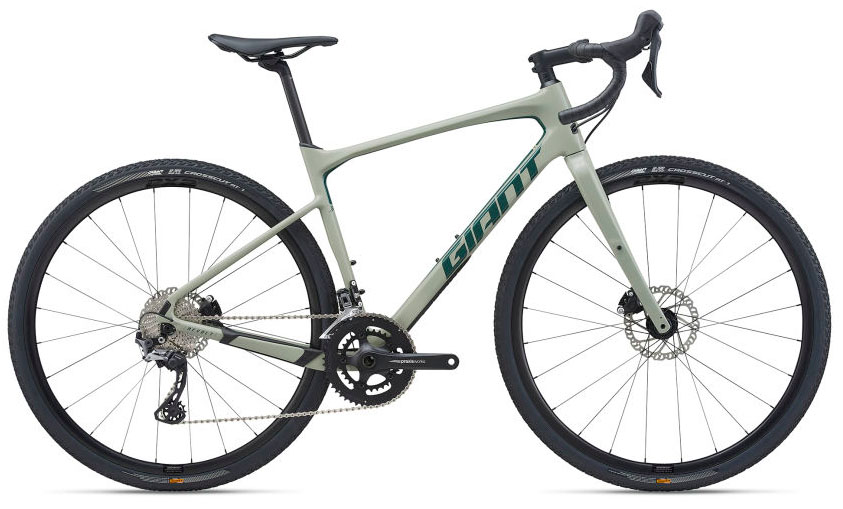
Giant has built a reputation around producing high-quality bikes at affordable prices, and their Revolt Advanced 2 is a shining example. For $2,600, you get a light and compliant carbon frame, a smooth-shifting Shimano GRX 22-speed drivetrain, hydraulic disc brakes, and ample clearance for tires up to 45 millimeters wide for damping rough roads. Other thoughtful features include a rubber downtube protector to ward off high-speed rock impacts and a chainstay guard to help keep the chain quiet on bumpy rides. Added up, you’d be hard-pressed to find a similarly equipped and well-made carbon design at this price point.
Why do we have the Giant Revolt Advanced 2 ranked below the Cannondale? Both are top-notch gravel bikes, but the simple answer is that we don't think the $450 bump in cost is worth it for most riders. The bikes share the same Shimano GRX 800/600 drivetrain and GRX 400 brakes, and we’ve found Cannondale’s aluminum builds are impressively comfortable (a common knock on aluminum is it’s too harsh). But if you’re more interested in gravel races than mellow rides, the lighter carbon-framed Revolt Advanced 2 is a solid buy. And for a hardcore racing bike, see the Trek Checkpoint SL 6 below. See the Giant Revolt Advanced 2 See the Women's Liv Devote Advanced 2
Best Budget Gravel Bike
3. kona rove al 650 ($949).
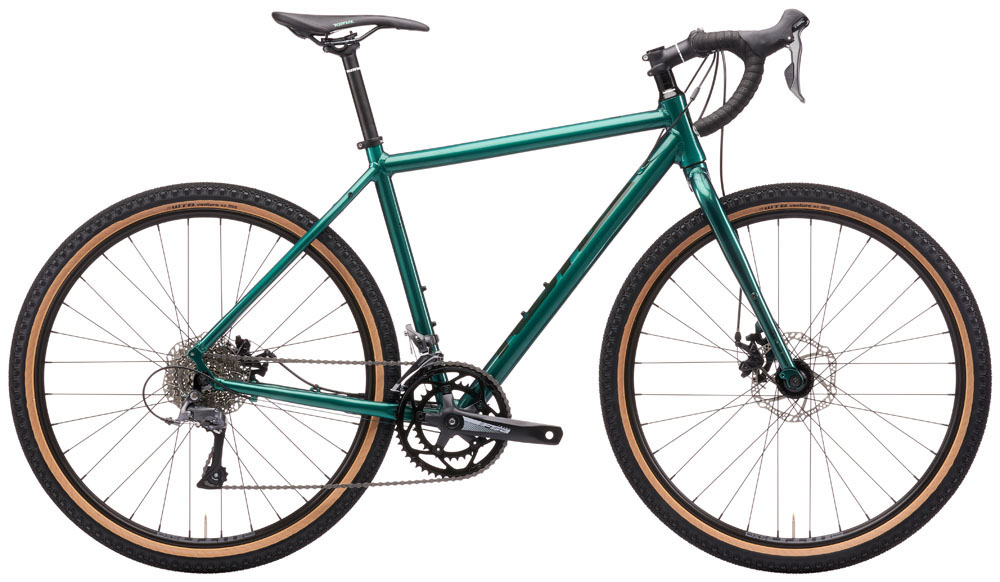
Just because you can spend thousands of dollars on a race-ready carbon gravel bike doesn’t necessarily mean you should. For budget-oriented riders interested in exploring backroads or taking the scenic route to work, Kona’s Rove AL 650 is plenty of bike. For $949, the Rove includes a quality aluminum frame, ample mounting locations for accessories, water, and gear, and a dependable Shimano Claris drivetrain. Further, its wide 47-millimeter tires do an admirable job soaking up the kind of bumps, ruts, and rocks that you often find on forest service roads.
As with any budget offering, the Rove AL 650 has its fair share of compromises. Compared to the Cannondale above, the Claris is a significant downgrade in both components and features. Most notably, it forgoes thru-axles (which add stiffness and inspire confidence during fast descents) in favor of the quick-release style. Moreover, you miss out on a vibration-dampening carbon fork (the Kona’s is stiffer alloy), and it sports less-powerful mechanical disc brakes rather than hydraulic. For about $300 more, we recommend checking out Cannondale’s Topstone Sora, which addresses many of these issues. But for those hoping to stay under $1,000, Kona’s entry-level Rove is undeniably a good value. See the Kona Rove AL 650
Best Gravel Race Bike
4. trek checkpoint sl 6 ($4,000).
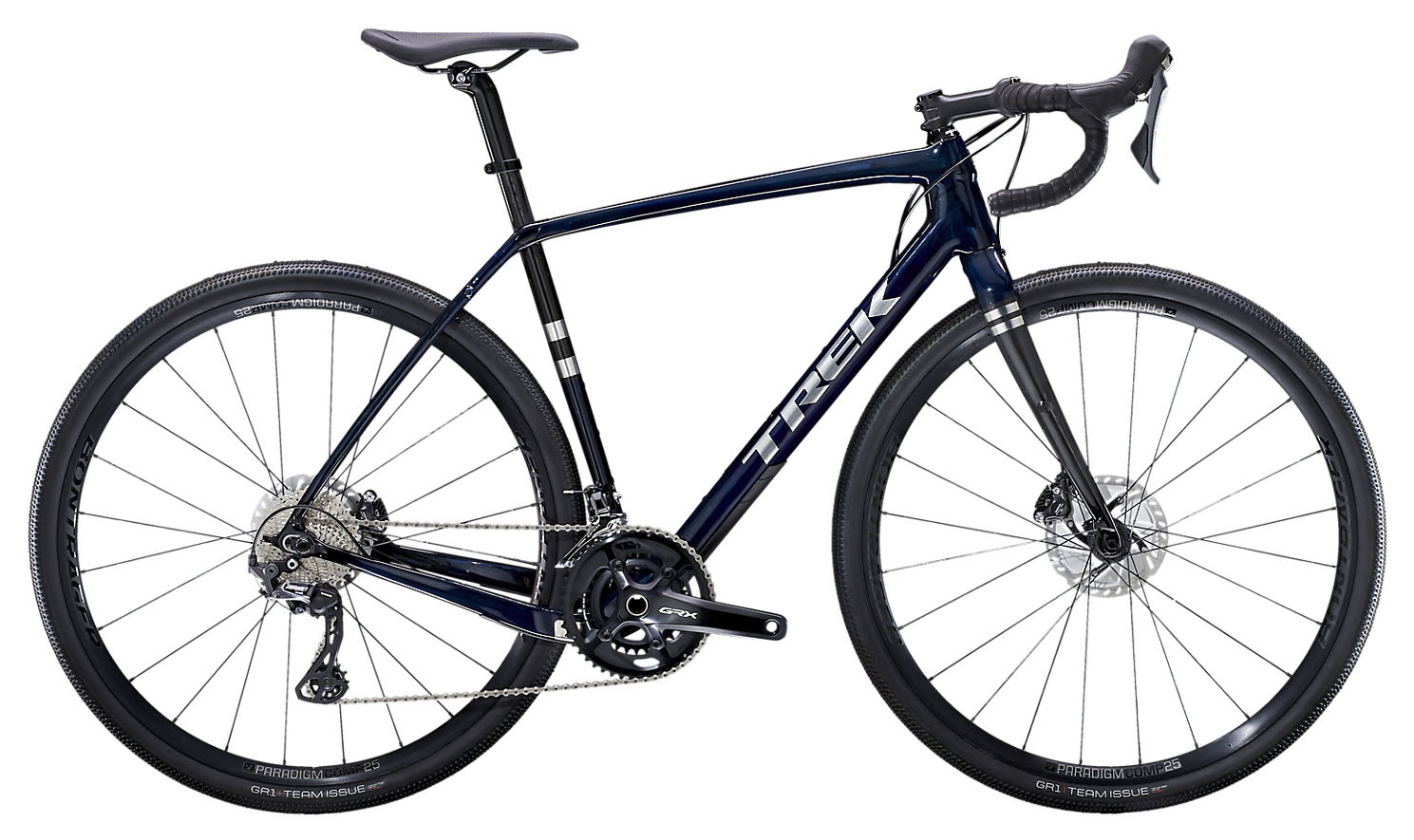
While small, niche bike companies have dominated the gravel race scene for years, this growing category has recently started to attract the big players. With decades of racing experience under their belt, Trek throws their hat into the ring with the Checkpoint SL 6. The biggest news with the Checkpoint is its IsoSpeed, which functions similarly to the rear suspension on a mountain bike. By decoupling the top and seat tubes, this technology effectively reduces vibrations and creates a less jarring, smoother ride. If you’ve ever spent time on washboard roads at speed, you’ll understand why this is so important.
This unique tech and impressive performance do come at a cost. For reference, the top-end variation of the Giant Revolt Advanced above (the “0”) is priced at $100 less than the Trek but includes substantially upgraded components like carbon wheels (the SL 6’s are aluminum). In addition, the IsoSpeed decoupler does add a little complexity to the design and will require occasional maintenance. In the end, if your cycling goals include winning the Dirty Kanza 200, it’s likely worth spending up for the Trek, and its more forgiving ride undeniably is a plus over long and hard miles. But for racers on a tighter budget, there are plenty of options that cost less. See the Trek Checkpoint SL 6
Best Electric Gravel Bike
5. cannondale synapse neo se ($4,500).
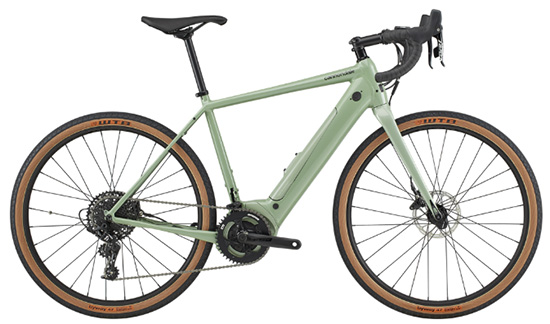
Germany-based Canyon might not have the name recognition of many of the brands on this list, but their Grail AL 6 adventure bike is an excellent all-around value. In short, it ticks most of the important boxes in this category, including a high-quality aluminum frame, lightweight carbon fork, and gravel-specific Shimano GRX 400 groupset (note: the GRX 400 series is 10-speed, while the 600 and 800 are 11-speed). The Grail’s proven and tubeless-ready DT Swiss wheels also are wrapped in one of our favorite gravel tires at the moment: Schwalbe’s 40-millimeter G-One Bite, which transition nicely from tarmac to trail. Finally, if appearance is a consideration for you, we think the silver and black version is one of the classiest-looking gravel bike designs on the market.
Compared to the Cannondale Topstone 1 above, the Grail AL 6 costs around $450 less (technically the AL 7 is a more direct competitor at $1,999) but comes up slightly short in a couple key areas. First and foremost, buying from a consumer-direct company like Canyon sometimes can be a pain: availability is often limited and customer service can be hit or miss, plus you don’t get the convenience of walking into your local bike shop to ride the bike or get replacement parts before buying. Further, Cannondale’s lifetime frame warranty is more impressive than Canyon’s six years. But the Grail AL 6 is a solid value nevertheless, which is one of the biggest perks of buying consumer-direct. See the Canyon Grail AL 6
7. Specialized Diverge Comp Carbon ($4,200)
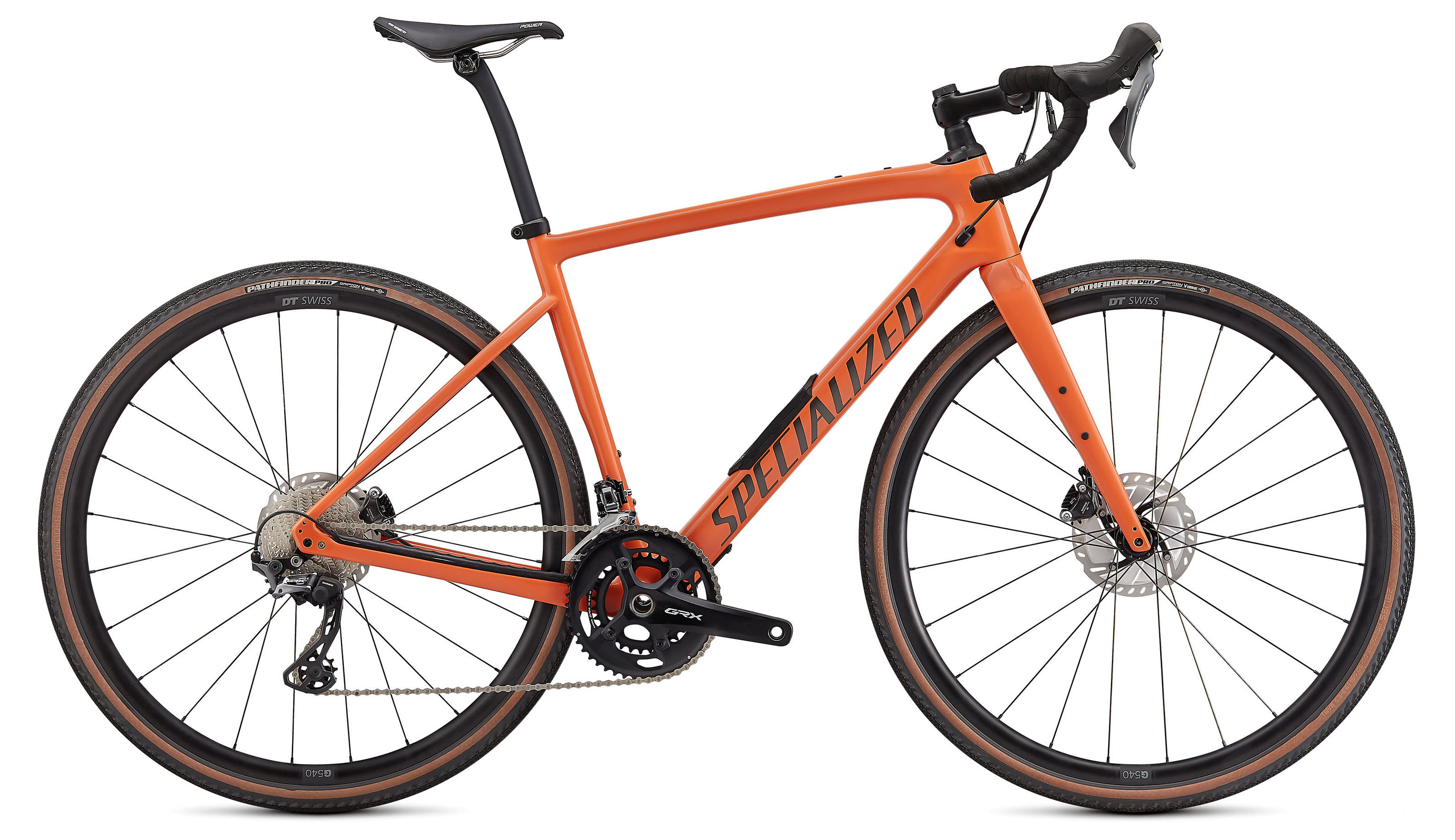
California-based Specialized is one of the biggest names in cycling, so it should come as no surprise that they offer a winner in the gravel-focused Diverge line. Similar to Trek’s Checkpoint SL 6 above, the most noteworthy component on the Diverge is its suspension that delivers a relatively high 20 millimeters of travel. But unlike the Trek, the Specialized bike focuses its shock absorption at the front rather than the rear. For anything from surprise impacts with rocks to rough washboard roads, this feature will considerably dampen your ride and reduce arm fatigue.
How does the rest of the build compare with the aforementioned Trek? The Diverge gets the edge in max tire clearance (47mm vs. 45mm on the Checkpoint) and includes in-frame storage with their unique and very functional SWAT system. That said, you get a little more cushion with the Trek and a very similar component group (including the same GRX 810 drivetrain) while saving $200. It’s a close call, but we give the slight edge to the Trek as a do-everything model that can still toe the race line. Of note, Specialized’s Diverge lineup is expansive, starting at $1,300 and going all the way up to $10,500, so most riders should be able to find exactly what they’re looking for. See the Specialized Diverge Comp Carbon
8. Salsa Warbird ($2,799)
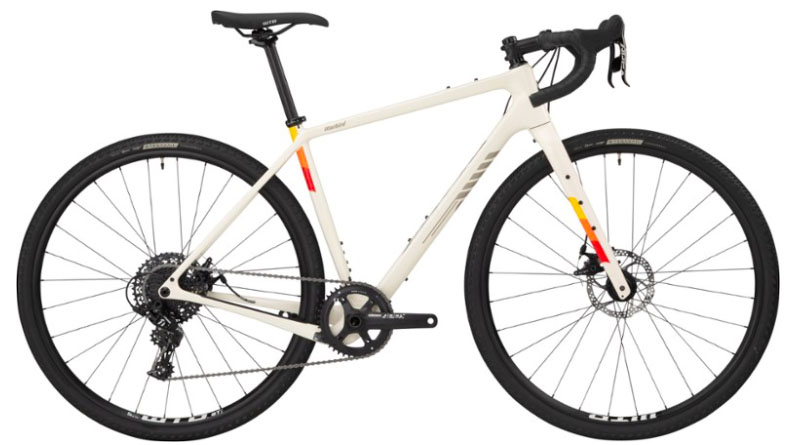
We’d be remiss not to include Salsa’s venerable and highly sought-after Warbird on this list. Originally launched in 2013, the Warbird saw a host of changes at its last update: the geometry was tweaked slightly for improved stability at speed, a number of mounting locations were added to the frame, and the bike is now compatible with 650b wheels and tires up to 2 inches wide. We especially like the Waxwing fork, which features three-pack mounts that add versatility for storing water bottles or shuttling overnight gear. All told, Salsa’s fourth-generation Warbird is an enviable gravel race bike that happily pulls double duty as a lightweight bikepacking rig for weekend trips.
Our biggest complaint about the Warbird Apex is cost. At $2,799, we think there are better deals to be had in the gravel bike category. For example, the Giant Revolt Advanced 2 above comes in around the same price and features a more versatile drivetrain with a wider gear range (better for mountainous terrain). And although the Warbird’s high-performing TRP Spyre mechanical disc brakes are one of the better options of their kind on the market, they simply can’t match the ease of use or stopping power of the hydraulic version on the Giant. That said, the Warbird’s additional storage spots on the frame and fork make it better-suited for all-day epics and backcountry adventures. If versatility is a key consideration, we think it’s a nice choice. See the Salsa Warbird
9. Santa Cruz Stigmata GRX ($4,649)
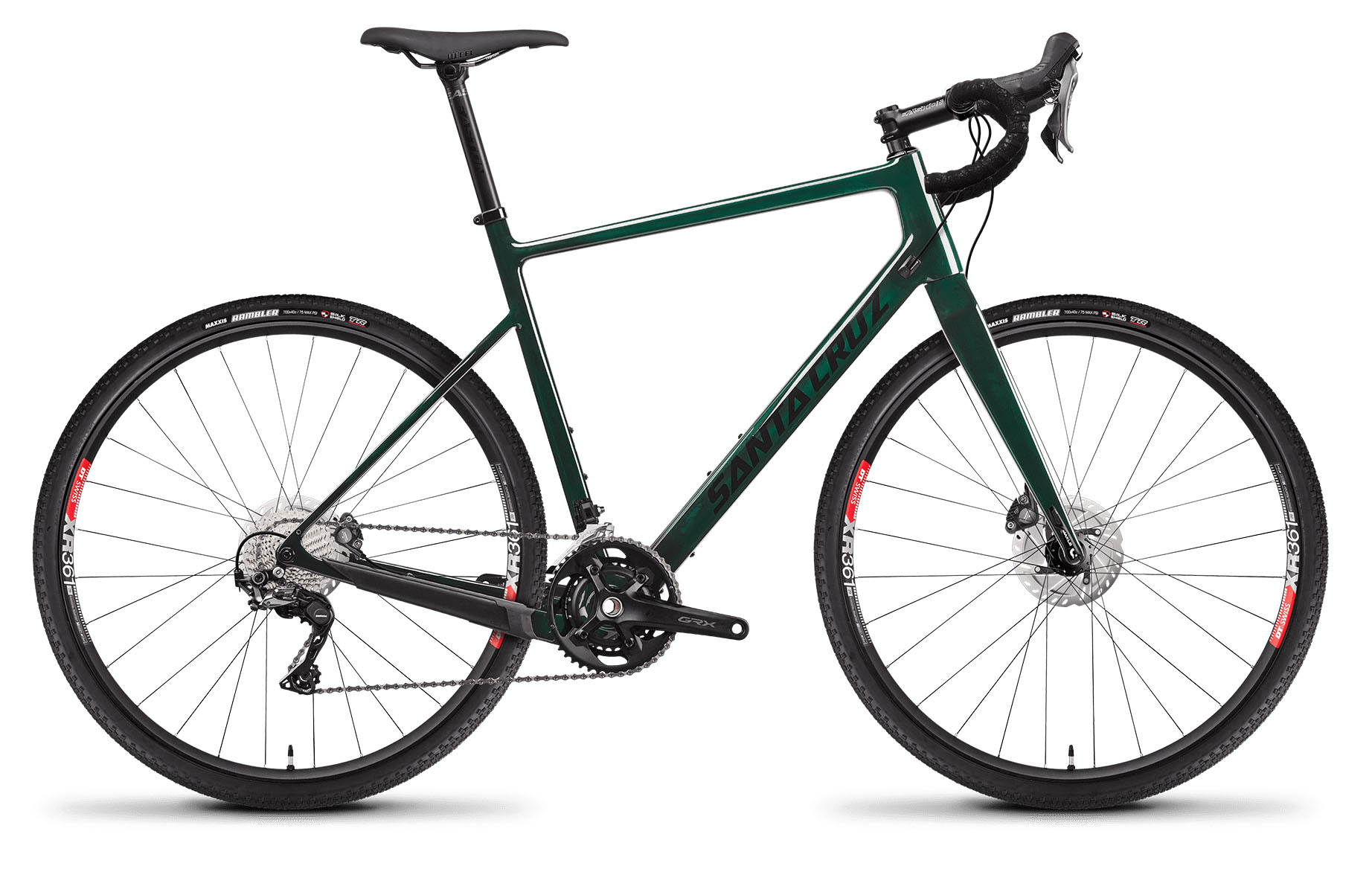
Santa Cruz is lauded within the mountain biking community for their quality frames and remarkable attention to detail, and that reputation holds true with the gravel-oriented Stigmata. For last year, the Stigmata was redesigned with additional clearance for tires up to 45 millimeters wide (as well as 650b tires), updated geometry with a slightly longer head tube that translates to a more upright and comfortable riding position, and internal routing for dropper seat post compatibility. What does all this mean for you? In short, the versatile Stigmata is now just as at home on the cyclocross course as it is on far-off backroad adventures.
Where does the Stigmata fall short? Like all Santa Cruz bikes, the gravel rig is undeniably pricey at $4,649 for the GRX model, which includes the high-end 800 groupset. For $400-$600 less, the Trek and Specialized models above feature similar components but include a notable upgrade in ride quality over bumpy terrain with their proprietary suspension designs. That said, buying from Santa Cruz involves paying a premium for the brand’s attention to detail (all models are admittedly fantastic-looking), strong warranty, and reliable long-term performance. Whether that’s worth the added expense is up to you. See the Santa Cruz Stigmata GRX See the Women's Juliana Quincy GRX
10. Evil Bikes Chamois Hagar ($4,799)
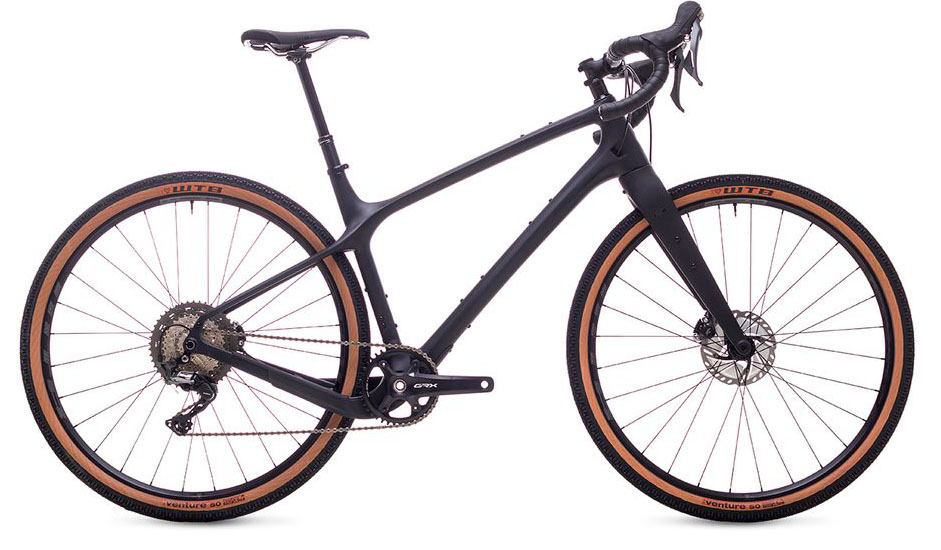
Evil is known for their progressive designs in the mountain bike world, and they’ve translated that to their playfully named Chamois Hagar gravel bike. The big news is its geometry, which has a downhill-oriented 66.67-degree head angle for an aggressive stance that’s impressively stable and confidence-inspiring on the descent (for reference, most gravel bikes are around 70 degrees or higher). There are only two build kits currently offered (plus a frame-only option), but the GRX model is well-appointed with high-end 800-series components, an all-carbon frame, and off-road extras like a dropper post and meaty tires. At $4,799, the Evil is not a price leader, but its fun factor is hard to beat.
What do you give up with the Chamois Hagar’s unique build? Uphill-focused riders that want a twitchy and extremely responsive ride won’t like the laidback stance or beefed-up construction, which adds weight. And the standard 50-milllimeter-wide tires are not the fastest-rolling or lightest around. If you plan to mix in a fair amount of extended and steep climbing and prioritize efficiency, it’s best to stick with a traditional, road-inspired design. But for mountain bikers looking for a familiar, fun feel while bombing down their local forest service road or even popping off small features, Evil’s gravel grinder has a lot of appeal. See the Evil Bikes Chamois Hagar
11. Norco Search XR A2 ($1,699)
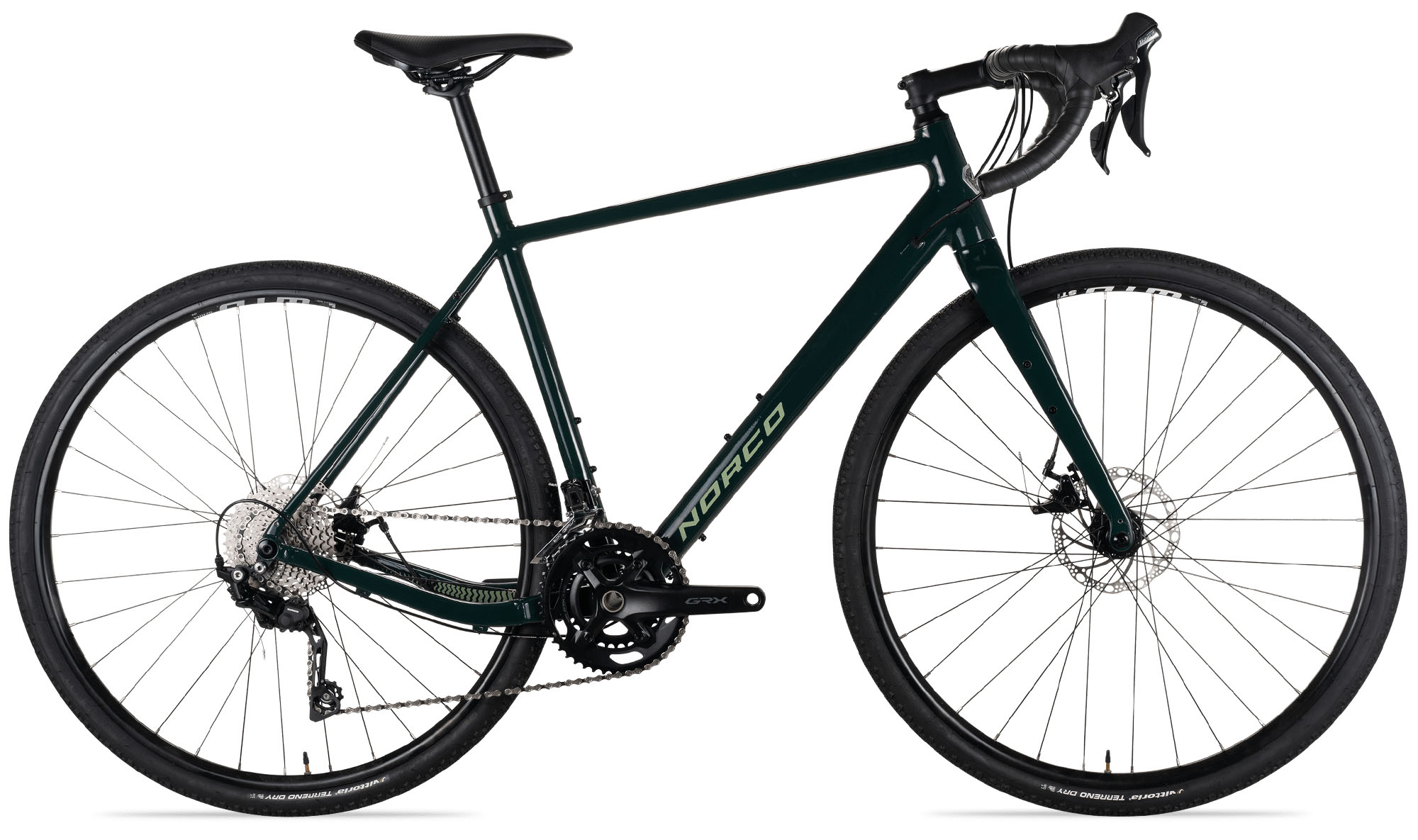
Better known for their extensive lineup of mountain bikes, Norco did a nice job with the dirt-focused Search XR A2. For a reasonable $1,699, you get a 2 x 10 Shimano drivetrain that works well across most terrain along with a healthy selection of mounting locations for racks, bottles, and gear. Further, you get thru-axles for a stiffer ride in the rough stuff and tubeless-ready wheels (in our opinion, it’s is a no-brainer to set up your gravel bike this way for less weight, fewer flats, and more grip). While it can’t match the racing pedigree of the Trek Checkpoint SL or versatility of the Salsa Warbird above, the Search XR is an impressively capable companion for everything from backroad exploring to daily commutes.
At this price point, however, there are some entry-level components in the build. It’s nice to see Shimano GRX derailleurs and crank, but the shifters are from the road-focused Tiagra line, so they’re not as user-friendly on gravel. In addition, you get less-powerful mechanical brakes and the tires aren’t the best in slippery and dicey conditions, so many backcountry explorers will want to upgrade those right off the bat. For those looking for a little more capability at a still-reasonable price, check out Norco’s XR A Suspension model ($2,399), which features a front fork with 50 millimeters of travel and a dropper seat post. See the Norco Search XR A2
12. Cervelo Aspero GRX 810 2x ($4,500)
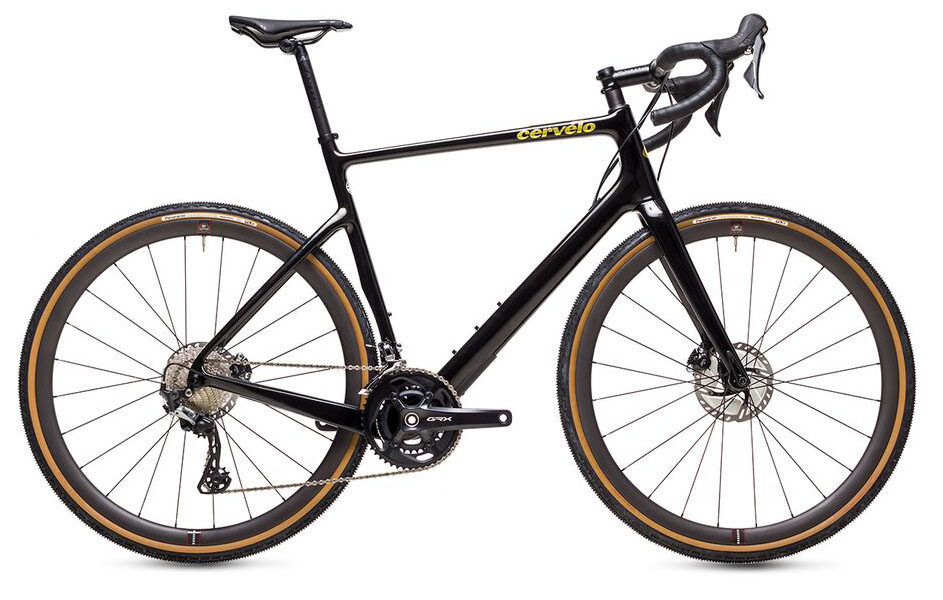
Cervelo has made their name in light, fast, and aerodynamic pavement racers, and they’ve taken that expertise into the gravel world with their Aspero collection. As expected from the brand, the Aspero models put a premium on climbing speed and responsiveness with a high-quality and very lightweight carbon frame, upright geometry that gives it a quick-handling and nimble feel, and a nice spec sheet with efficiency-minded components. Tack on off-road-ready features like protection along the chain stays and downtube and dropper post compatibility (note: a dropper is not included), and you get a nice option for road riders looking to add a gravel grinder to their quiver.
As expected, the Aspero’s road-inspired geometry and build make it far less stable and more prone to getting knocked around on steep and rowdy descents. Put another way, it’s the polar opposite of the Evil Chamois Hagar above, which crushes the downhills at the expense of power and efficiency when pedaling. It’s also worth noting the max tire width for the Aspero is 42 millimeters, which is a few millimeters less than most designs on this list. It’s not for everyone, but for riders that stick to relatively tame terrain and want a race-ready screamer, the Aspero is a great choice. Finally, Cervelo recently released the Apero 5 series , which is a lighter, faster, and even pricier version of the standard model here. See the Cervelo Aspero GRX 810 2x
13. Niner RLT 9 2-Star ($2,200)
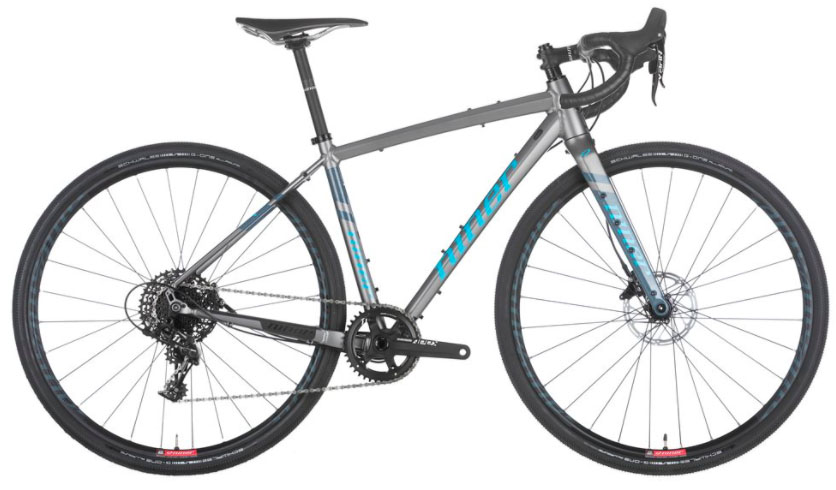
Niner may not be a familiar name to many road cyclists, but this Colorado-based company has been pushing out quality dirt-focused models for about 15 years. From their lineup, the RLT 9 2-Star is a solid budget-minded build: it features SRAM’s Apex 1 x 11 drivetrain and hydraulic disc brakes, can fit up to 700c x 50mm tires, and includes mounting locations for racks and fenders (the carbon fork even has additional spots for storing extra water on those all-day rides). Not to mention, we can’t help but love the old-school look of the RLT’s aluminum frame.
Compared to the top-ranked Cannondale Topstone 1 above, the Niner RLT 2-Star costs around the same (it's $50 pricier) yet sees a slight downgrade in the drivetrain department with its 1x drivetrain (the Cannondale features 2x Shimano GRX components). Not only does this include a wider gear range, but the Shimano parts are a little better tuned for off-road riding with easier-to-manipulate shift levers. Within the Niner lineup, you can get GRX components, but they’re only available in top-end 800-spec models that start at about $3,000. See the Niner RLT 9 2-Star
14. Donnelly G//C Force ($4,000)
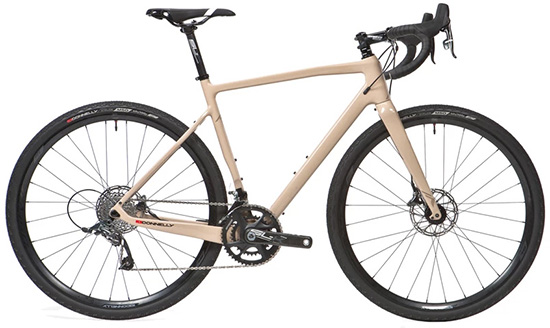
For riders just dipping their toes into the gravel world, Co-op Cycles’ ADV gravel bikes have a lot of appeal. For one, it’s a fairly simple buying process: Co-op Cycles is REI’s in-house bike brand, which brings nationwide access to shops, easy assembly and maintenance, and a reliable warranty. And their ADV collection includes solid performers like the mid-range 2.2, which comes in at a very competitive $1,599. For this price, you get the entry-level Shimano GRX component group, which is well-made but comes with slight compromises like a 10-speed cassette (compared with 11 for the upgraded versions). You also miss out on some nice upgrades like hydraulic disc brakes, although the Tektro mechanicals are decent performers and don’t require much in terms of maintenance.
As expected, the ADV 2.2 shouldn’t be on the short list for those looking for a speedy machine, but the design in general is well-balanced. The WTB Nano tires are proven performers, the wheels are tubeless-ready, and the bike has a sturdy feel to it in general. That said, it’s not an agile design and weight is decently high (REI gives it a median weight of over 23 pounds). As such, those looking for a longer-term investment may want to spend up to the Cannondale Topstone above—which is also sold through REI Co-op—but casual riders looking to add some gravel time to their weekends will likely be very happy with the ADV 2.2. See the Co-op Cycles ADV 2.2
16. Surly Straggler ($1,625)
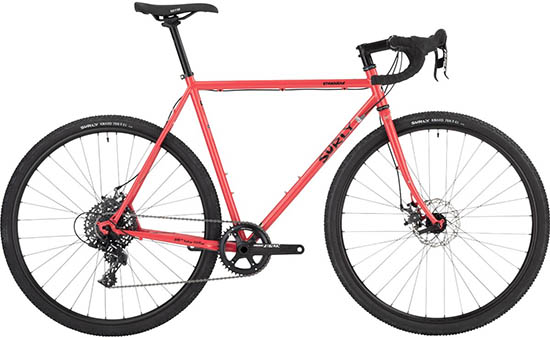
Diamondback is best known for their budget-friendly bikes sold at big-box stores, but being value-driven isn't necessarily a bad thing. In the gravel realm, we especially like their Haanjo 2, which is the most affordable design to make our list at $925. This entry-level ride features a 2 x 8 Shimano drivetrain, decently fast-rolling 38-millimeter tires, and mechanical disc brakes that are easy to operate and provide consistent stopping power. To be sure, the Haanjo 2 can’t match the performance or low weight of pricier models on the list, but it’s a serviceable companion for those who do a little bit of everything—including commuting, cruising mellow doubletrack, and exploring forest service roads.
With a similar price and component group (Shimano’s budget-focused Claris) as the Kona Rove above, the two bikes are natural competitors. In parsing out the differences, the 650b Kona has wider tires and does a nicer job cushioning impacts on washboard roads, while the narrower and faster-rolling Diamondback is the superior option for commuting and mixing in longer stretches on pavement. Both offer a nice entry point into the world of gravel riding, but the more capable Kona gets the edge for us. See the Diamondback Haanjo 2
18. Moots Routt YBB Force AXS ($9,853)
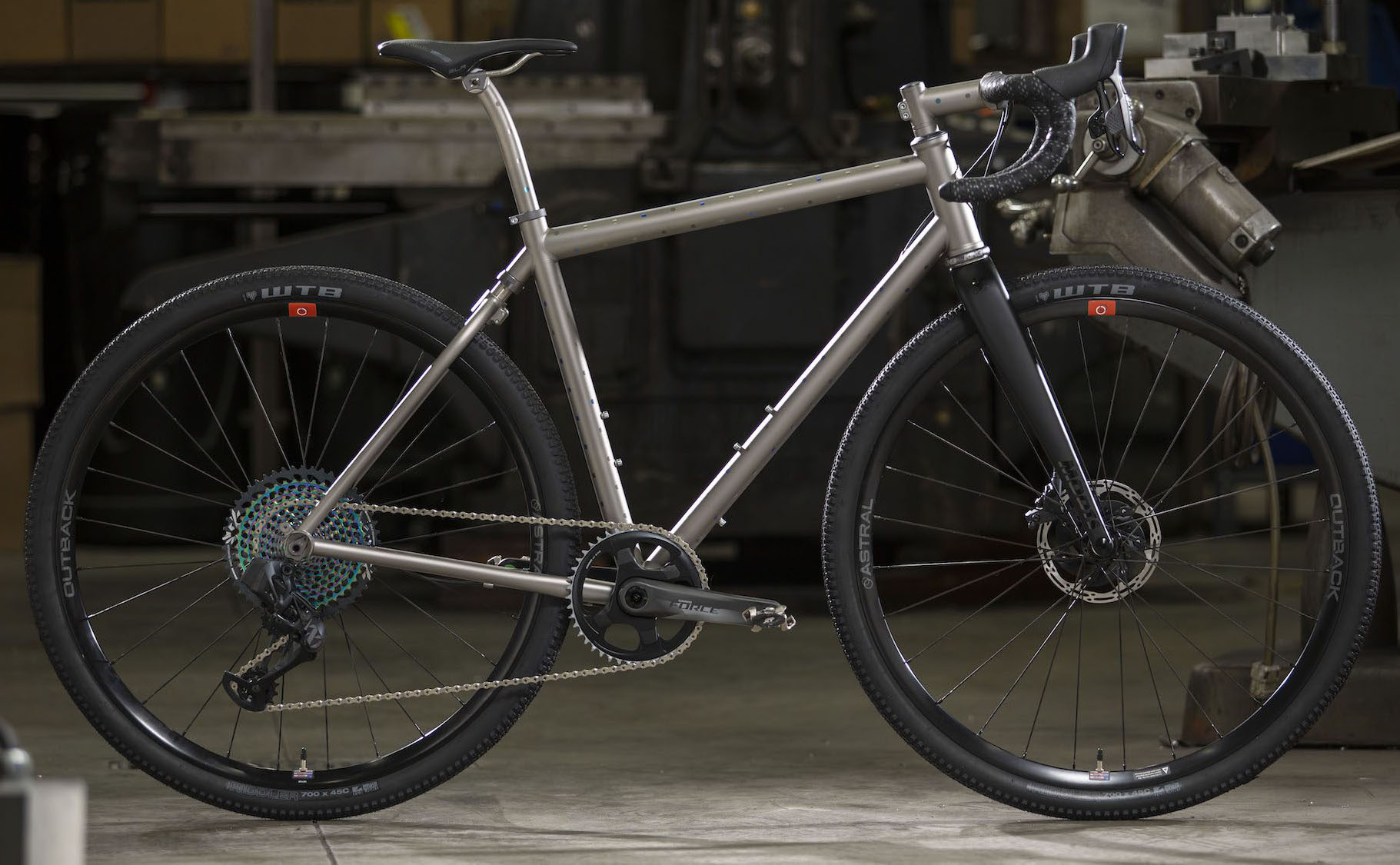
Moots’ Routt lineup has been around for years, but it’s the latest YBB version that really caught our eye. The “softail” design—first used on the company’s mountain bikes in the 90s—delivers 20 millimeters of rear micro-suspension that effectively reduces the harshness of rough roads. Combined with a smooth-riding titanium frame and beefy tires (up to 50mm wide), and this is a true backroads rig that’s ready to handle just about anything you throw at it. The elite-level build listed here also features the crisp shifting of SRAM’s electronic Force AXS drivetrain. Taken together, if price were no issue and we could only ride one gravel bike for the rest of our lives, it almost certainly would be the Routt YBB.
Now it’s time to address the elephant in the room. At well over $9,000, the Routt YBB is reserved for committed cyclists who ride often and ride hard (and have deep pockets). On the flip side, titanium undoubtedly is pricey, but Moots uses a high-quality, U.S.-made version that’s welded in-house at the company’s headquarters. In other words, it’s hard to put a price on such excellent craftsmanship. For those on a tighter budget who don’t want to make big sacrifices in ride quality, Trek’s Checkpoint SL 6 above is well under half the price and features similar bump-absorbing tech with its rear IsoSpeed. See the Moots Routt YBB Force AXS
19. Co-op Cycles ADV 1.1 ($1,599)
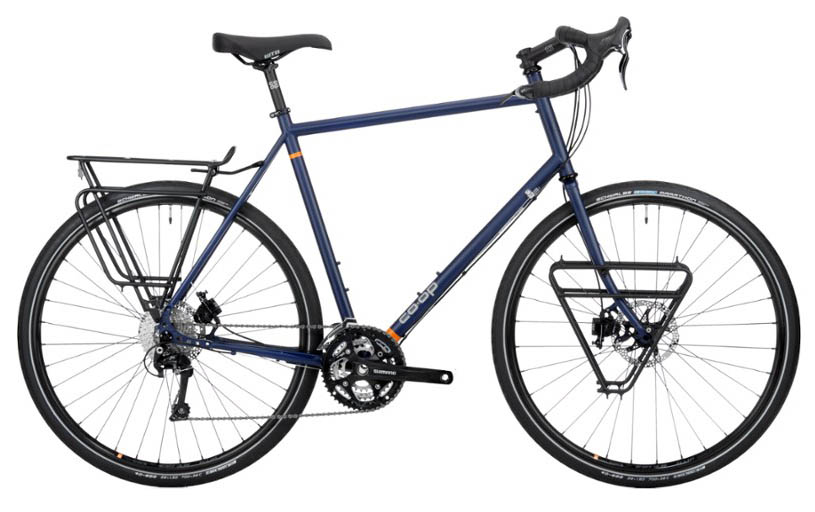
Co-op Cycles isn’t known for pushing the envelope in terms of frame design or technology, but what they offer is a major focus on value. The steel-framed ADV 1.1 is a prime example: for $1,599 (and often marked down further during sales), the ADV is a solid all-rounder that can confidently tackle adventures ranging from gravel road exploration to extended bikepacking and bike touring outings. And with a comfortable upright seating position, wide gear range, and included front and rear racks, it makes for a solid commuting companion too.
Why isn't the Co-op Cycles ADV 1.1 ranked higher? The steel frame and reasonably fast-rolling 700c x 38mm tires make for a comfortable ride on pavement and light gravel, but they also add a lot of weight. At about 30 pounds, the ADV is easily the heaviest bike on our list (not including Cannondale’s Synapse e-bike, which really is a different category). If the goal is covering ground quickly and efficiently, we recommend checking out a more focused design like Co-op Cycles’ ADV 2.2 above, which cuts significant weight, has more off-road-oriented tires, and features more performance-oriented geometry for the same price. All that said, the ADV 1.1 has its place for everything from cross-country trips to easygoing and leisurely outings. See the Co-op Cycles ADV 1.1
Gravel Bikes Comparison Table
Gravel bike buying advice, what is a gravel bike, frame material: carbon vs. aluminum, drivetrain and gears, wheel size: 700c vs. 650b, brakes: hydraulic disc vs. mechanical disc, proper tire air pressure (psi), going tubeless, shoes and pedals for gravel bikes, gravel, road, and cyclocross bikes: what are the differences, what about hardtail mountain bikes on gravel.
- Buying a Gravel Bike: In-Store or Online?
As their name suggests, gravel bikes are designed to be ridden on surfaces like gravel trails, doubletrack, and forest service roads. While people have been taking their road bikes onto unpaved roads for decades, this emerging category has a number of thoughtful design features that make the experience much more enjoyable. In general, you should look for frame clearance to accommodate up to 700c x 45mm tires, multiple mounting locations (three or more) for water bottles and food, longer wheelbases that are more stable at high speeds, and disc brakes to handle long descents over varying road conditions. Put simply, gravel bikes can continue on when traditional roads bikes are forced to turn around, and they can easily handle the daily commute to work too.
.jpg)
It almost goes without saying that a lighter bike will feel sprightlier and more responsive than a heavier rig on the road or path. Not only does it make the uphills more bearable, but it also allows you to cover ground more quickly with less effort. And performance benefits aside, we always welcome lifting less weight onto our rack. However, weight often correlates directly with cost: the more you spend on a bike, the less it will weigh. For example, the $1,599 Co-op Cycles ADV 2.2 tips the scales at around 23.5 pounds, while Santa Cruz’s carbon Stigmata Force 2X ($5,849) weighs just over 18 pounds. We think the sweet spot is in the 20- to 23-pound range for most riders, which will usually set you back roughly $2,000. Race-focused cyclists likely will be willing to spend up for less weight.
One of the best and least expensive upgrades you can make to your bike is upgrading to tubeless tires . The biggest benefit is the ability to run lower tire pressures, meaning the tires are better able to absorb impacts without increasing the risk of a pinch flat. This also translates to a larger contact patch with the ground, making them ideal for off-road use. Plus, eliminating tubes in favor of sealant can drop a little rotational weight from your kit.
All that said, it can be a challenge converting your bike to tubeless. While installation has become significantly easier over the last few years due to improvements in the technology, you still get the occasional tire-and-rim combination that just doesn’t want to inflate. You’ll also have to replace the sealant a couple of times per year—it has a tendency to dry and become ineffective at sealing small holes. And finally, tubeless setups can be a bit of a mess should you ever need to put a tube in your tire. If you don’t feel comfortable with the initial installation, we recommend asking your local bike shop for help.
.jpg)
Those who already own a hardtail might be wondering: “Can’t I just ride my mountain bike on gravel roads instead of purchasing something new?” And the answer is a resounding “yes.” In fact, we actually encourage riders to use what they already have whenever possible. After all, people have been riding all sorts of bikes on dirt roads for decades—long before the advent of this niche category.
All that said, there are many benefits to purchasing a true gravel-focused bike. For example, models like Trek’s Checkpoint SL 6 are significantly lighter than mountain bikes, the drop bars offer multiple hand positions for all-day comfort, and you get more mounting locations for food, water, and gear. Gravel bikes also feature a wider gear range for the varied terrain you can expect on forest service and backroads. While a hardtail with skinny tires certainly will do the trick (we did this for quite some time), for those who plan on spending a lot of time on pavement and gravel, it’s hard to ignore the performance differences. There's good reason why this is one of the fastest-growing bike categories.
.jpg)
Mountain Biking Gear Reviews
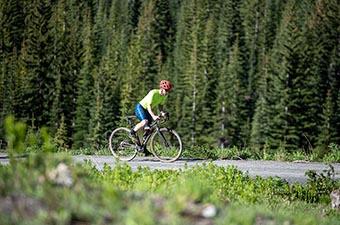

Cannondale Topstone Review
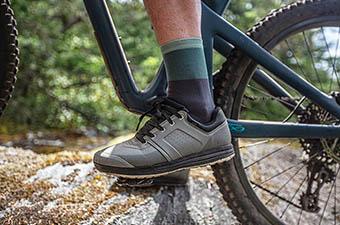
Best Mountain Bike Shoes of 2024
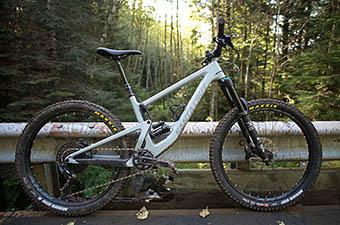
Best Mountain Bike Brands of 2023
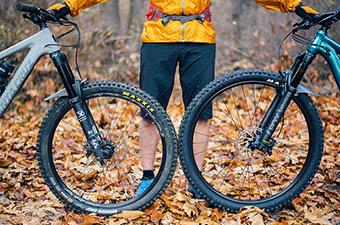
27.5 vs. 29er Mountain Bikes
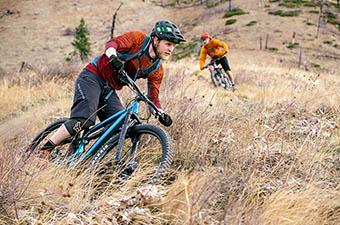
7 Best Trail Mountain Bikes of 2022
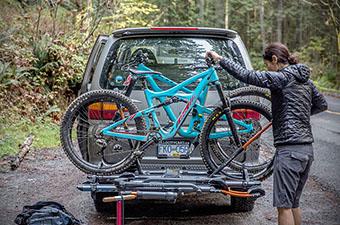
Best Hitch Bike Racks of 2024
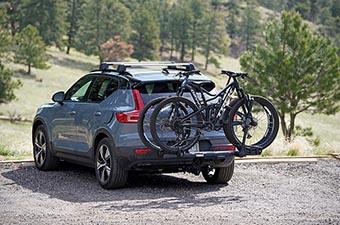
Thule T2 Pro XTR Bike Rack Review
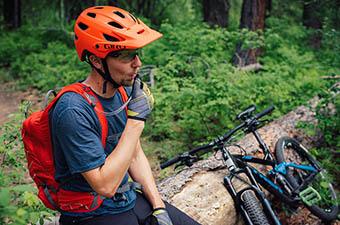
Best Mountain Bike Helmets of 2024

Mobile Menu
Megamenu - desktop hamburger menu.
- Hiking Gear
- Backpacking Gear
- Biking Gear
- Camping Gear
- Footwear Reviews
- Climbing Gear
- Skiing Gear
- Winter Gear Reviews
- In-Depth Gear Reviews
- Hiking Shoes
- Hiking Boots
- Trail Running Shoes
- Mountain Bike Shoes
- Approach Shoes
- Climbing Shoes
- Beginner Climbing Shoes
- Mountaineering Boots
- Winter Boots
- Rain Jackets
- Down Jackets
- Synthetic Jackets
- Fleece Jackets
- Hardshell Jackets
- Softshell Jackets
- Windbreaker Jackets
- Ski Jackets
- Winter Jackets
- Hiking Pants
- Hiking Socks
- Trekking Poles
- Baby Carriers
- Running Vests
- Backpacking Tents
- Backpacking Packs
- Backpacking Sleeping Bags
- Backpacking Sleeping Pads
- Backpacking Stoves
- Backpacking Food
- Water Filters
- Altimeter Watches
- Handheld GPS
- Mountain Bike Helmets
- Mountain Bikes
- Mountain Bikes Under $1,000
- Mountain Bikes Under $2,000
- Gravel Bikes
- Bike Brands
- Kids' Bikes
- Hitch Bike Racks
- Camping Tents
- Rooftop Tents
- Camping Sleeping Bags
- Camping Mattresses
- Camping Chairs
- Camping Stoves
- Duffel Bags
- Rock Climbing Shoes
- Climbing Helmets
- Climbing Harnesses
- Climbing Quickdraws
- Belay Devices
- Climbing Ropes
- Climbing Backpacks
- Winter Gloves
- 4-Season Tents
- Ski Helmets
- Ski Goggles
- Ski Backpacks
- All-Mountain Skis
- Ski Bindings
- Backcountry Skis
- Backcountry Ski Boots
- Skis for Beginners
- Hardpack Skis
- Mirrorless Cameras
- Full-Frame Cameras
- DSLR Cameras
- Point-and-Shoot Cameras
- Travel Cameras
- DSLR Lenses
- Mirrorless Lenses
- Lofoten Islands
- Lofoten Hiking
- Hardangervidda
- Jotunheimen
- 10 Great Norway Hikes
- Public Huts
- Torres del Paine
- Chalten and Glaciares
- Lake District
- Patagonia National Park
- Milford Sound
- Abel Tasman
- Marlborough
- Great Walks
- Adventure Towns
Add adventure to your inbox
- Privacy Policy
- Terms of Use
© 2024 Switchback Travel. All Rights Reserved. No part of this site may be reproduced without our written permission.
Gear-obsessed editors choose every product we review. We may earn commission if you buy from a link. How we test gear.
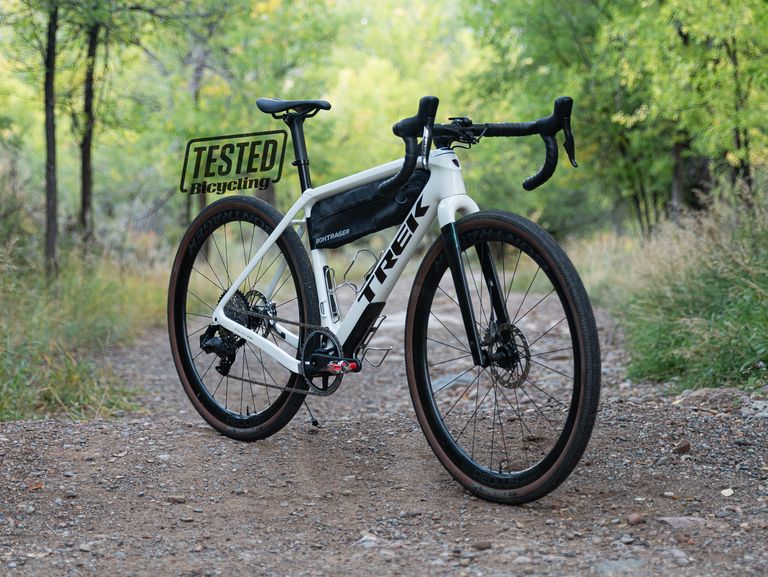
The New Trek Checkpoint Line Is For Gravel Riders of All Kinds
Updated geometry and differentiated models for speed, adventure, and all purpose riding
The Takeaway: A great bike gets better, with geometry updates suited to the evolution of gravel.
- Two centimeters longer reach and front center on all sizes
- One centimeter longer chainstays
- New race-oriented SLR platform
- Additional cargo mounts
Price: $12,000 (SLR 9, as tested) Weight: 17.8 lb. (Size 54cm)
Trek’s gravel loving Checkpoint is all new front to rear, with new geometry (covered below) and features for the ever-evolving world of gravel riding. That evolution is why Trek differentiated the three complete bike platforms—SLR, SL, and ALR—for different kinds of gravel riders. I go into more depth below, but the short version is: SLR = race; SL = all-around, ALR = utility.
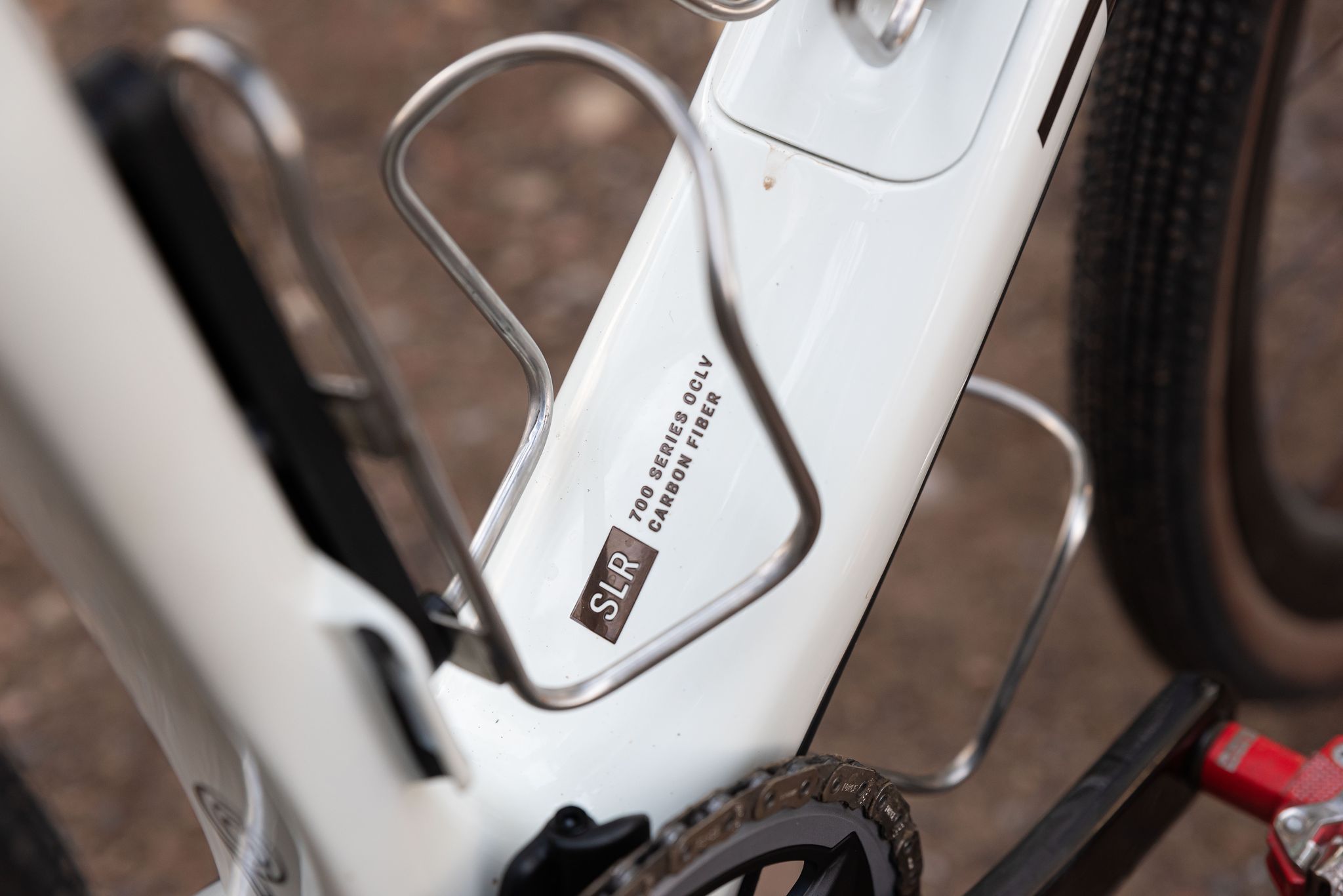
Threaded T47 bottom brackets now grace all Checkpoint frames, but Trek has done away with the sliding dropouts found on the previous generation Checkpoint. All eight builds get gravel gearing and clutch-style rear derailleurs (Shimano GRX or SRAM eTap AXS), as well as 40mm tubeless ready tires and tubeless ready rims. All models, and all sizes, can fit up to 45mm tires with plenty of mud clearance; which means riders in dry conditions can fit in even bigger tires. If you choose, you can fit the Checkpoint with 650b wheels—all models and all sizes come stock with 700c wheels—which bumps tire clearance up to 53mm (2.1 inches).
In the press release, Trek makes mention of “ Émonda -inspired aero tube shapes,” without providing any wind tunnel data. My suspicion is the tube shapes do save a few watts, though Trek isn’t leaning into gravel aero as much as 3T does with its Exploro RaceMax .
Trek Checkpoint — Geometry
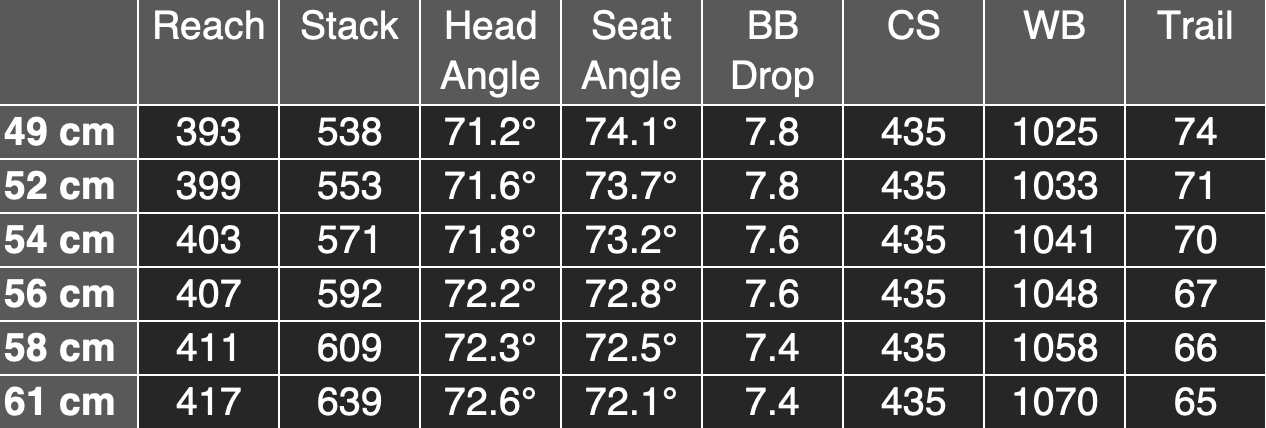
Geometry is where the new Checkpoint sees the biggest change. While there are three Checkpoint frame platforms (outlined below), all three share the same, all new, geometry (see table above).
The overall theme to the geometry updates is “more progressive.” Trek took a page from the mountain bike playbook and stretched all sizes of the frame’s reach and front center by about two centimeters. Trek now fits shorter stems and shorter-reach bars to mitigate cockpit length changes. Chainstays on the frame grow by a centimeter (now 435mm on all sizes). Trail is also longer (about six millimeters) even though head angles remain about the same—new fork offset is 45mm, old was 49mm—and wheelbase grows as well. Frame stack bumps up a touch too.

Jordan Roessingh, Trek’s director of road product, says the new geometry aids stability, “It’s a longer bike, so whether you’re doing long Unbound type stuff where you’re just pointing the bike straight or you’re doing high speed stuff on gravel descents in the mountains, we believe this geometry lends itself to confidence. Getting that wheel out in front of you also unweights it makes you feel a lot more confident when you’re doing steep technical stuff—you don’t feel like you’re going to go over the bar. That front wheel is really easy to unweight and allows it to roll over a lot more stuff.”
Roessingh further explained that the new geometry also reduces toe overlap on smaller sizes and allows them to approve larger tires sizes for smaller riders, “On the previous [Checkpoint] we had to limit our small frame size tire size recommendations to only 40mm. Not because the frame didn’t have the capacity for 45, but when you put a 45 it created too much toe overlap.” The issue here was government regulations that outline a production bike’s maximum tire overlap. But with the new bike’s longer front end every size can, officially, run up to a 45mm tire.
One note on the geometry: The new Checkpoint is not suspension fork corrected. However, the Checkpoint has a 1.5-inch lower fork steerer diameter, so you can fit the new RockShox Rudy , a Suntour GVX, or Fox AX, but doing so will raise the front end and slacken its angles.
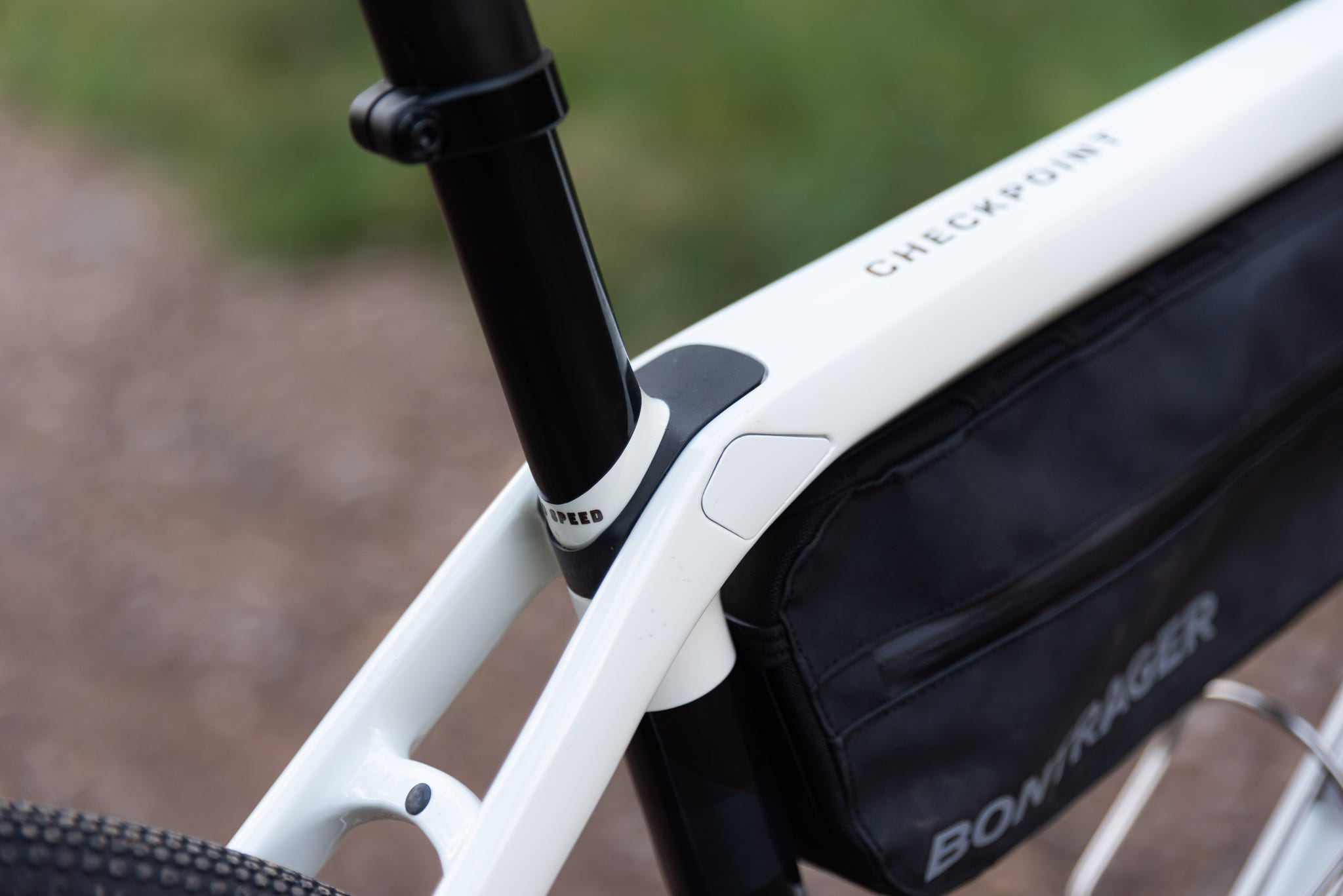
Trek Checkpoint — Where is the Front IsoSpeed?
One surprising omission from the new Checkpoint is IsoSpeed in the front, a feature found in Trek’s Domane all road bikes . According to Roessingh, IsoSpeed on the front of a bike with big tires, “Doesn’t provide a sufficient gain in compliance to make a real difference to the rider because a [larger than 32mm tire] is such a dominant aspect of the compliance,” so it was left off the new Checkpoint. The benefit is a less complicated front end, and some weight savings.
Rear IsoSpeed continues on all models. Roessingh explains that it has more deflection than front Isospeed so it offers additional compliance benefit even with larger tires.
Trek Checkpoint — Three Frame Platforms
The new Checkpoint comes in three platforms: SLR, SL, and ALR. The top of the line SLR (super light race) platform is new to the Checkpoint line. Previously, Checkpoint topped out with the SL model. All the models have T47 threaded bottom bracket, internal hose and housing routing, 45mm tire clearance, frame bag mounts, fender mounts, and come in six sizes: 49 to 61cm. SLR and SL carbon frames get the same in-frame storage system found on carbon Domane frames.
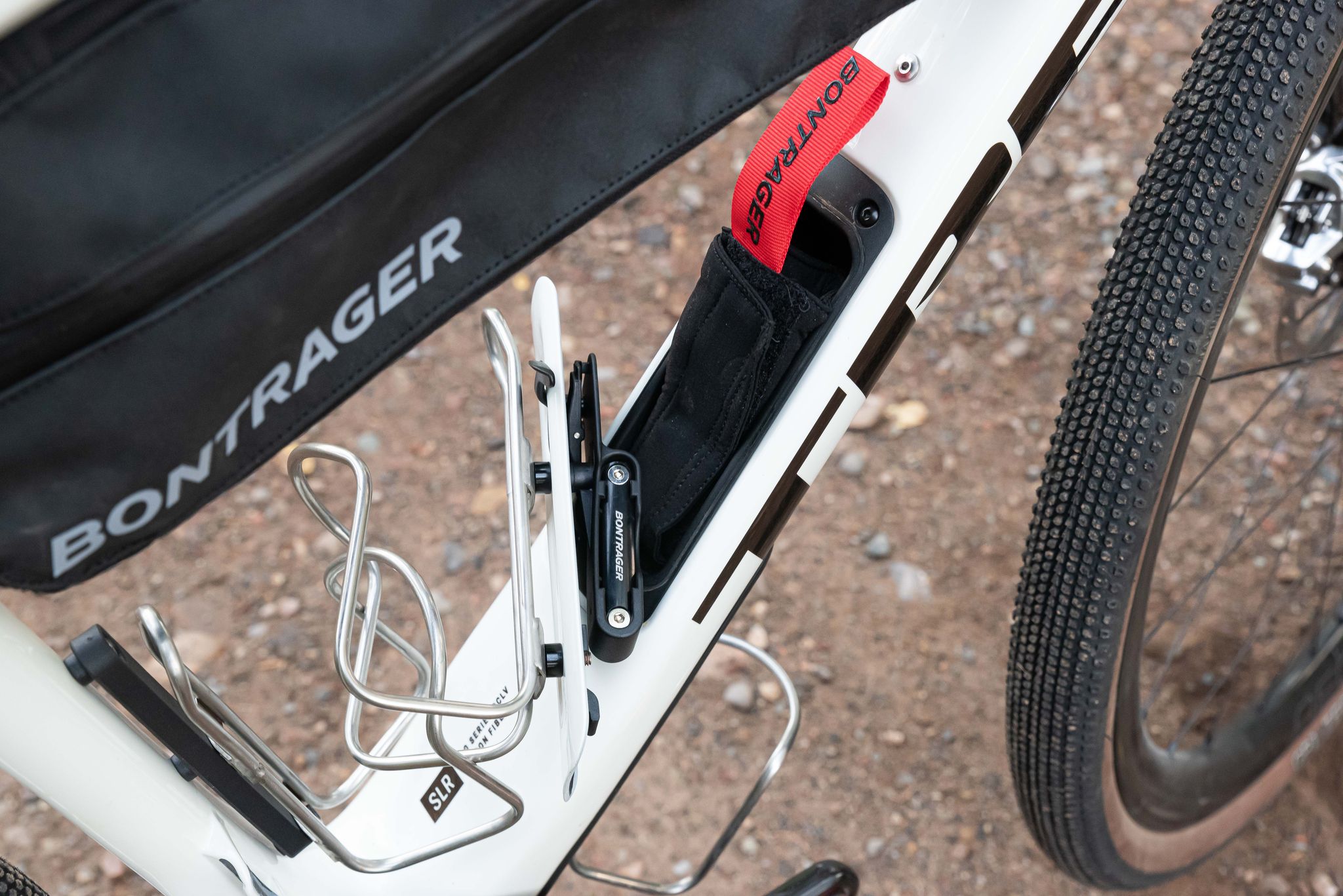
But though the three platforms share geometry and many features, they’re tuned to suit different riders.
The SLR is race oriented, so it gets the highest-grade carbon composite, a traditionally shaped (not flared) road bar, and forgoes cargo mounts on the fork. This model also has Trek’s no-cut seat mast with (non-adjustable) top tube IsoSpeed.
The SL gets an all-purpose gravel focus. It uses lower grade carbon than the SLR but adds adventure riding features like three-pack mounts on the fork legs, and a flared gravel bar. This model does have Trek’s IsoSpeed decoupler in the seat tube but fits a traditional 27.2mm seatpost: That makes this model dropper-post compatible.
The aluminum framed ALR is the least expensive of the new Checkpoints, and Trek’s representatives expect this to be a popular model with riders looking for a commuter or utility bike. It has the same geometry as the other platforms, and the same rack, fender, framebag and mudguard mounts as the Checkpoint SL, and it gets a flared gravel bar and 27.2mm dropper-post compatibility. The two features it lacks relative to the SL are the in-frame storage and an IsoSpeed decoupler.
Trek Checkpoint — Models, Prices, Weights
There are eight complete bikes for the USA: one ALR, three SL, and four SLR models. Prices and claimed weights are below, with a quick look at the build kits. All complete bikes roll on Bontrager GR1 40mm tubeless ready tires, have tubeless ready rims, and ship with tubeless valves, rim strips, and sealant.

- Checkpoint ALR 5— $2,400, 21.5lb. Shimano GRX600 2x11 with 30/46 rings and 11-34 cassette
- Checkpoint SL 5—$3,200, 21.3lb. Shimano GRX600 2x11 with 30/46 rings and 11-34 cassette, Bontrager Paradigm SL wheels (21mm internal width)
- C heckpoint SL 6 eTap — $4,100, 20.0lb. SRAM Rival eTap AXS 1x12 with 40 ring and 10-44 cassette, Bontrager Paradigm Comp wheels (25mm internal width)
- Checkpoint SL 7 eTap—$6,3,00 19.6lb. SRAM Force Wide eTap AXS 2x12 with 30/43 rings and 10-36 cassette, Bontrager Aeolus Pro 3V carbon wheels (25mm internal width)
- Checkpoint SLR 6 eTap—$7,600, 19.1lb. SRAM Rival eTap AXS 1x12 with power meter, 40 ring and 10-44 cassette, Bontrager Aeolus Pro 3V carbon wheels (25mm internal width)
- Checkpoint SLR 7—$8,300, 19.4lb. Shimano GRX815 2x11 with 31/48 rings and 11-34 cassette, Bontrager Aeolus Pro 3V carbon wheels (25mm internal width)
- Checkpoint SLR 7 eTap—$8,300, 18.6lb. SRAM Force eTap AXS 1x12 with power meter, 40 ring and 10-44 cassette, Bontrager Aeolus Pro 3V carbon wheels (25mm internal width)
- Checkpoint SLR 9 eTap—$12,000, 17.9lb. SRAM Red eTap AXS 1x12 with power meter, 40 ring and 10-44 cassette, Bontrager Aeolus RSL 37V carbon wheels (25mm internal width)
Trek Checkpoint — Ride Impressions and Review
Trek sent me the top-of-the-line SLR 9 eTap AXS well ahead of the bike's launch, and I’ve done my usual “gravel” shenanigans on this bike—long gravel rides, mixed media rides, some road riding, and plenty of singletrack.
On anything dirt, and especially on singletrack, the new Checkpoint is not just better than the previous generation, it’s one of the best gravel bikes I’ve been on. I love the previous generations above-average comfort and smoothness and that’s still present, but the geometry updates make the new bike much more capable: And the faster and more technical the dirt, the more the geometry pays off. It’s accurate, but not darty, and composed but appropriately flickable.
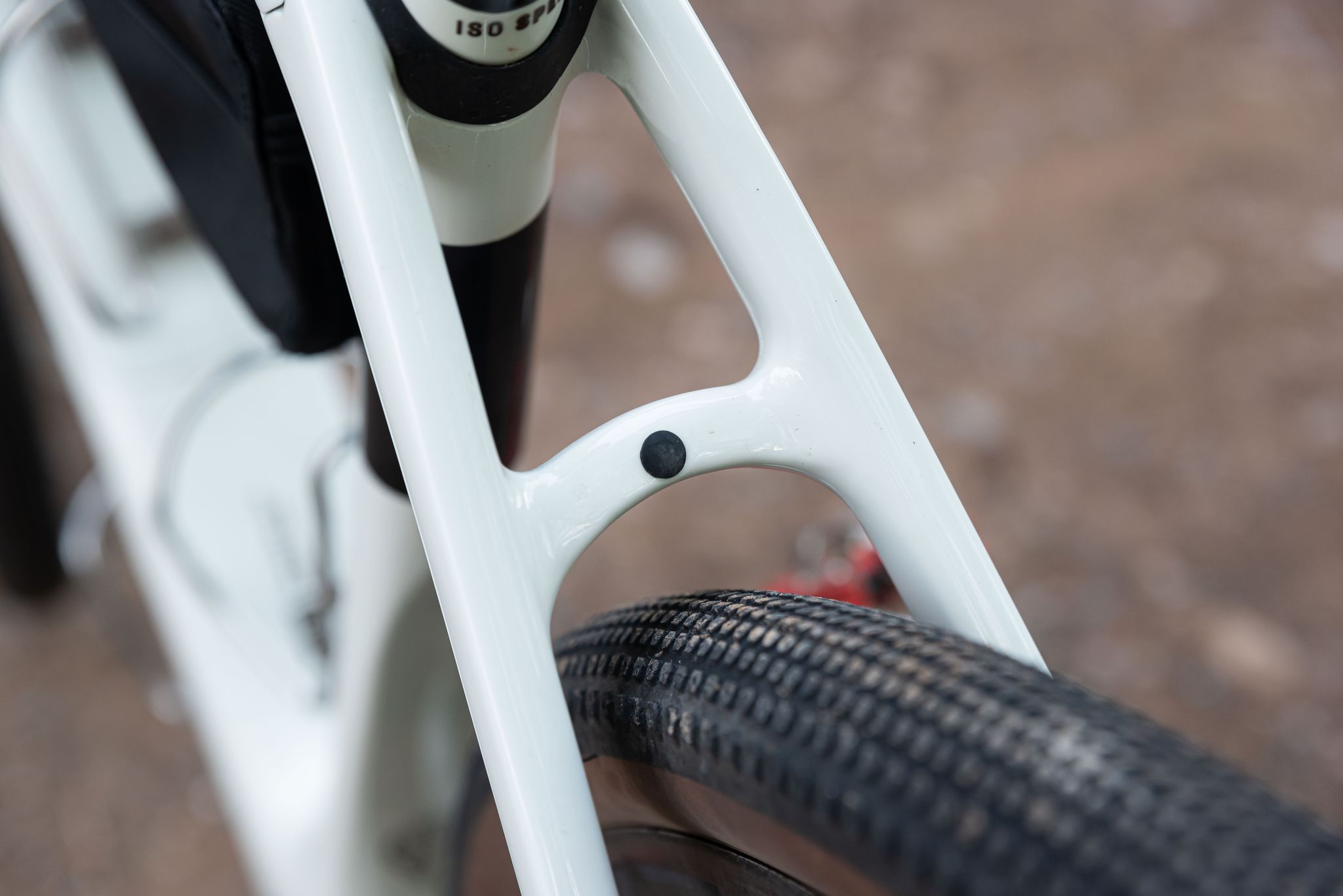
Here’s the rub: Give us geometry that lets us go faster and…we’re going to go faster. The Checkpoint is so damn fast on downhills singletrack that I take issue with Trek’s decision to forgo front IsoSpeed or correct the geometry for a suspension fork. I mean, this is a pretty compliant bike overall, but when you go faster the hits get stronger. Many times I wacked stuff that made my hands and arms stung. Bigger tires help, but a 45mm maximum isn’t that big (Canyon’s Grizl fits 50s, for example).
Basically, there were times I felt like the geometry was writing checks the Checkpoint couldn’t cash without some help from suspension. But then, when you add weighty suspension and fatter tires, you have a much different bike; so I’m also not sure that’s the answer. I think we’re at a very interesting point with “progressive” gravel bikes where they are tickling the edges of mountain bike capability and, if they go much further, suspension must be a part of the conversation.
On the flip side of the new Checkpoint’s added capability, it feels less chipper on paved surfaces. The old Checkpoint was almost a road bike that could do gravel while the new one definitely takes cues from the world of mountain bikes. On balance, this works out okay for the most fun and challenging parts of gravel rides, though the Checkpoint bike feels a bit logy on the liaisons between the best bits. That’s a compromise I’m okay with, but if you want more quickness on pavement from your gravel bike you might be happier on something like a Cervelo Aspero 5 or the 3T Exploro Racemax .
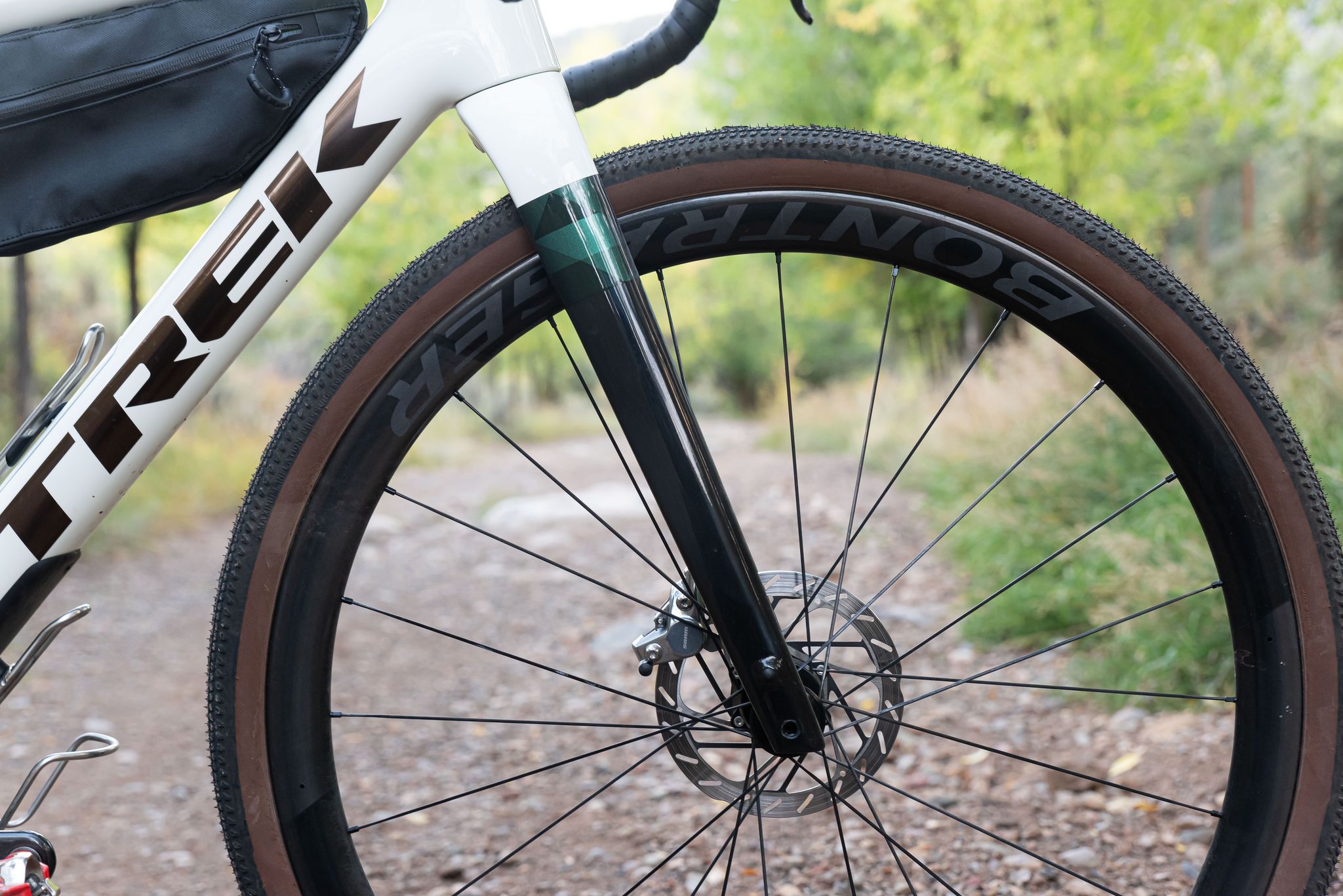
Trek isn’t breaking any new ground with the Checkpoint’s geometry and handing traits. This mountain bike influenced longer, more stable, geometry (oh, hello, Chamois Hagar ) is an increasingly popular trend, and already found in bikes like Canyon’s Grizl (which the Checkpoint reminds me of) and some other bikes. I’m curious to see how this geometry goes down with the general riding public, and how far brands push the geometry. When used for actual gravel and off-pavement riding and racing, this geometry makes sense. But if riders are buying gravel bikes because they want more capability and comfort out of a drop bar bike, but are mostly sticking to pavement, I don’t think this geometry suits that kind of rider.
Handling covered, let’s look at the rest of the Checkpoint’s attributes. The added cargo options (in frame storage, direct mount bag in main triangle) are great, almost mandatory, features for a gravel bike. My 54cm frame did have two water bottle mounts on the downtube, but it required a bit of trial and error with a Wolf Tooth B-Rad base to get two bottles to fit comfortably. With the Bontrager frame bag mounted, I needed to reposition the seat tube cage location to fit a bottle. Larger sizes have more space in the main triangle, so this won’t be an issue, but riders on frames smaller than 54 might need to look into alternative ways to carry water if they run the frame bag.
I do have a gripe with the road-bend bar on the SLR models. Trek sees this model as appealing to racers who are coming from a road background. This is why it gets a traditional, and lighter, road bar. But it’s still a gravel bike, and flared drops are awesome for comfort and control. Besides, flared bars are so awesome that once you ride them, you’ll want to put them on your road bikes. Thankfully, Trek didn’t do anything weird with the bar and stem on the new Checkpoint, so riders can fit anything they desire.
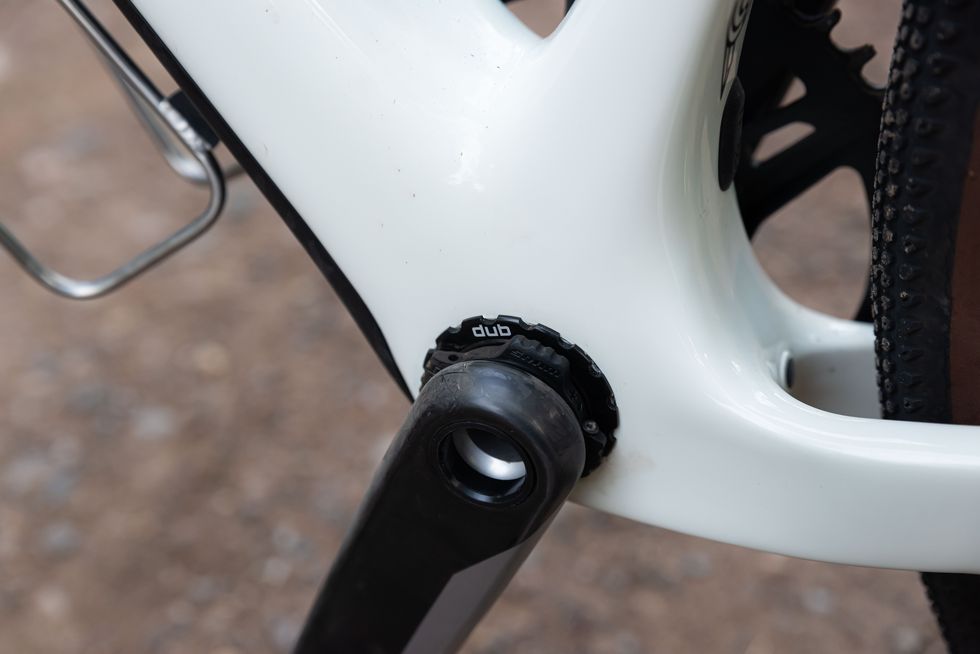
That’s my only gripe though. I love this bike, and the rest of the parts kit is dialed. I’m going to throw out special kudos for spec'ing the SRAM-equipped SLR models with power meters from the factory. I think that’s perfectly in line with this bikes purpose and customer.
Overall, the new Checkpoint is a wonderful gravel bike. It’s faster, better handling, and more suited to the needs of the today’s gravel rider.
Trek Checkpoint SLR 9 eTap
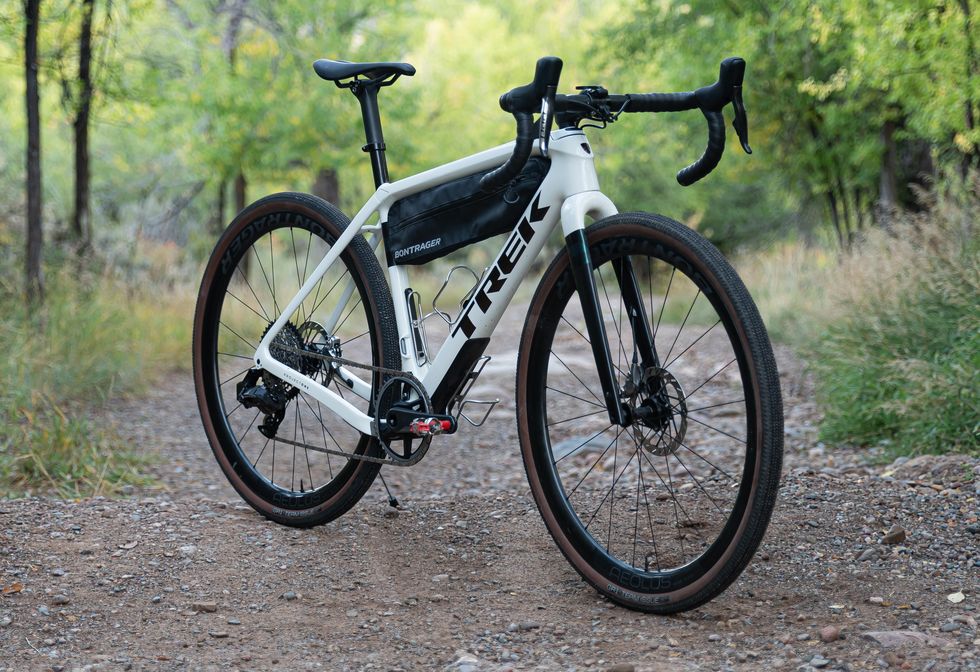
Would you like to test new gear for Bicycling ? Click HERE to find out more.

A gear editor for his entire career, Matt’s journey to becoming a leading cycling tech journalist started in 1995, and he’s been at it ever since; likely riding more cycling equipment than anyone on the planet along the way. Previous to his time with Bicycling , Matt worked in bike shops as a service manager, mechanic, and sales person. Based in Durango, Colorado, he enjoys riding and testing any and all kinds of bikes, so you’re just as likely to see him on a road bike dressed in Lycra at a Tuesday night worlds ride as you are to find him dressed in a full face helmet and pads riding a bike park on an enduro bike. He doesn’t race often, but he’s game for anything; having entered road races, criteriums, trials competitions, dual slalom, downhill races, enduros, stage races, short track, time trials, and gran fondos. Next up on his to-do list: a multi day bikepacking trip, and an e-bike race.

.css-1t6om3g:before{width:1.75rem;height:1.75rem;margin:0 0.625rem -0.125rem 0;content:'';display:inline-block;-webkit-background-size:1.25rem;background-size:1.25rem;background-color:#F8D811;color:#000;background-repeat:no-repeat;-webkit-background-position:center;background-position:center;}.loaded .css-1t6om3g:before{background-image:url(/_assets/design-tokens/bicycling/static/images/chevron-design-element.c42d609.svg);} Bike Reviews

The Best Beach Cruisers for Leisurely Rides

The Best Hardtail Mountain Bikes

Best Hybrid Bikes You Can Buy Right Now

The 14 Best Road Bikes of 2024

The Best Commuter Bikes for Getting Around Town
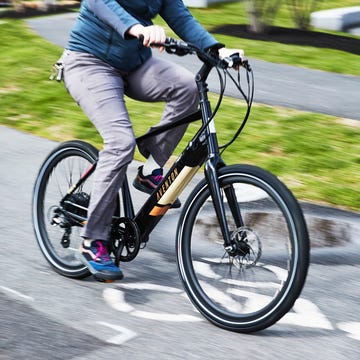
The 10 Best Electric Bikes, Tested by Our Editors
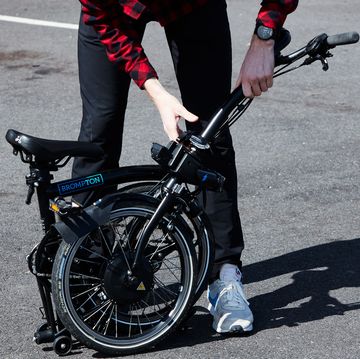
These Folding Bikes Can Go Everywhere

Smoother and Faster: The New Pivot Switchblade

The Best Beginner Mountain Bikes

Reviewed: Colnago's Italian Made C68 Gravel
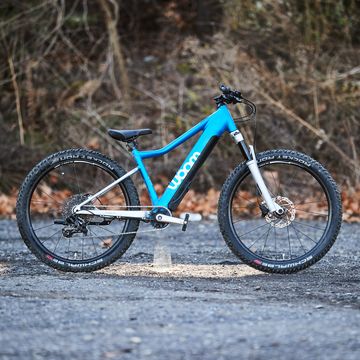
The 6 Best Kids’ Bikes in 2024

How to Find The Best Trek Gravel Bikes Guide
- Latest Posts
- How to Pick the Best Cannondale Mountain Bike - December 5, 2021
- Cannondale Trail 7 Review and Guide: Is It Worth the Investment? - November 28, 2021
- The Best Juliana Mountain Bikes - November 12, 2021
Are you ready to take on rugged gravel roads like a pro? Maybe your cyclist dreams feature a calm gravel road in the countryside, instead? Whatever your reasons for picking up gravel bike riding, it’s come to my attention that cyclists, from beginners to experienced riders, need a guide for the best Trek gravel bikes.
Today, I’ll explain why Trek makes the best gravel bikes and show you some of their best models based on their performance , design , and price !
Table of Contents
The Best Trek Gravel Bikes at a Glance
These are my favorite Trek gravel bikes to recommend to people. If you’re a beginner or if you’ve been riding over gravel roads for years, Trek has never failed to provide premium bikes. I’m a fan of how these models utilize features specific to gravel bikes and their designs.
- Best Overall: Domane+ LT 9
- Best Design : Checkpoint SLR 7
- Best for Women : Domane SLR 6 eTap
- Best for Men : Boone 6 Disc
- Best Bargain : Checkpoint SL 5
About the Trek Brand
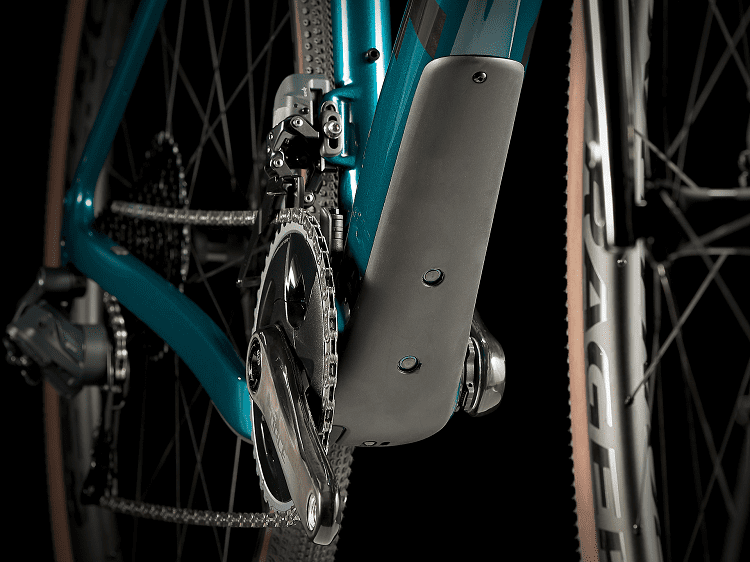
Hesitant to put the money in the pocket of a company you know nothing about? I definitely am, which is why I’m going to give you some background information about this brand. Trek has a rich history with a line of products to be proud of, so we’ll dive into what makes them so unique.
What Makes Trek Stand Out
The original founders of Trek decided to make the first high-quality bikes available from mid to high price points in the United States. I love that this brand was founded on the principle of making a unique, well-built product that was the first of its kind in the states. Trek took bike production to the next level.
Trek’s Sustainability Plan
One reason why I recommend Trek so strongly is their sustainability. Trek has seriously reduced its overall carbon footprint by using renewable energy sources at its facilities, cutting down on plastic packaging, and reducing air freight milage.
Trek has also managed to create 15 products that are made entirely out of reclaimed materials. By using materials that would have polluted the ocean or ended up in a landfill, Trek is doing much more to cut down on global pollution than most other bicycle companies.
Trek is a Company of Racers for Racers
Trek is run and operated by a team that is deeply passionate about cycling. Trek’s team has created some of the best bikes used by famous racers because the team knows what features help competitors take the gold.
What Does Trek Offer?
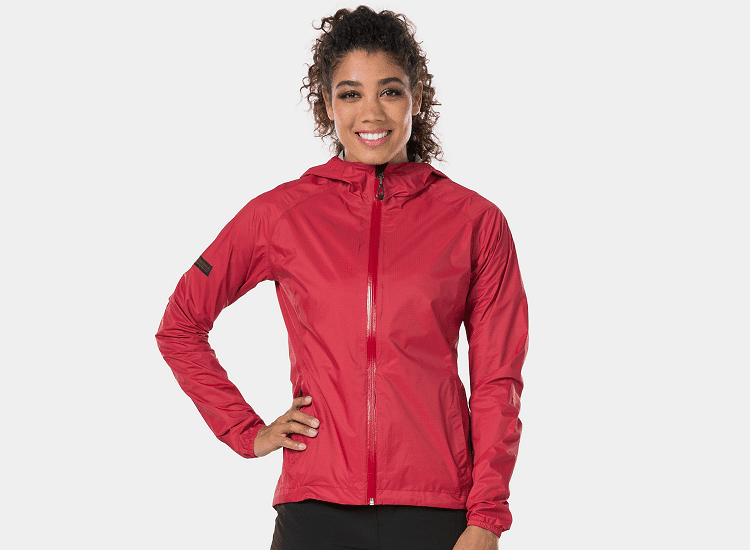
Now I’m going to show you what products Trek can offer for gravel bike riding. This brand offers you everything you’ll need to hit the road and start pedaling. From well-constructed bikes to equipment that makes cycling easier to stylish gear, Trek’s got the whole package deal.
Trek’s signature products are bikes. Trek offers a lot of different bike varieties, including:
- Road bikes for racing and casual riding
- Cross-country bikes for gently rugged terrain
- Trail bikes that are perfect for family trips
- Downhill bikes meant for downhill racers
- Gravel bikes that traverse rocky roads
I’m a huge fan of the Checkpoint SLR 7 . This gravel bike is worth the steep price if you’re serious about the sport. Its sleek design and effortless functionality make it a summer afternoon favorite for me and tons of other riders.
Electric Bikes
Electric bikes aren’t quite what you’re thinking: you still have to pedal. Electric bikes do have a motor that makes it easier to pedal for longer periods of time. If you’re traversing long distances with your gravel bike, an electric bike makes the journey a breeze.
This electric gravel bike, the Domane SLR 6 eTap is a gorgeous, easy-to-peddle bike from Trek. I love that this bike is customizable with different color options, too. The overall construction, including the motor, makes this bike speedy, lightweight, and sturdy.
Trek offers equipment that makes your life as a cyclist easier. Trek sells all manner of bike parts, but they also provide classic riding gear every cyclist needs. My favorites are items out of collections of equipment, like the handy commuter set and winter cycling gear.
If you search Trek’s collection of gravel bike gear, you’ll find a ton of options for your country road adventures. They’ve got sturdy helmets, shoes that grip the pedals securely, front bike lights, bike racks, and much more.
Every cyclist has got to ride in style, right? Trek can help with that. Trek has everything from lightweight summer gear to warm and protective winter riding clothes . You can buy team wear, a ton of different helmets, and jackets.
My favorite section to look through is the jackets and vest section. Trek offers a lot of solid bright and neutral colors for both their men’s and women’s apparel.
What to Look for in a Gravel Bike
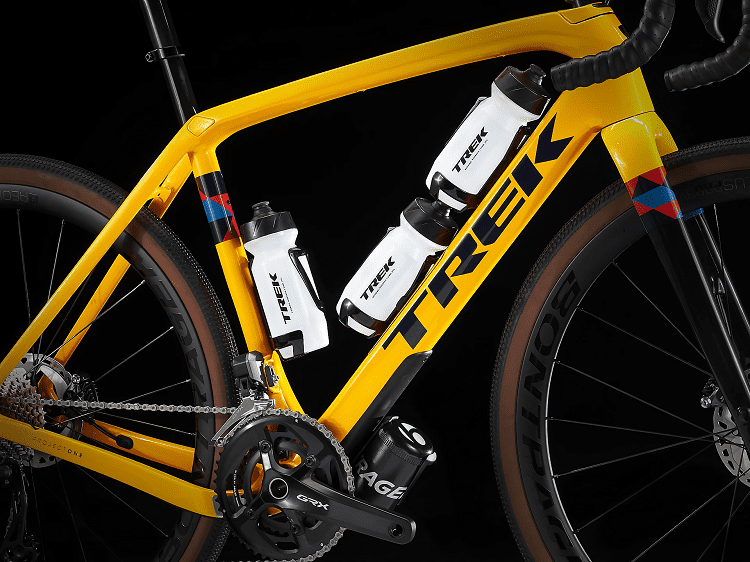
It’s important to know what to look for in a gravel bike that’s going to fit your individual needs. That’s why I’m going to walk you through the best gravel bike features to look for that will match your style of riding. Like gentle country roads? Going up and down steep hills? Just like how there’s an app for everything, there’s a bike for everything, too.
When you ride over gravel roads, thin tires can wobble around when they hit a sharp rock. That’s why gravel bikes are equipped with wide tires. Wider tires give you better traction, which is why I recommend checking the width of a bike’s tires before you buy it.
This next part is more your doing, but your gravel bike’s tires should be at a lower pressure than usual. Surprised? Lower air pressure in your tires is another great way to give your bike better traction. Better traction means a more comfortable ride over rough terrain.
Flared drop bars are the preferred handlebars for gravel bikes. Why? These handlebars give you better control (which you’ll need for gravel roads) than other handlebars. If you’re climbing uphill on your bike, these handles give you better stability by letting your body relax in a natural position.
Having a comfortable seat is paramount if you like bike riding for long periods of time. To avoid a stiff tailbone, choose a bike with a seat that offers cushy but firm and supportive material.
Be sure also to choose a gravel bike with an easily adjustable seat. Trek’s bikes are equipped with a micro-adjust seat master that makes it easy to change the height.
Unlike mountain bikes, gravel bikes don’t have much suspension. While suspension absorbs shock from the friction of the road, it also slows you down. When riding on a flat surface like a gravel road, this is something most cyclists don’t want.
Instead, brands like Trek use features like an ISO decoupler to absorb shocks so that you won’t be slowed down. Gravel bikes are built to be lightweight, too, which is another reason they aren’t built with the suspension capabilities of heavier bikes like mountain bikes.
Even though most serious cyclists have gloves to help them grip the handlebars, buying a bike with grips gives you even more stability. Extra stability is super important when you’re riding over bumpy, unforgiving roads where one slip-up could mean a crash.
Make sure you buy a bike with grips that feel comfortable to your hands. The last thing you want to deal with on a relaxing morning ride is blisters. Most grips for bikes are traditional grips, which are shaped cylindrically.
Other types of grips are winged ergonomic grips, dual compound grips made from 2 different materials, and lock-on grips that won’t slide across the handlebars.
Tips for Cleaning and Storing Your Trek Gravel Bike
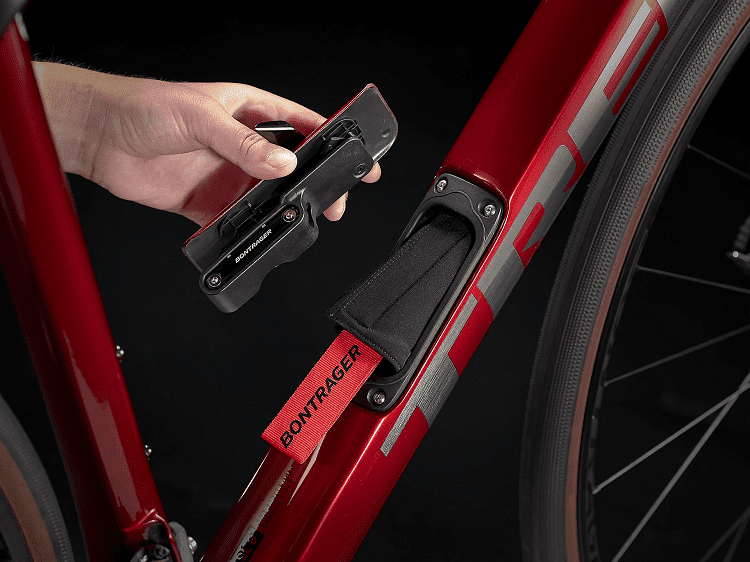
Let’s face it-Trek gravel bikes are expensive. Since Trek’s bikes are a high-quality investment, it pays to take care of them. That’s why I’m going to offer you tried and true tips for making sure your gravel bike stays in peak condition for years after you buy it.
Trek bikes are meant to hold up for a long time. With a few simple steps, you’ll be riding your Trek bike decades from now.
Cleaning Your Trek Bike
When it’s time to clean your bike after taking on a muddy course or dust has taken away the frame’s shine, here’s what you do:
- First, rinse your bike outside with the hose on a low-pressure setting. Stand a few feet away from the bike as you rinse it.
- Fill a bucket with warm water and soap specifically formulated for bikes.
- Grab a sponge, dunk it in the soapy water, and use the sponge to clean the surfaces of your bike.
- Use a degreaser for bikes on the chain to make sure it will continue to run seamlessly.
- Put the hose back to a low setting and rinse your bike again.
- Dry every part of your bike with a microfiber cloth. Drying your bike is vital in making sure none of the parts rust.
- Afterwards, use a bike lubricant on the gear mechanisms and derailer.
- Press the pedals to move the chain so that the chain is in continuous motion as you use the degreaser on this part, too.
Storing Your Trek Bike
Firstly, be very careful about storing your bike outside. While Trek bikes are constructed to last, they are made of materials that will wear down if exposed to the elements for long periods of time. If it’s raining or snowing, storing your bike outside is an especially big no-no.
It’s best to store your gravel bike inside, but what do you do if you’re short on space? Storing your bike in the garage might not be an option if you live in an apartment complex. If you want to save space and store your Trek bike indoors, we recommend:
- Buying a freestanding bike rack to be placed indoors
- Buying a poll rack that doesn’t require drilling
- Buying a wall-mounted vertical bike rack if you own your home
The Best Trek Gravel Bikes
In my opinion, these 7 are the best gravel bikes from Trek. All of Trek’s gravel bikes are well-constructed from high-quality materials. Every bike has something about it that makes it unique and well fitted for a specific rider; however, these 7 gravel bikes take the cake for the best overall features.
Checkpoint SL 5
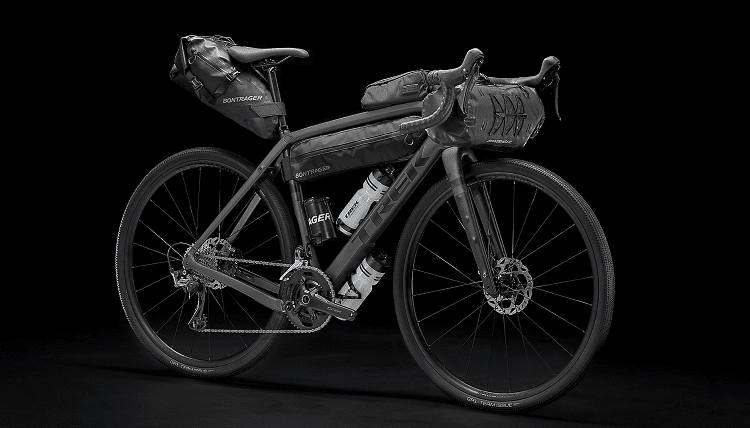
Best For: Best Bargain
The Checkpoint SL 5 is the least expensive gravel bike on our list. Though this is the most cost-efficient option, I wasn’t disappointed by its lightweight build and smooth-riding capabilities. This model comes in 2 color varieties: black and gray or red and dark blue.
This bike is perfect if you like to ride smoothly, comfortably, and fast. The IsoSpeed decoupler absorbs shocks in the road and the innovative geometry makes for a nimble design. You’ll be impressed by the sleek internal storage and various mounts throughout the bike.
- Material-OCLV carbon
- Price Range- $4,000-$4,100
- Warranty- Lifetime warranty
- Best Feature- Price point
Make sure to keep this Trek gravel bike indoors when you aren’t using it. Even during hot, sunny weather, it’s better for your bike to be kept indoors on a bike rack. Nowadays, there are many freestanding bike racks that don’t need to be mounted on a wall.
- Least expensive
- Comfortable and smooth riding
- Lightweight carbon makes it fast
Doesn’t include all the features of the other bikes
Domane+ LT 9
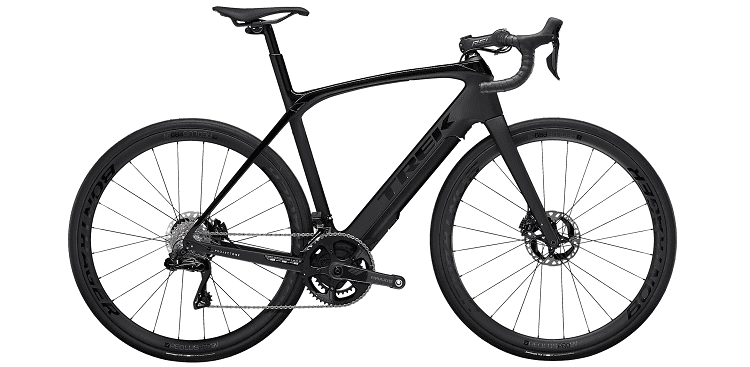
This may be the most expensive gravel bike on the list, but it’s priced high for good reason . Like the previous bike, this model can be purchased in black and gray or red and dark blue. Being an e-bike, it’s easier to ride for longer periods of time thanks to the fast and efficient motor.
You can always remove the motor and battery with a storage cover for a traditional ride. I enjoy that the front and rear IsoSpeed soaks up bumps and dips in the road. The endurance-centered geometry is made for perfect handling, speed, control, and responsiveness.
- Material- High-quality carbon
- Price Range- $17,000-$18,000
- Best Feature- High-quality materials and construction
Is it Worth it for You?
If you are a gravel bike racer or would rank gravel bike riding in your top 3 hobbies, this top-of-the-line bike is worth the price. I understand not everyone wants to invest over $15K on a bike they only ride a few times a season, which is why I’d only recommend this to very passionate cyclists who want the best.
- Made to feel like traditional bike riding
- Can connect to your smartphone
- Compatible with fenders
- High-performance geometry
Very expensive
Checkpoint SLR 7
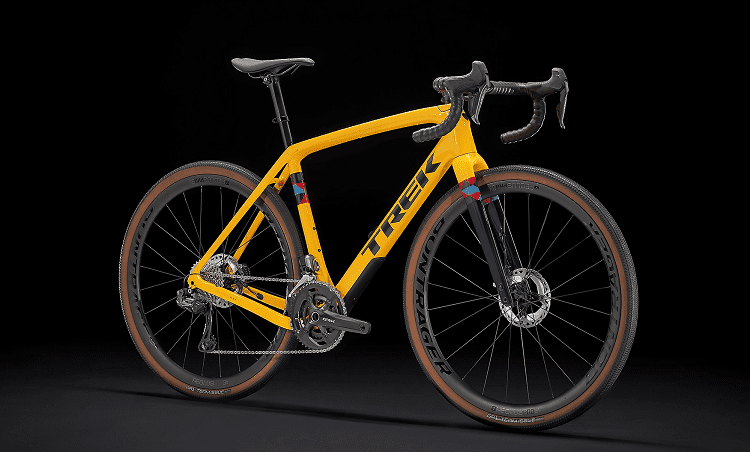
Best For: Design
This gorgeous Trek gravel bike comes in 4 different color choices. Meant for the bumpiest gravel roads, you’ll like this bike if the terrain you tackle is rough. This bike also uses IsoSpeed suspension to absorb shocks.
The rear derailer makes the chain retention smooth, which allows for a more comfortable ride. I’m a huge fan of the mounts all over the bike, too, which make it easy to store water bottles, bags, and more.
- Material- OCLV carbon
- Price Range- $10,500-$11,500
- Best Feature- Gorgeous colors on frame and wheels
When you’re ready to wash this gravel bike, make sure to pick up soap, degreaser, and lubricant that is specifically made for bikes. Also, but sure to use a low water pressure setting as you clean your bike with a hose.
- Beautiful design with many colors
- Lightweight, fast, and durable
- Comfortable seat and handlebars
Domane SLR 7 eTap
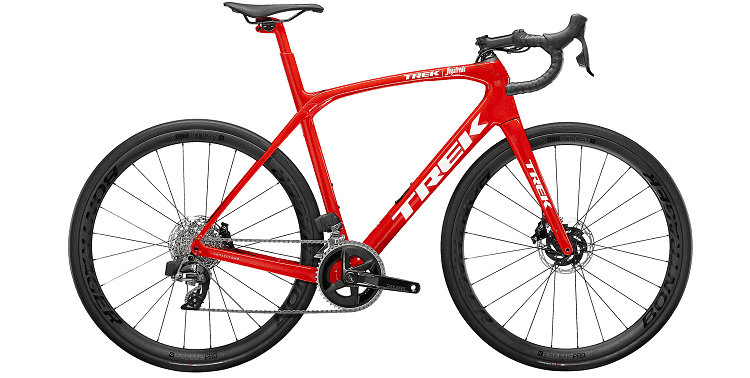
Best For: Women
You’ll have an easy time flying through the course with this ultralight gravel bike. Its OCLV carbon composition makes it easy to carry around, even if you travel with your bike. This e-bike is almost half the price of the one above, so this is a great choice if you’re a casual cyclist.
This bike features an SRAM Rival AXS power meter that lets you keep track of your training. Through Project One, you can fully customize this model.
- Price Range- $9,100-$9,300
- Best Feature- Ultralight
What’s the Difference Between an E-Bike and a Traditional Bike?
The motor makes all the difference. While e-bikes are partially powered by a motor, you still have to pedal to make the bike go forward. The motor simply makes it easier to take on longer distances by giving your peddling extra power.
- Incredibly lightweight
- Powered by a motor
- 5 color options
Not as many features as the e-bike listed above
Checkpoint SL 7 eTap
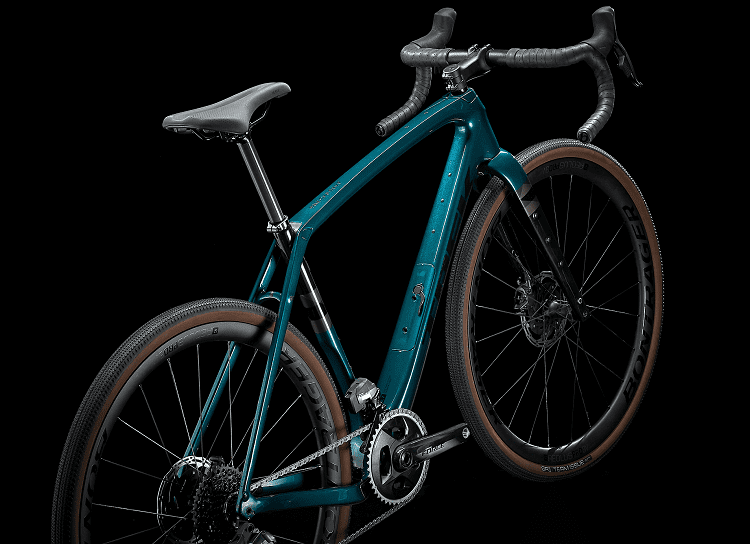
Best For: Bargain E-Bike
This is the least expensive e-bike out of all the Trek gravel bikes on our list. This bike is under $10,000. Though you’ll only have one color option, blue and gray, you’ll have the option to ride with or without the motor.
The comfortable seat and handlebars make this bike ideal for endurance riding . Whether you like calm roads or bumpy trails, this gravel bike can handle it all with ISO speed suspension.
- Price Range- $7,500-$8,500
- Best Feature- Price point for an e-bike
Gifting Ideas
You can pair this e-bike with other accessories in the Trek store if you are buying this bike as a gift. We recommend you pair this bike with:
- Water bottle
- Cycling jacket
- Cycling shoes
- Inexpensive
- Amazing endurance with motor and materials
- Carbon wheels easily traverse rough terrain
Only one color choice
Domane SL 6
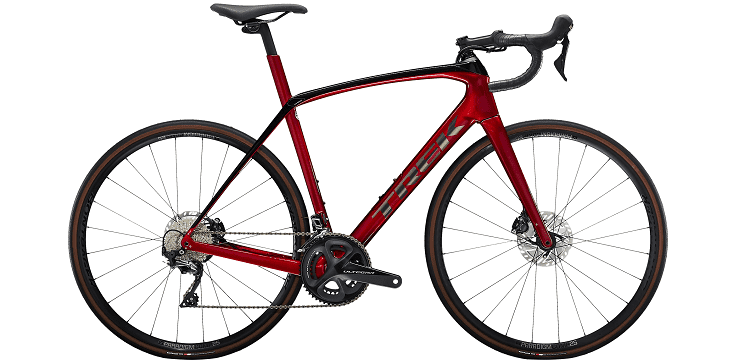
Best For: Calm Rides
If you include relaxing rides down rural roads in your free time, this is the gravel bike for you . The tubeless wheels are very hard to puncture, so you won’t have to worry as much about maintenance.
The geometry of this bike was designed with comfort in mind. Though built to sustain your comfort for long periods of time, this bike was also built for racing. You can enjoy a fast-paced ride with front and rear IsoSpeed.
- Price Range- $5,000-$6,000
- Best Feature- High-quality wheels
Ideas for Riding this Bike
Where are some perfect places to take this gravel bike? I’d like to ride this bike on:
- Flat nature trails
- Winding gravel roads
- Countryside
- Bike trails
- High-quality tubeless wheels
- Inexpensive compared to other bikes
- Offers a smooth and comfortable ride
Not for rough terrain
Boone 6 Disc
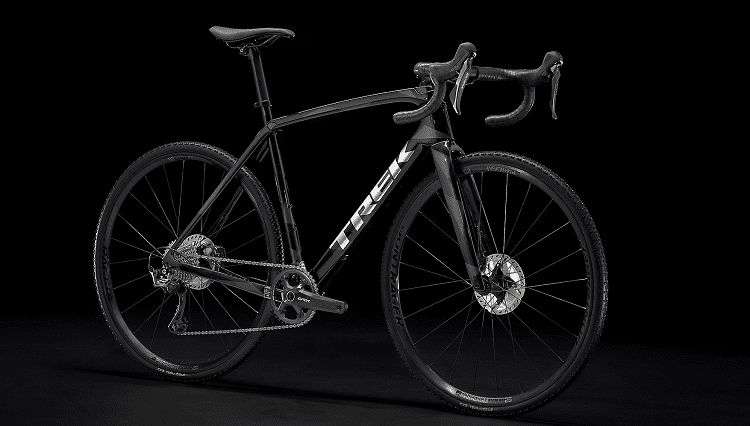
Best For: Men
I love that this gravel bike was created to handle rough roads. Muddy gravel, dips, and turns won’t be able to stand in your way with this bike. The chain retention and easy-to-grip handlebars give you optimal control.
Going uphill is made easy with the tube shapes and cross-specific geometry. You can buy this bike in black and gray or red and dark blue.
- Material- Carbon
- Best Feature- Durability
Why It’s Great for Rough Riding
This Trek gravel bike is ideal for tackling rough roads. This bike was designed with specific attention to chain retention, which gives you excellent control over the bike. The hoods and levers were also designed to give you a better grip.
- Amazing control and durability
- Lightweight and strong carbon build
Only rear IsoSpeed
Are you ready to have your most frequently asked questions about Trek gravel bikes answered? While these are 3 of the most frequently asked questions I’ve received about gravel bikes, I’d like to answer any more you might have. Leave a comment below if you don’t see your question answered in this next section!
Answer: Trek gravel bikes are incredibly good bikes to buy! Trek is a high-quality gravel bike brand that has made gravel bikes specifically for uneven terrain. Trek’s gravel bikes grip the ground like a mountain bike while giving riders agility like a road bike.
Answer: Depending on the kind of mountain biking you’re planning on doing, yes. Keep in mind that like a mountain bike, gravel bikes are made for uneven terrain. Unlike mountain bikes, gravel bikes aren’t as good as handling steep, muddy hills. If the mountain biking you’re doing isn’t extreme, a gravel bike should be just fine.
Answer: Some gravel bikes are more expensive than others. A high-quality gravel bike like a Trek bike is going to be more expensive than a low-quality model. That’s because gravel bikes require specialized gear that makes them good for riding over uneven roads, bumps, and dips.
The Last Lap
You’ve completed the last leg of the race! We went over what makes Trek gravel bikes an awesome choice for conquering gravel roads and what to look for in a quality gravel bike. We got to look over individual Trek gravel bikes so you can determine which is the best fit for you.
In my opinion, the Domane+ LT 9 is one of the best choices for its overall great features.
Do you have any questions or stories to tell about cycling on gravel roads? Let us know in the comments below! For more helpful bike guides, check out our picks for best mountain bikes !
Leave a Reply Cancel reply
Your email address will not be published. Required fields are marked *
This site uses Akismet to reduce spam. Learn how your comment data is processed .

MTB Insider Copyright 2022 | A Venture 4th Media company | Privacy Policy | Affiliate Disclosure | FTC Disclosure | About Us

Trek gravel bike size guide

Finding the right size bike is crucial for a comfortable and enjoyable riding experience. If you’re considering a Trek gravel bike, you’re in luck!
In this blog article, we will be diving into the Trek gravel bike size guide, providing you with valuable insights and guidance on selecting the perfect size for your cycling needs. We’ll explore the various factors to consider when determining the appropriate frame size, such as your height, inseam measurement, and riding style.
Additionally, we’ll discuss the importance of bike fit and how it impacts your overall performance and comfort on the gravel roads. Whether you’re a beginner or a seasoned cyclist, understanding the Trek gravel bike size guide will empower you to make an informed decision and ensure that your new bike fits you like a glove.
So, let’s embark on this journey of discovering the ideal size for your Trek gravel bike and get ready to hit the gravel trails with confidence.
Overview of Trek Gravel Bike
Trek Gravel Bike is your ideal companion for off-road adventures and may even prove to be a game-changer for your outdoor workouts. But to enjoy the full benefits of this beast, you have to nail down one thing: getting the right size.
Why finding the right size for your trek gravel bike is important
First off, your comfort is at stake! Riding a bike that’s too large or too small can cause awkward body positions, discomfort, and even injury. Sizing matters not just for comfort, but your performance as well. A properly sized bike boosts your efficiency and control, which is especially crucial on rugged terrains that trek gravel bikes are built for.
To assist with accurate sizing, Trek provides a detailed size guide that factors in your height and other considerations. Before buying, compare your personal measurements with their chart, or better yet, go for a test ride! After all, it’s about attaining harmony between you and the bike.
Understanding Trek Gravel Bike Sizing
When it comes to finding the perfect fit, a Trek gravel bike is as comfortable as it gets. Let’s delve deeper into how to choose the right size.
Factors to consider when choosing the correct size for your Trek gravel bike
Bike size is a crucial aspect to think about. It’s not just about your height but also your inner leg length, reach, fitness level and the type of riding you’ll be doing.
For Trek gravel bikes , frame size ranges from 49cm to 62cm, generally speaking. Here’s a helpful guide: if you’re 5’3″-5’6″, go for a 50-52 cm frame; people of 5’6″-5’9″ will likely fit a 54-56cm frame. However, it’s always ideal to test ride before settling.
The bike’s geometry factors greatly in riding comfort and efficiency. Trek’s gravel bikes are designed for comfort during long rides, with features like a more upright riding posture.
Reach and stack measurements
Finally, keep an eye on reach and stack measurements too. ‘Reach’ determines how stretched out on the bike you’ll be while ‘stack’ is the distance from the middle of the bottom bracket to the top of the head tube which affects your riding position. Optimizing these measurements can enhance your riding experience.
Trek Gravel Bike Size Chart
When venturing into gravel bike territory, your adventures must come with the assurance of a perfect fit. Let’s help you choose the right Trek gravel bike size, and kick-start your journey on a good note.
A detailed size chart for Trek gravel bikes
Trek provides a comprehensive size guide for their gravel bikes, which details the rider’s height against the appropriate bike size.
Men’s sizes
For men, bike sizes range from small (suitable for heights from 5’3”-5’6”), medium (5’6”-5’9”), large (5’9”-6’2”), to extra-large (6’2”- and above).
Women’s sizes
On the other hand, women’s sizes typically begin from extra small (suitable for heights below 5’3”), with small (5’3”-5’6”), medium (5’6”-5’9”) following closely, before capping at large size (5’9” and above).
Take note , these numbers are a guide and personal comfort and riding style should prevail when making your final decision.
Armed with this size guide, you’re ready to conquer any trail on your Trek gravel bike. Here’s to thrilling rides!
How to Measure Yourself for a Trek Gravel Bike
If you are passionate about gravel biking and thinking of buying yourself a Trek Gravel Bike, it’s paramount to get the right size. As an off-road enthusiast, comfort and fit are your most important prerequisites.
Step-by-step guide on Measuring your inseam , arm length, and torso length
Measuring your inseam: Stand upright with your back against the wall. Place a book between your legs, with its edge against the wall. Measure the distance from the floor to the book top – that’s your inseam.
Arm and torso length: Extend your arm to your side, level with your shoulder. Measure the distance from your shoulder to wrist – arm length. For torso length, measure from your collarbone to the top of your inseam.
Tools needed for accurate measurements
To get these measurements, you will need a measuring tape and a book. See? It’s easy – no professional skills needed! Now all that’s left is to pick the perfect Trek Gravel Bike that suits your measurements. Enjoy your ride!
Choosing the Right Trek Gravel Bike Size
Embarking on a gravel biking adventure can be thrilling, especially with the dependable Trek bikes. However, it is important to find the right bike size to ensure a comfortable and safe ride.
Using the size chart and your measurements to determine the ideal size for your Trek gravel bike
Choosing the perfect bike is best determined by your physical measurements. To do this, consider the inseam and your height. Trek’s size chart can be quite useful for this. While using the chart, remember that sizes may vary across models, and thus, the chart serves as a general guide.
For your inseam : Stand with your shoes off and feet shoulder-width apart, measure the distance from the ground to your crotch. The result will guide you in identifying a suitable frame size.
For your height : Measure your height and cross-check with Trek’s recommended rider height against each bike size.
Consider trying different sizes if you’re in-between the recommended sizes. Ultimately, comfort is paramount, and ultimately the right Trek gravel bike size should feel ‘right’ to you, both while standing over it and while pedaling.
Adjustments and Customizations
Ever thought of riding your Trek gravel bike with the most comfort and the least strain? Then understanding how to properly adjust and customize your bike will bring about a noticeable improvement to your cycling experience.
Fine-tuning your Trek gravel bike fit with adjustable components such as stem length and saddle position
No doubt, the stem length plays a significant role in your ride comfort. Adjusting it with a shorter or longer stem can either bring the handlebars closer or push them further. You may want it closer for an upright, relaxed position, especially for casual rides. Conversely, if you’re name-dropping on gravel biking adventures, a longer stem puts you in a more forward, aggressive position for better bike control.
The saddle position is another adjustable component that affects your ride. Nudging it forward might allow for stronger pedaling, the better the hill-climbing, while a backwards adjustment usually offers more cruising comfortability.
However, remember, before embarking on a bike fit experiment, it’s crucial you’re educated on the directions to go. If unsure, consulting a professional bike fitter might be best to avoid any potential damage or injury. In the end, the ultimate goal is to enjoy your ride!
Trying Before Buying
Whether you’re a seasoned cyclist or just starting, the fit of your gravel bike plays a crucial role in your riding comfort and performance. At the core of the perfect fit is the ideal bike size.
The importance of test riding different sizes and models before making a purchase decision
Choosing a Trek gravel bike isn’t merely about picking one that looks appealing. It’s about getting the right mix of comfort, ease, and performance. Here is where the magic of test rides comes in. Ready to dive in?
Test riding different sizes: There is no one-size-fits-all when it comes to bikes. Your height, inseam length, and other body measurements blended with the type of riding you plan to do will determine the perfect bike size. You wouldn’t wear shoes that don’t fit, right? The same applies to your bike. Test riding different sizes enables you to feel the difference and find a bike that feels right.
Exploring various models: Even within the same size class, different models can provide varied feel and performance. Test riding various Trek gravel models will help you understand how the bike geometry, component choices, and other design nuances impact your experience.
Remember, it is about the ride, not merely the aesthetic or price tag. Your comfort and enjoyment on a Trek gravel bike will heavily depend on the optimal bike size and model, so take your time to test ride, compare and eventually make a well-informed purchase. It’s an exciting journey to embark on!
Common Mistakes to Avoid
When it comes to choosing the right Trek gravel bike size , it can be an exciting yet daunting process. But fear not! You’re in the right place to avoid common pitfalls and make the selection process smooth.
Mistakes to avoid when selecting the size for your Trek gravel bike
In your quest or the ideal gravel bike, remember each one of them come in different sizes and designs. Falling prey to generalisations or misconceptions about bike sizing can set you up for a disappointing ride.
Overestimating or underestimating your measurements
The accurate way to roll is to know your measurements well. While the inclination towards a larger frame because it’s seemingly ‘better’ or being biased towards a smaller frame for its ‘lightness’ is common, it’s imperative that your bike size matches your body dimension for comfy and efficient rides.
Ignoring the importance of proper bike fit
Lastly, don’t overlook bike fit. A well-fit bike takes into account your height, inseam length, and riding style, which are crucial for your cycling performance, comfort and safety. Neglecting these aspects could lead to a disappointing cycling experience, or worse, lead to injuries. Thus, always seek professional help or utilize online bicycle sizing resources if you’re new to this.
FAQs about Trek Gravel Bike Sizing
You’re probably excited about the prospect of getting your hands on a Trek gravel bike, but you might be wondering about the right size for you. Don’t worry, we got you covered!
Commonly asked questions about finding the right size for a Trek gravel bike
Where do I start with sizing? Start with your height. Trek bikes come in different frame sizes, correlating with your height range.
What if I’m in-between sizes? If you happen to fall between sizes, it’s generally safe to go for the smaller size. Remember, it’s easier to adjust a slightly smaller bike to fit you than a larger one.
How to ensure the perfect fit? Always do a ‘standover’ test. This means you should be able to stand over your bike with a small clearance between you and the top tube.
Why the right size matters? Finding the right size of your Trek gravel bike means increased comfort, better control, less risk of injury, and a more enjoyable ride. Enjoy your biking adventure and remember, choosing the right size is key to your overall biking experience !
Taking the time to find the correct size for your Trek gravel bike ensures comfort, performance, and an enjoyable riding experience
When it comes to choosing the right size for your Trek gravel bike, it’s important to consider your height, inseam measurement, and riding style. By following a few simple guidelines, you can find the perfect fit that offers optimal comfort, performance, and an enjoyable riding experience.
First, determine your height using a measuring tape or by checking an accurate measurement from your healthcare provider. Then, refer to the Trek gravel bike sizing chart to find the size range that corresponds to your height.
Next, measure your inseam, which is the distance from your crotch to the floor. This measurement will help you determine the appropriate standover height for your bike.
Lastly, consider your riding style and preferences. Are you more comfortable with a more upright position or do you prefer a more aggressive, forward-leaning stance? This will help you determine the right frame size and geometry for your needs.
Taking the time to find the correct size for your Trek gravel bike is worth the effort. It will ensure that you can ride comfortably, efficiently, and enjoy every adventure on your new bike. Happy riding!
About The Author
Vinson Lozano
Related posts.

Gravel Bike vs Road Bike: What are the differences?

Gravel bike frame materials compared: Aluminum, carbon, steel or titanium?
Leave a comment cancel reply.
Your email address will not be published. Required fields are marked *
Save my name, email, and website in this browser for the next time I comment.

Gravel bikes let you explore beyond the beaten path and onto more rugged terrain like gravel logging roads and flowery dirt trails.
Checkpoint is made for gravel aficionados who mainly ride off-pavement and want tons of capability.
- See all models
Domane is for cyclists who ride mostly on pavement but want the ability to grind gravel on occasion.

IMAGES
COMMENTS
Adventure unpaved on a gravel bike tour. Escape the traffic and experience the serene beauty of the world's gravel roads. Pedal gravel roads, soak in serene landscapes, and enjoy the quiet that surrounds you. You'll ride on Trek's world-class gravel bike, the Checkpoint SLR 7, designed to handle any terrain with ultimate comfort and bring a ...
Gravel bikes can be ridden from chunky cobble roads to the wild dirt far beyond the beaten path. Adventure-ready features like clearance for wider tires, mounts for bags and cages, and comfortable geometry let these bikes adapt to everything from rough roads to distant singletrack. Whether you're in it to explore what's just outside of town ...
Trek Travel offers cycling vacations l over the world. This year, it has expanded its destinations with six trips dedicated to gravel; (photo/Mark Wilson) Some of the more popular trips include a ...
This was my first Trek Travel trip and it is hard to imagine how it could have been any better. Without question the tour guides made the trip as perfect as it was. Gary F. ... Gravel: 4+ hours of riding. 30-50 mi (45-80 km). Up to 4,000 ft (1,200 m). Hiking: 4+ hours of hiking. 7-15 mi (11-24 km). Up to 4,000 ft (1,200 m).
Gravel bike tours by Trek Travel combine a mix of paved and gravel roads to let you explore some of our favorite regions in a whole new way. You'll pedal in ...
Trek Travel did a great job planning the adventure down to the finest details, so we could just focus on relaxing, having fun and discovering the joys of gravel riding. I highly recommend this ...
A gravel-capable bike. A gravel-capable bike is essential for off-pavement exploration. It should have tires that are big enough to comfortably ride on a variety of surfaces and a wide gear range for powering up any hill that comes your way with confidence. Gravel Bike Buyer's Guide See the bikes.
Trek Travel's gravel bike tours combine mixed-surface roads in the company of guides well acquainted with the area, aboard world class bikes such as the Trek Checkpoint, and the company's e-Bike, the Domane +, a review of which is posted in the link below. Lunch upon arrival.
What you need 1. Your bike. While you may see many racers toeing the line on top-end gravel bikes like Trek Checkpoint, in reality, there's a strong chance you already have a bike that will work just fine for your first gravel race.A hardtail mountain bike, city bike, or road bike with decent tire clearance will treat you well, and give you a chance to decide if you want to invest in a ...
Checkpoint. Checkpoint is the ultimate drop bar gravel bike for big adventures, gravel racing, and bikepacking. -Up to 45mm (2.1in) tire clearance. -Progressive geometry that balances quick handling with comfort. -Flared gravel handlebar for comfort on the long haul. -Tons of mounts for bags and racks. Shop Checkpoint Learn more.
Gravel bikes let you explore beyond the beaten path and onto more rugged terrain like gravel logging roads and flowery dirt trails. Checkpoint. Checkpoint is made for gravel aficionados who mainly ride off-pavement and want tons of capability. ... Inside Trek. Heritage Technology Racing Social responsibility Stories Sustainability Work at Trek ...
The full Trek Checkpoint SL line-up spans a price range from $3,399.99 / £3,700.00 with the SL 5 to £6,400 with the SL 7, which is the model I had on test. This may be the top of the range for ...
Best Gravel Race Bike 4. Trek Checkpoint SL 6 ($4,000) Frame: Carbon Gears: 2 x 11 Tires: 700c x 40mm Brakes: Hydraulic disc ... And finally, Cannondale's Kingpin rear suspension offers up to 30 millimeters of travel via a thru-axle pivot connecting the seat stay and seat tube.
Price: $12,000 (SLR 9, as tested) Weight: 17.8 lb. (Size 54cm) Buy Now View Gallery. Trek's gravel loving Checkpoint is all new front to rear, with new geometry (covered below) and features for ...
The Best Trek Gravel Bikes. In my opinion, these 7 are the best gravel bikes from Trek. All of Trek's gravel bikes are well-constructed from high-quality materials. Every bike has something about it that makes it unique and well fitted for a specific rider; however, these 7 gravel bikes take the cake for the best overall features. Checkpoint SL 5
Electric gravel bikes. Flatten hills, crush headwinds, and take the road less traveled on an electric gravel bike. With a natural-feeling electric assist and generous tire clearance for exploring gravel, pavement, and everything in between, these bikes give you a fun extra boost for riding faster and farther than ever before. 8 Results. Items. 24.
Frame size. For Trek gravel bikes, frame size ranges from 49cm to 62cm, generally speaking. Here's a helpful guide: if you're 5'3″-5'6″, go for a 50-52 cm frame; people of 5'6″-5'9″ will likely fit a 54-56cm frame. However, it's always ideal to test ride before settling.
View your country/region's Trek Bicycle website here. Gravel bikes. See the gravel bikes Learn more Gravel bikes; Gravel bikes let you explore beyond the beaten path and onto more rugged terrain like gravel logging roads and flowery dirt trails. Checkpoint. Checkpoint is made for gravel aficionados who mainly ride off-pavement and want tons of ...